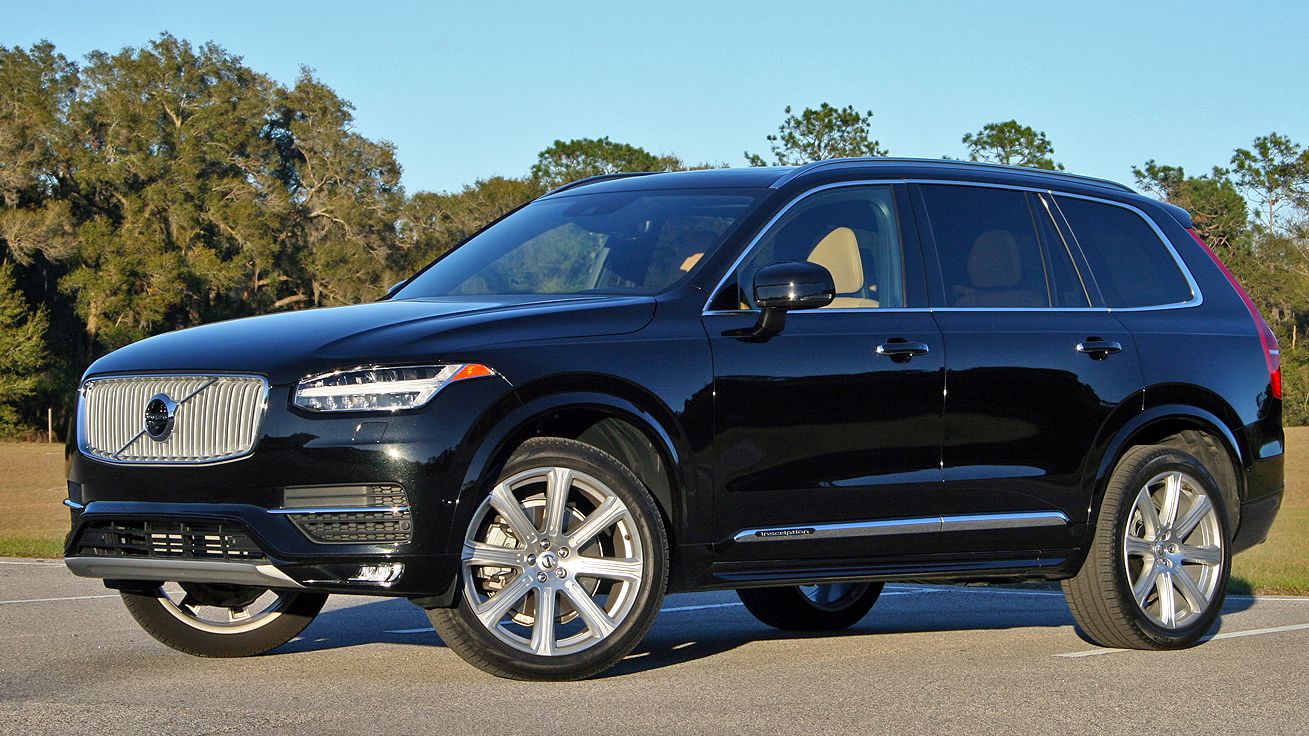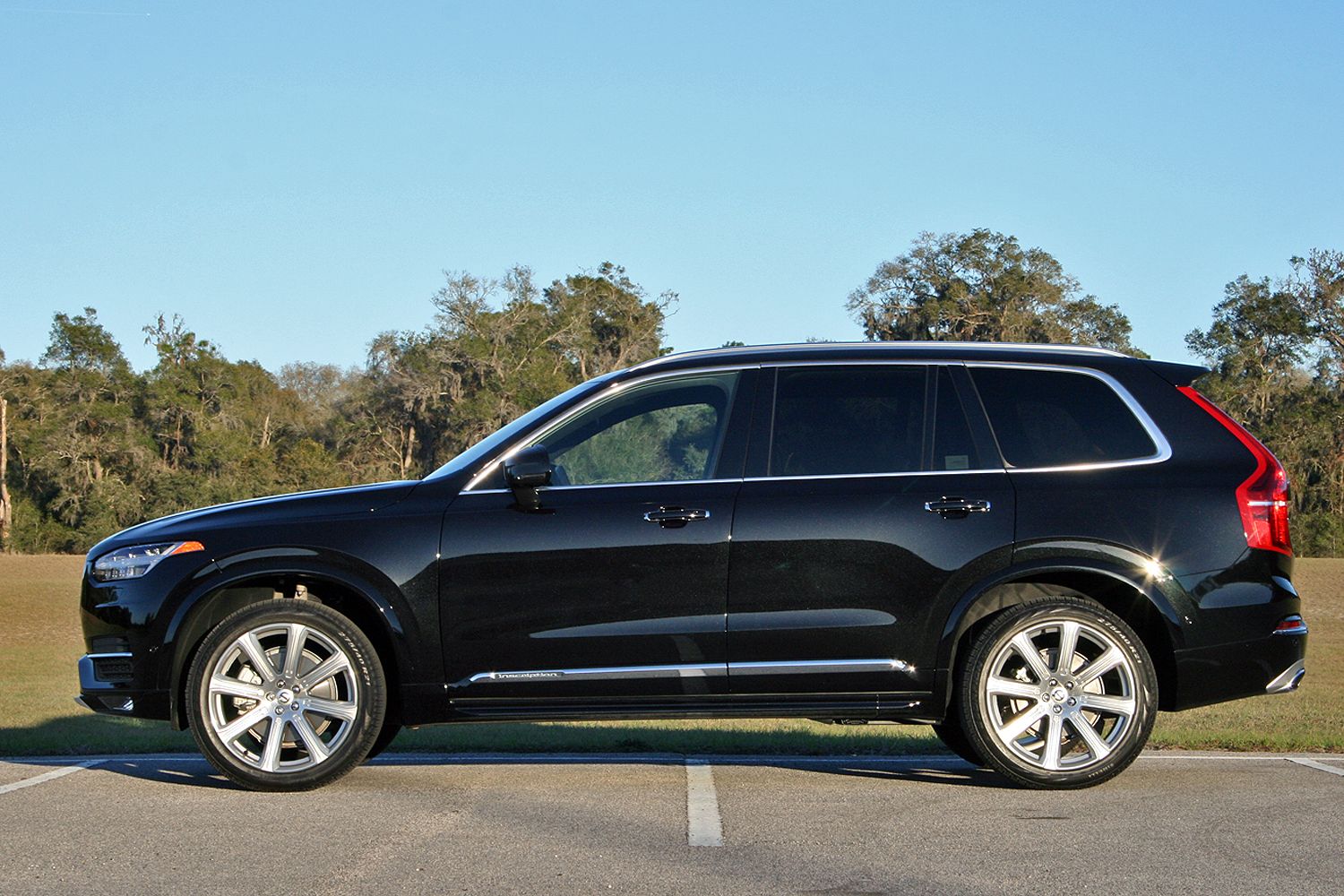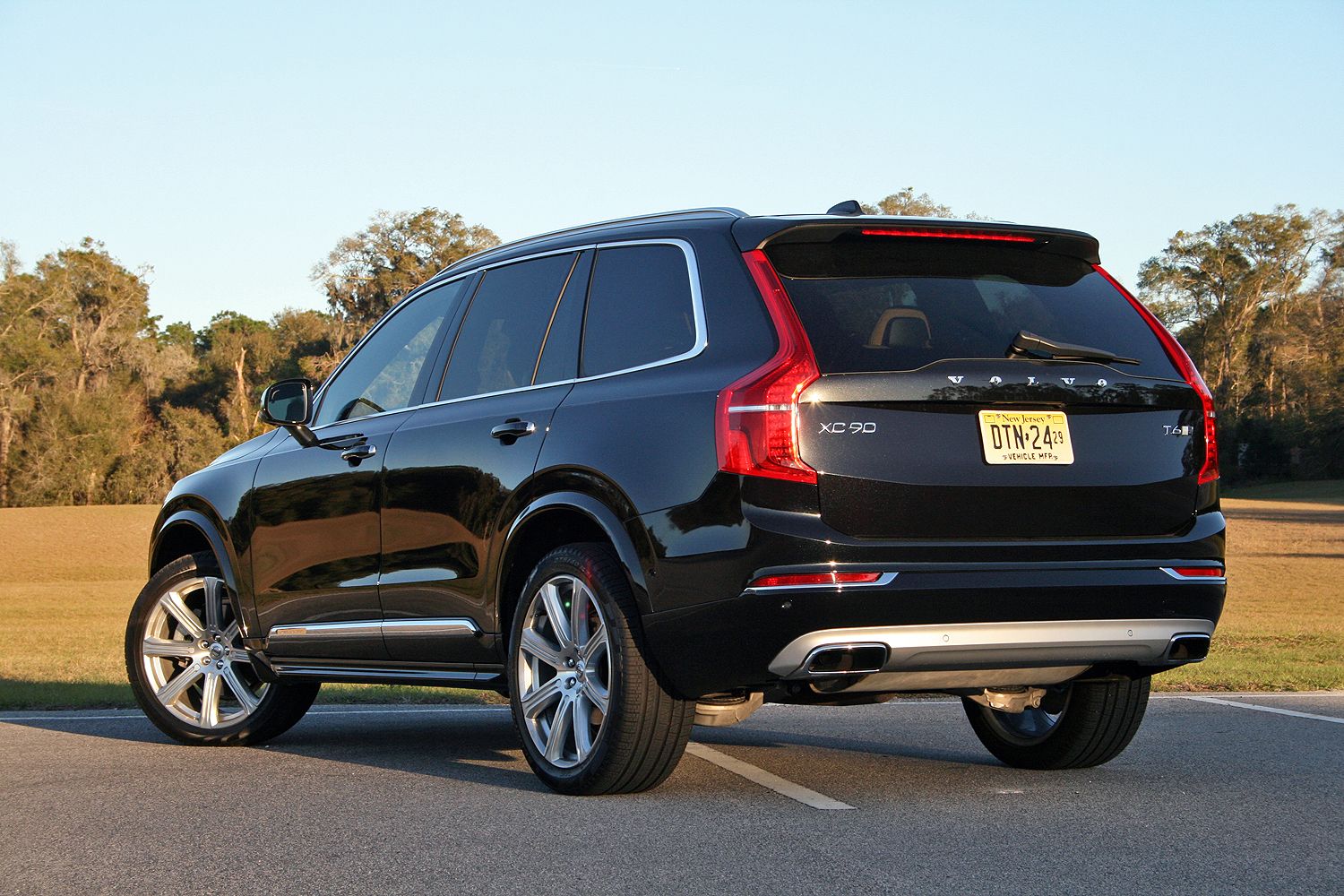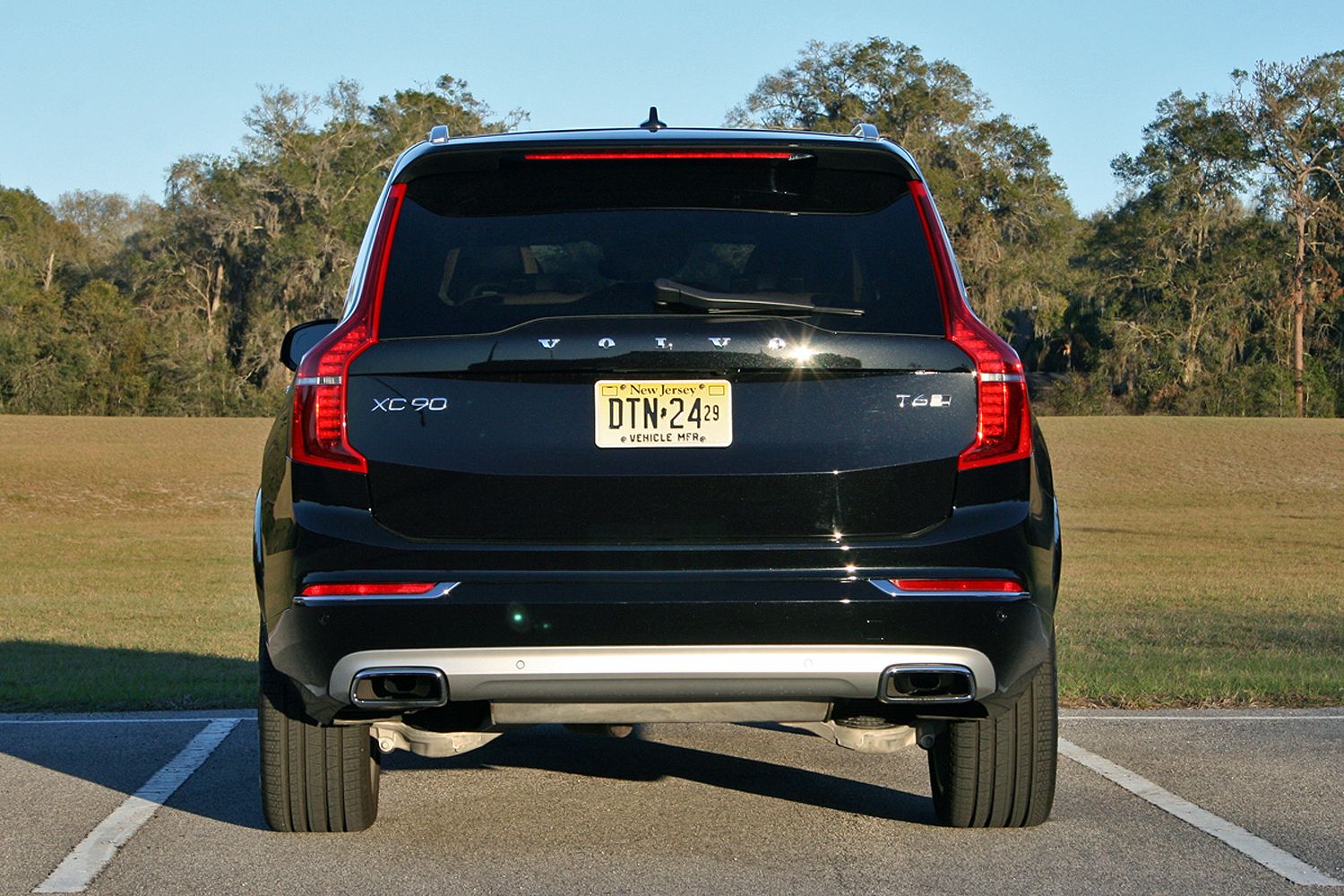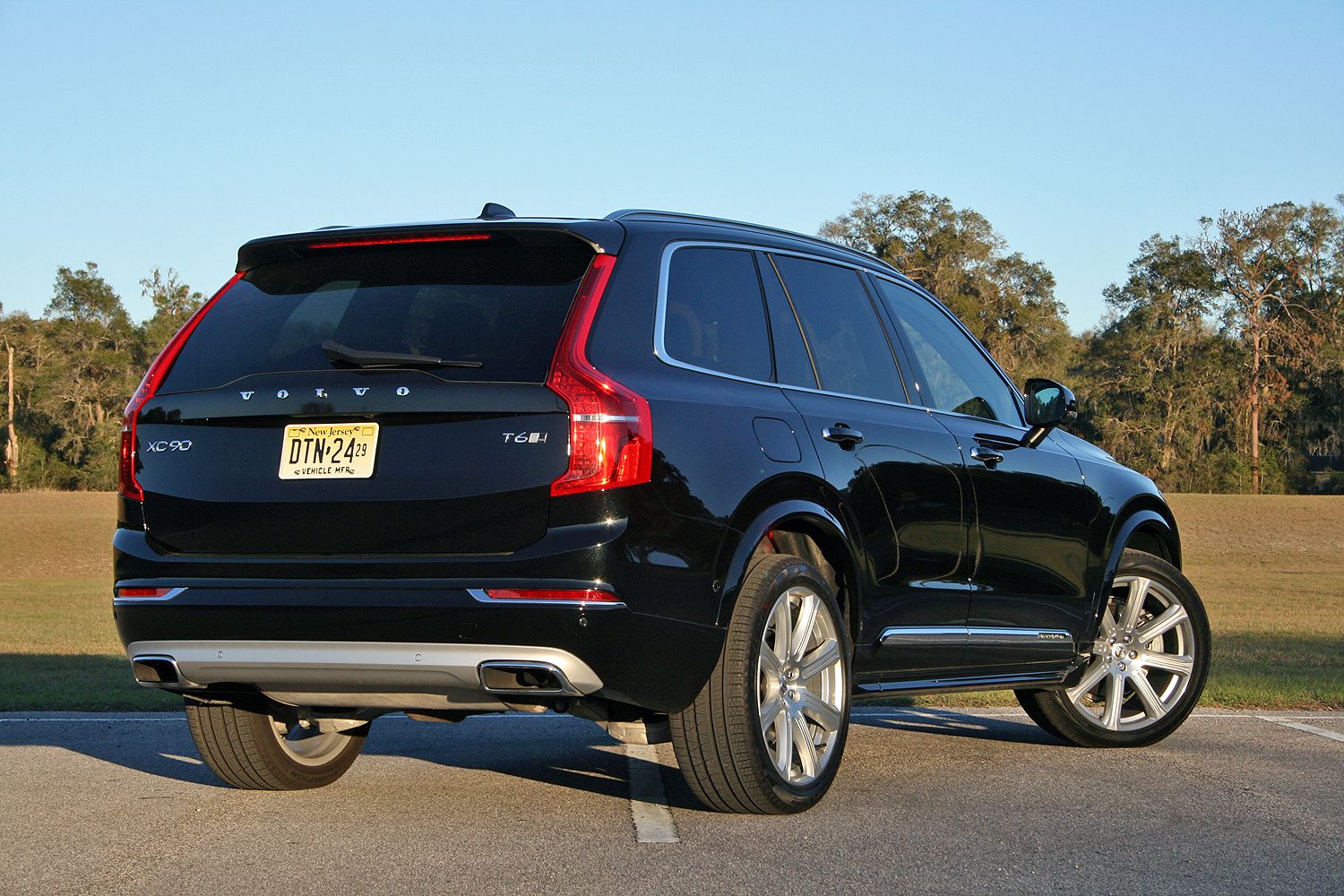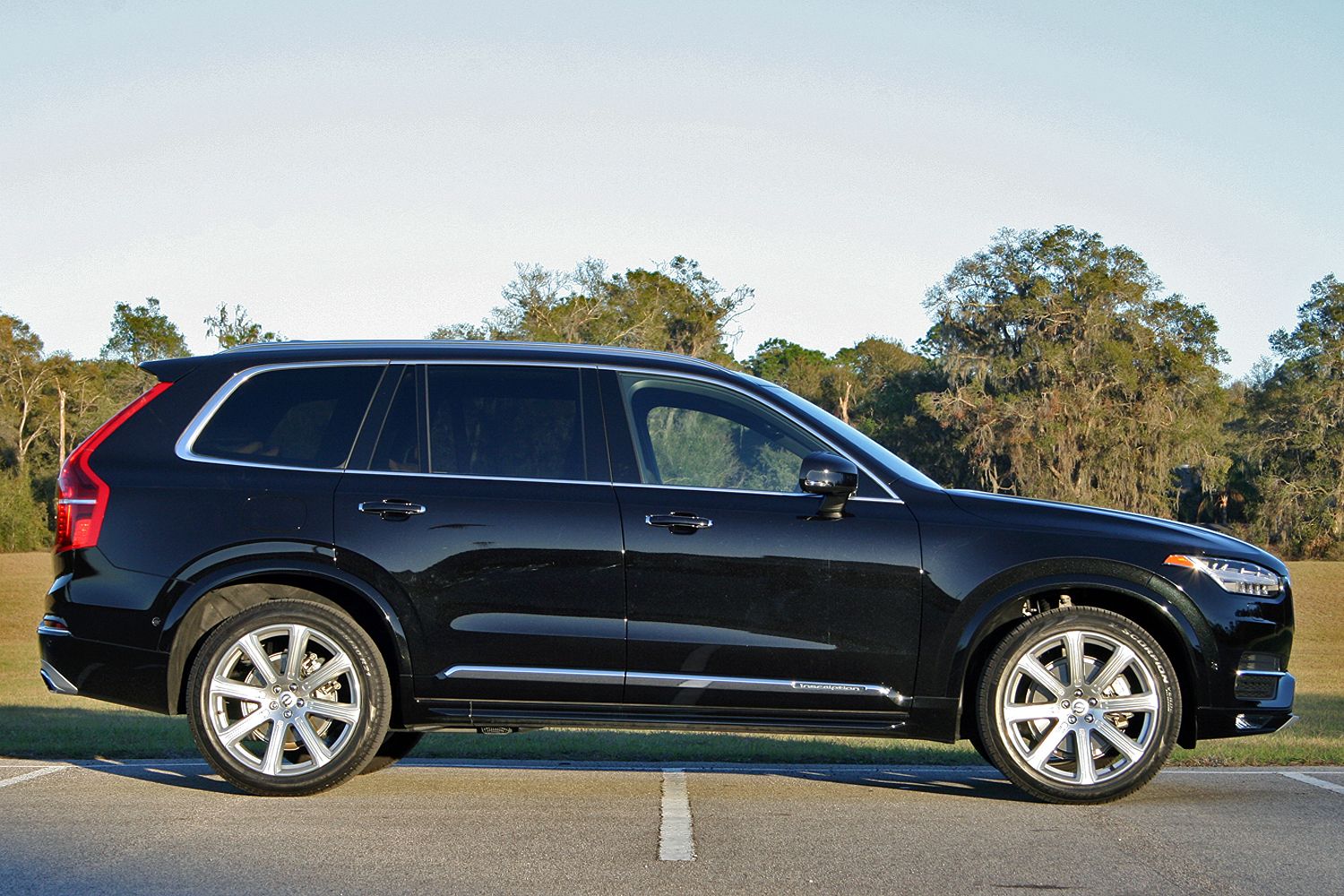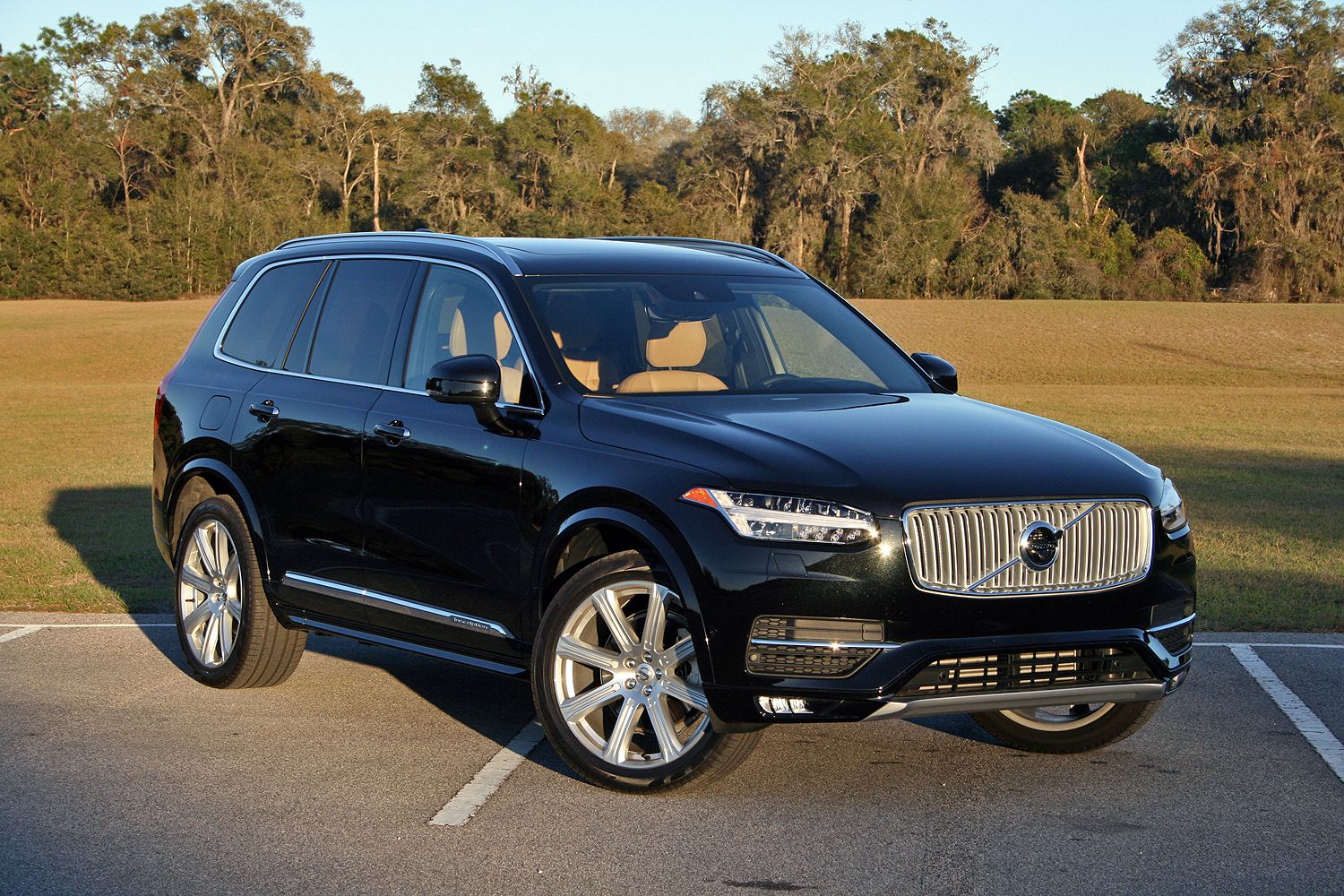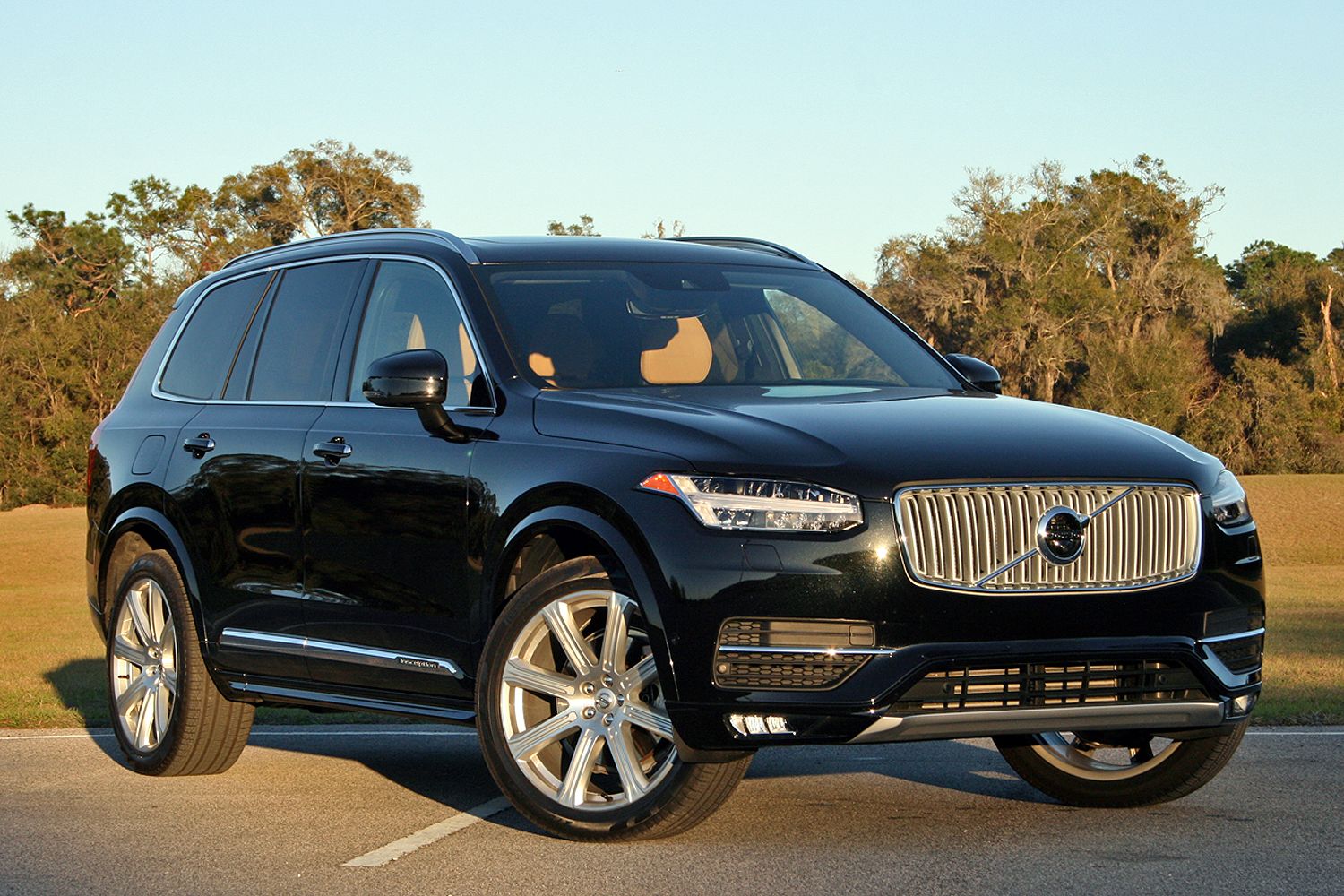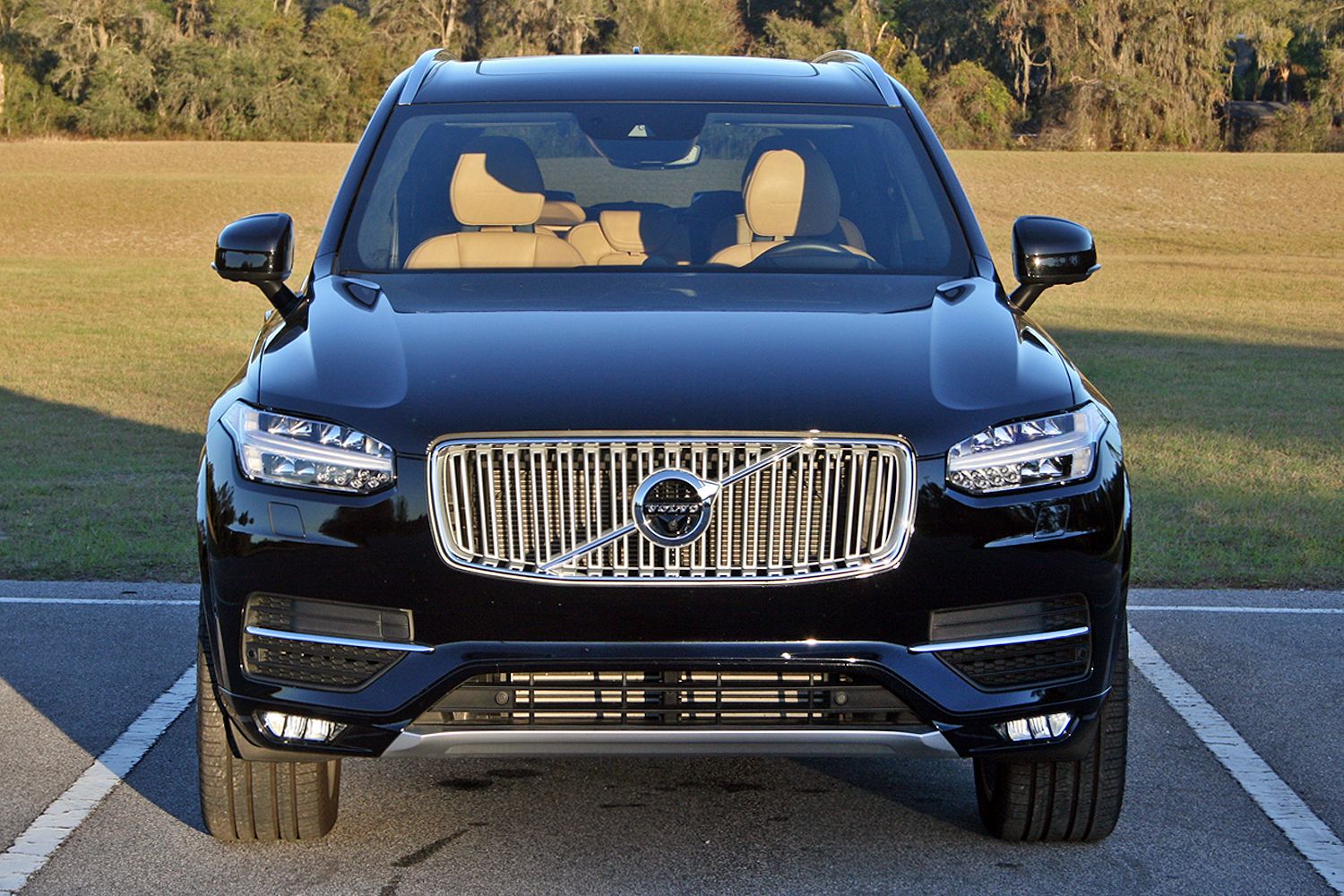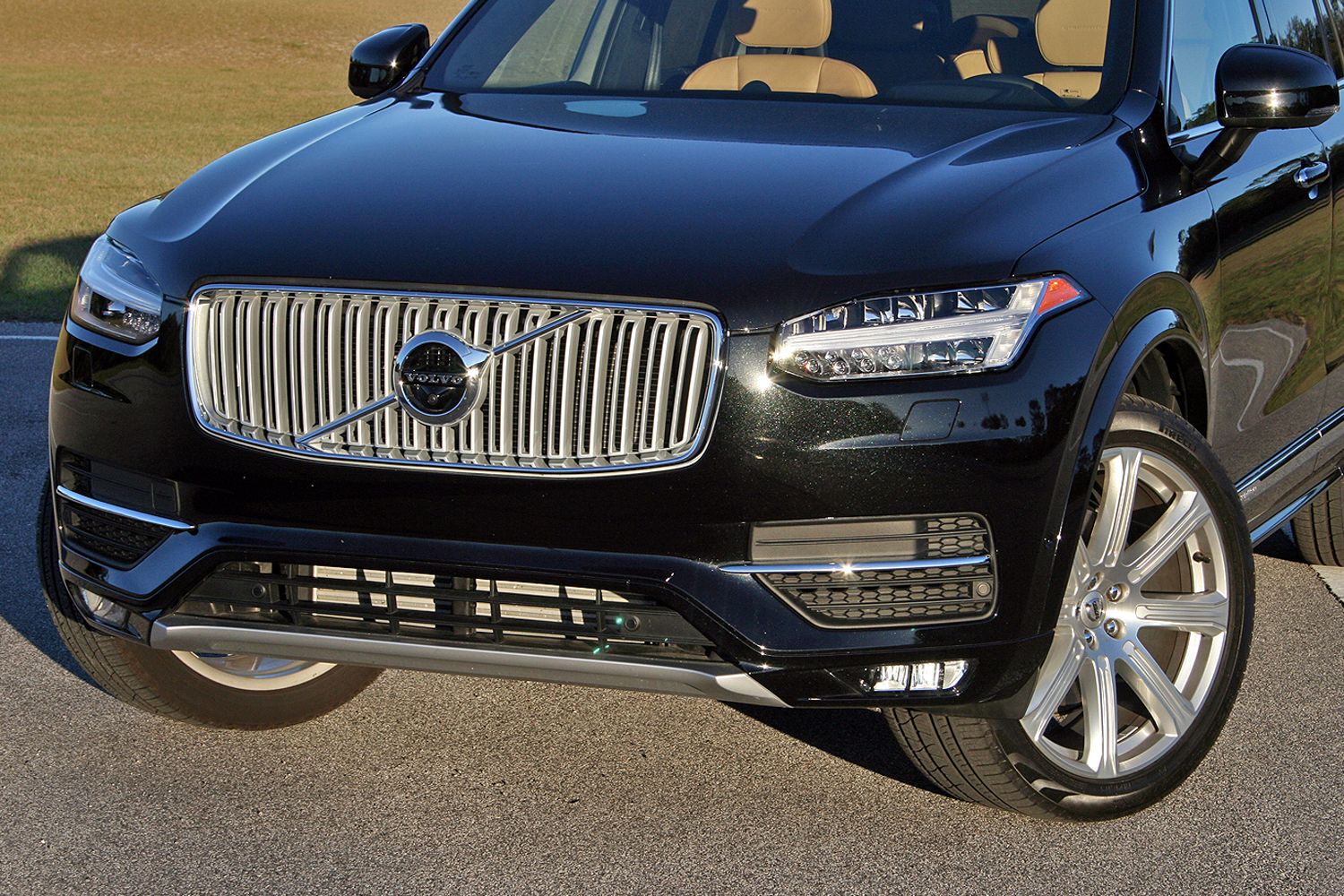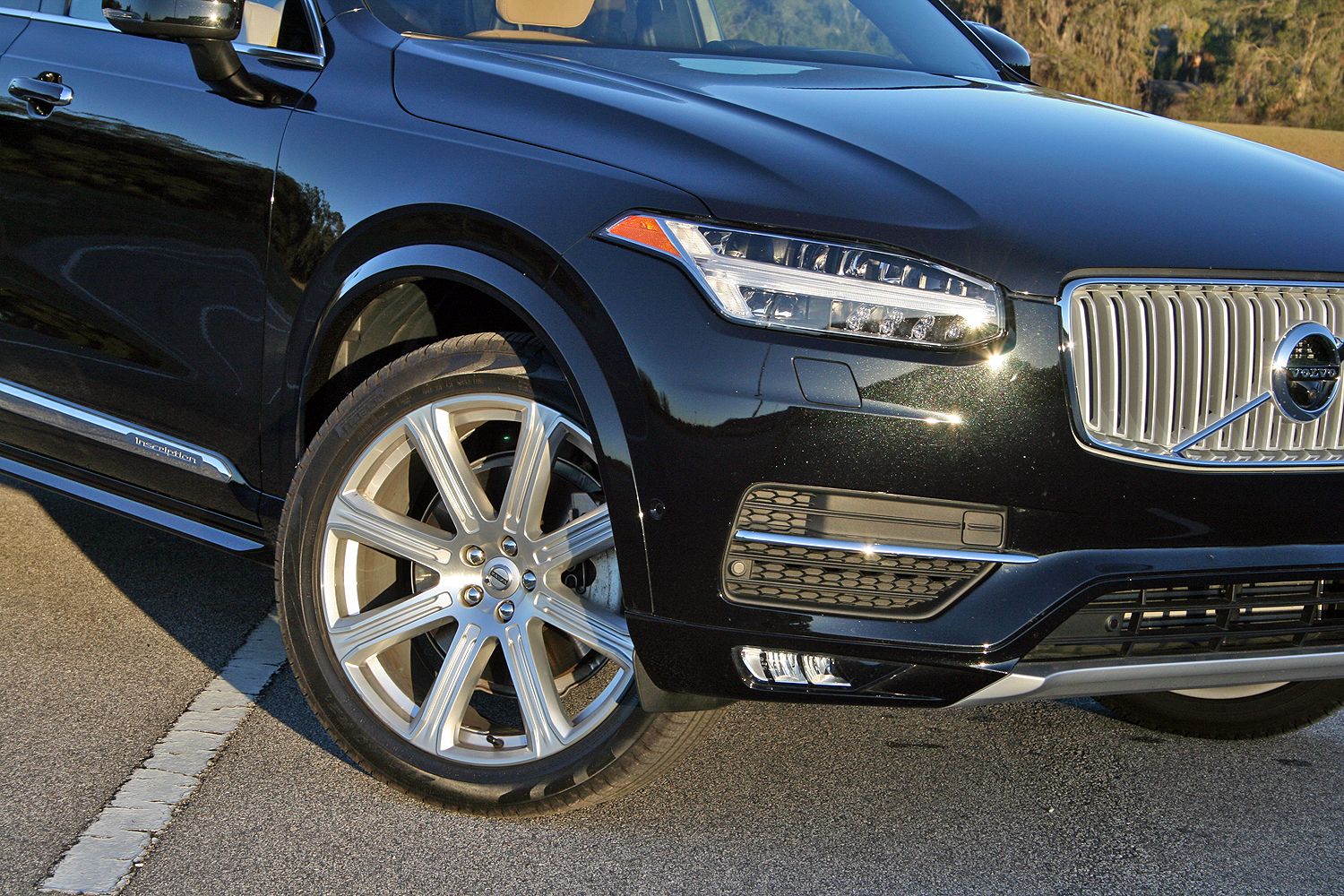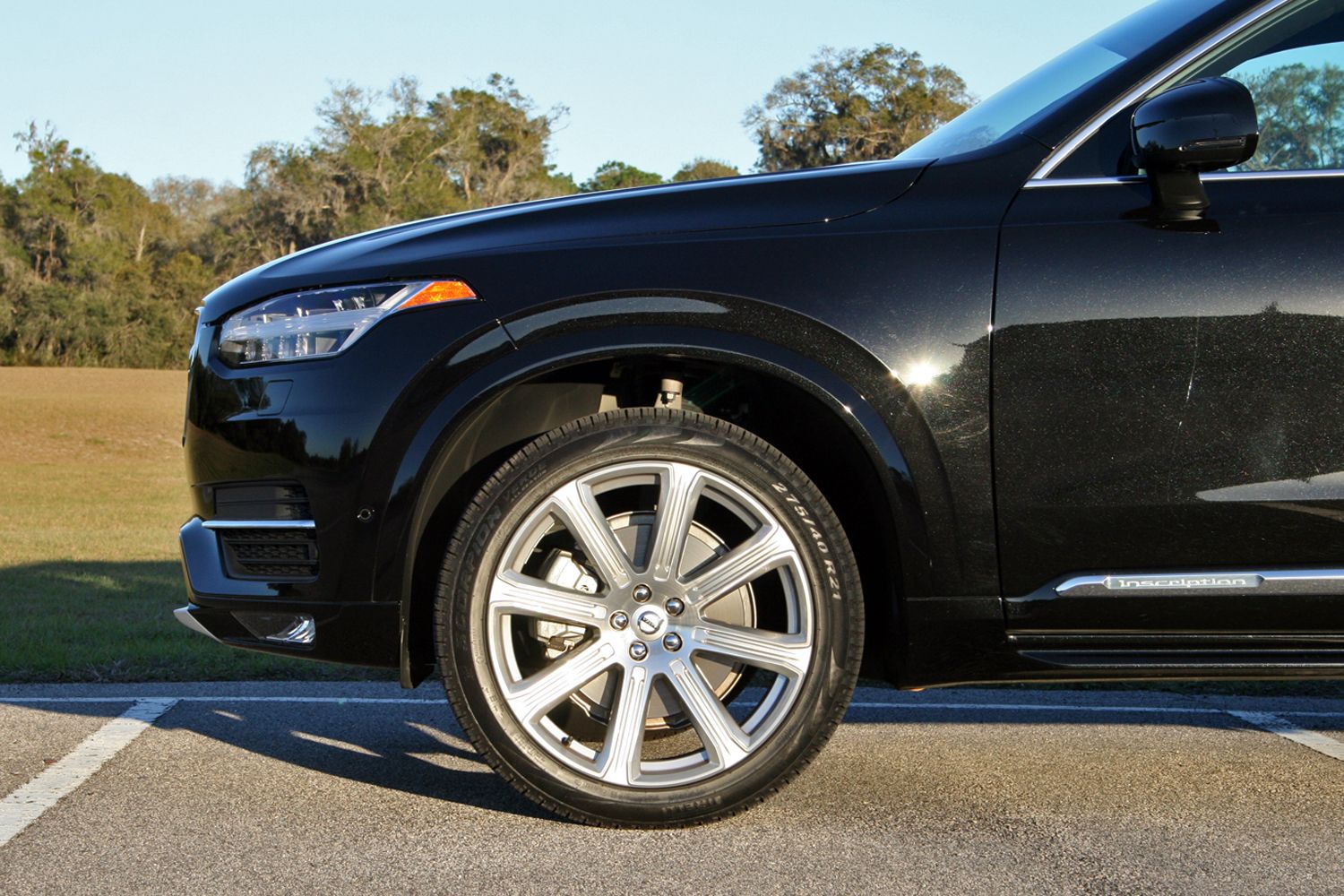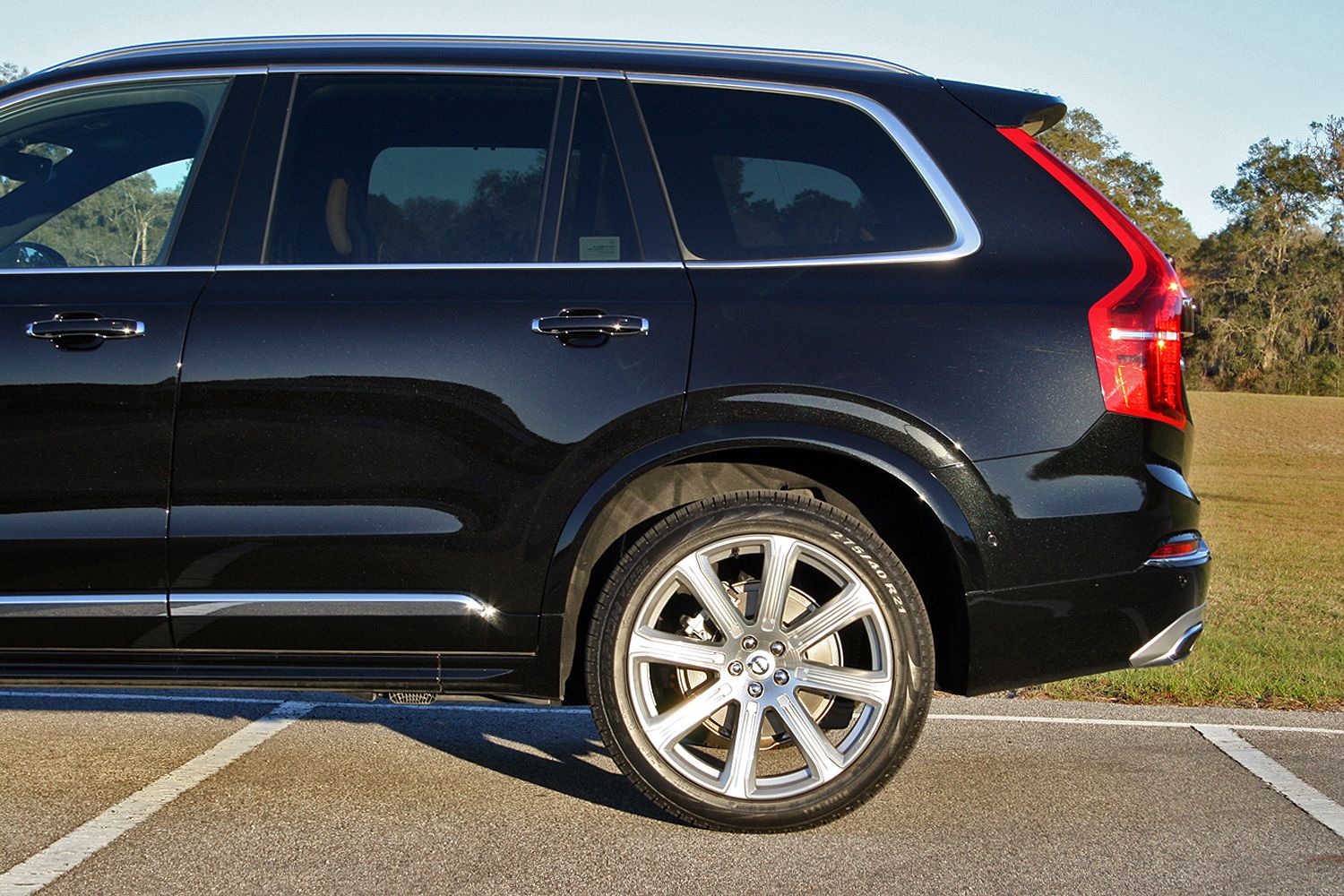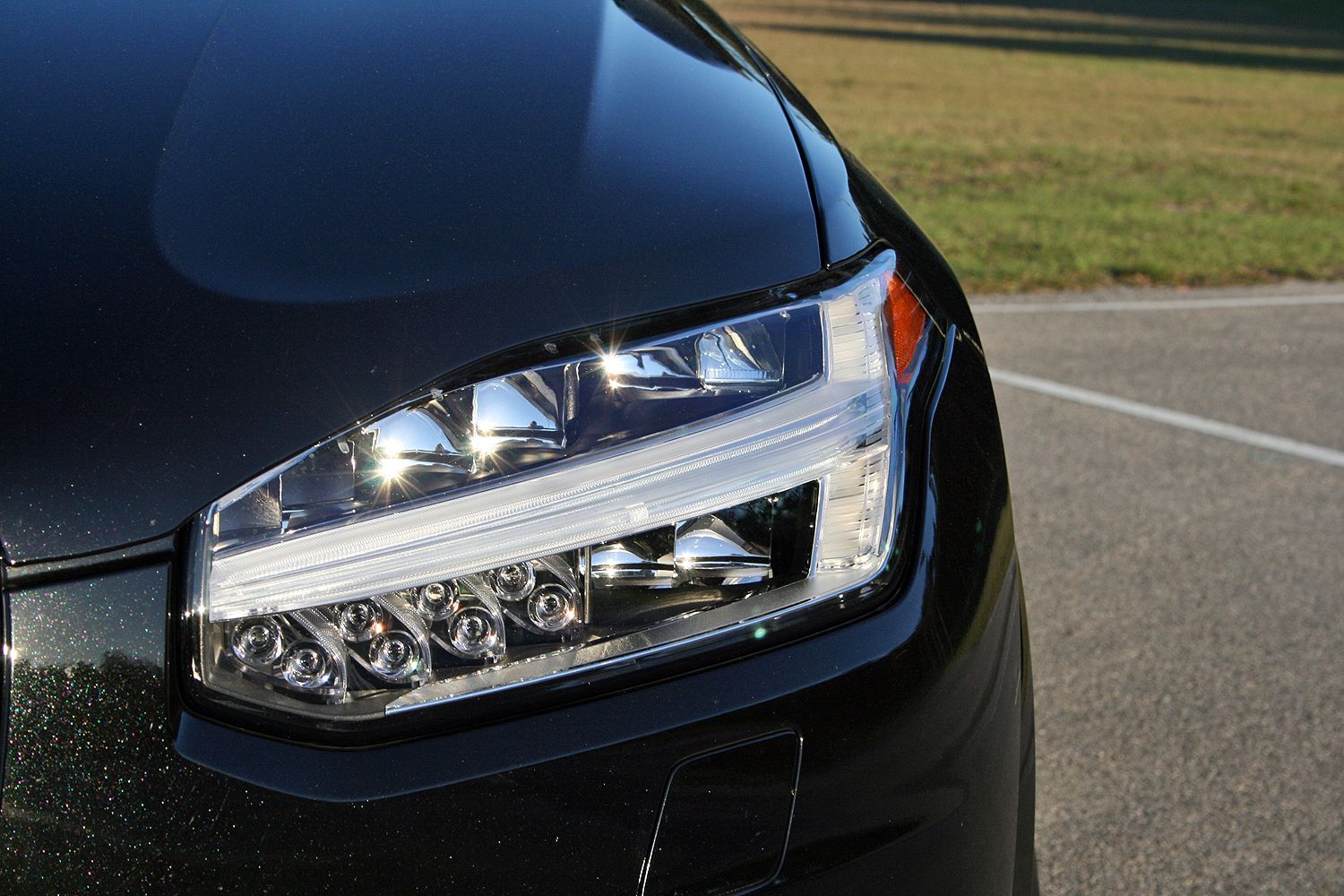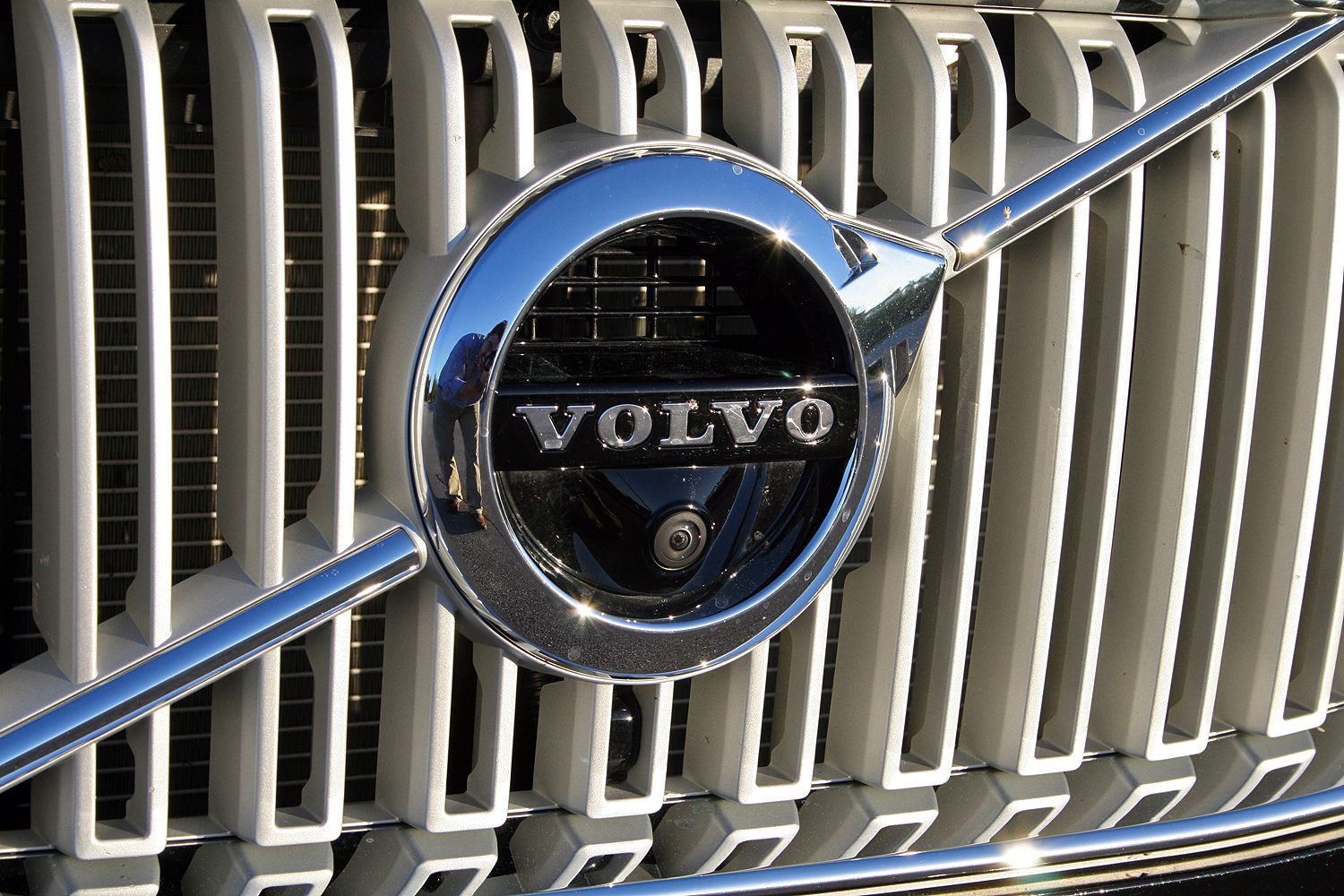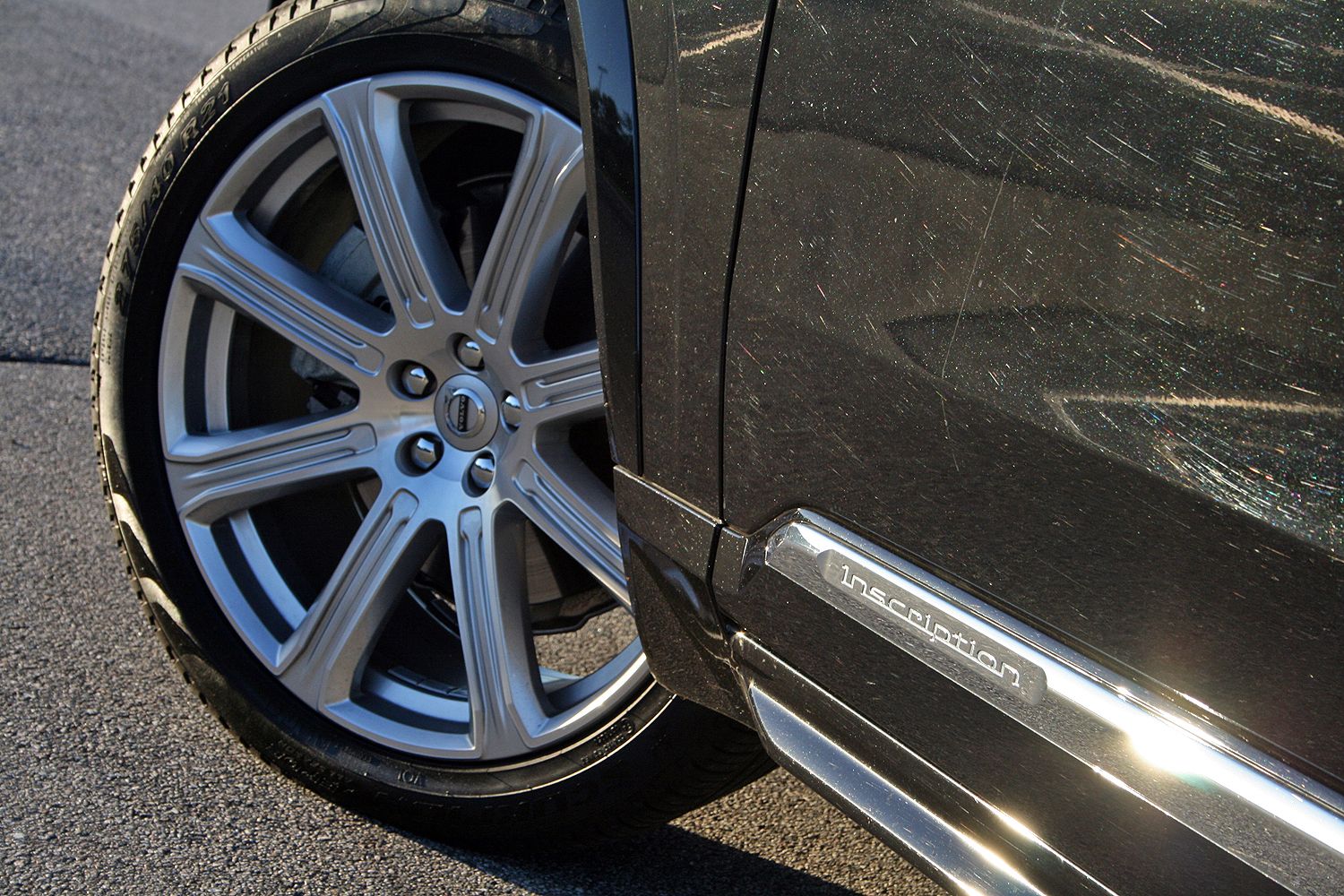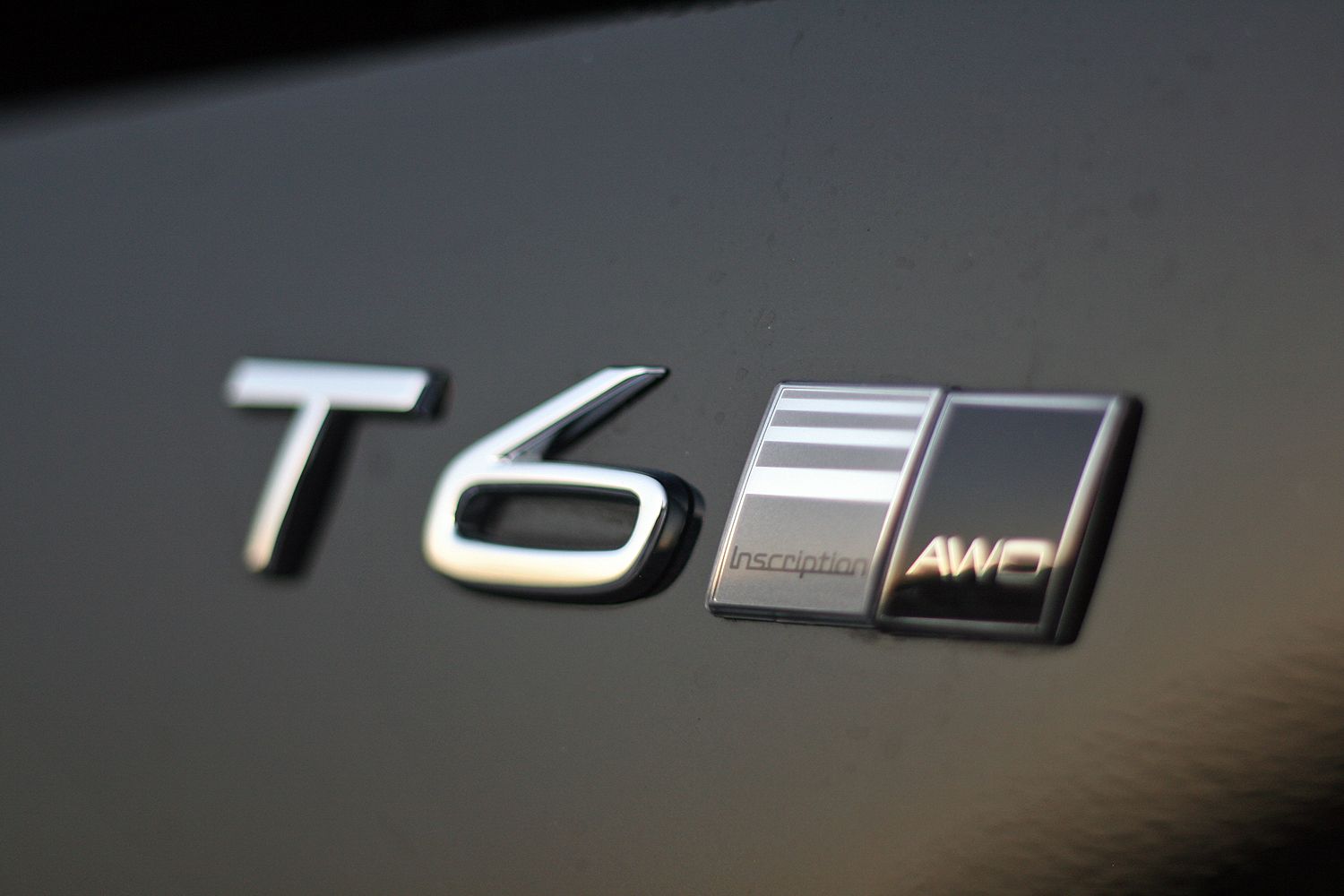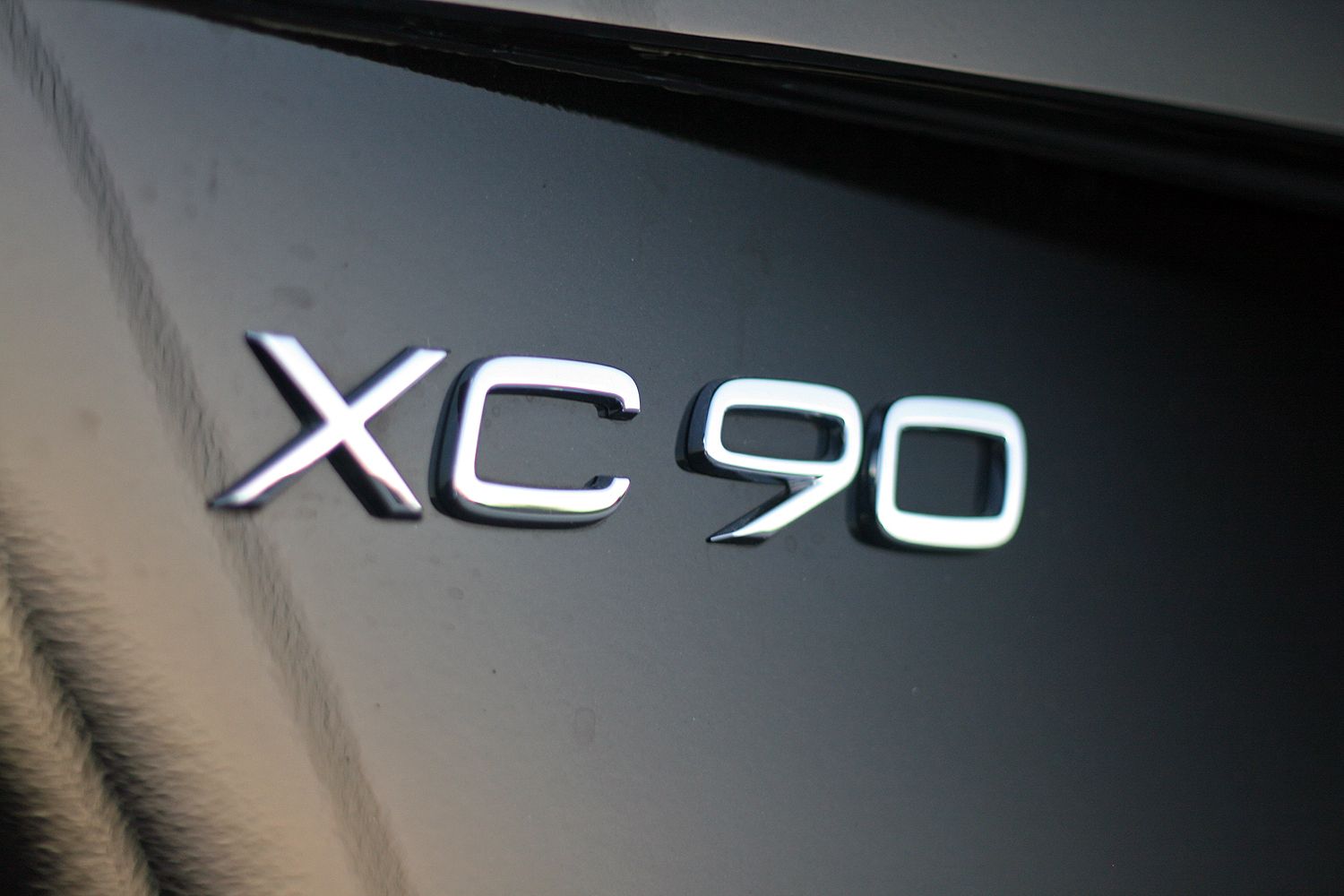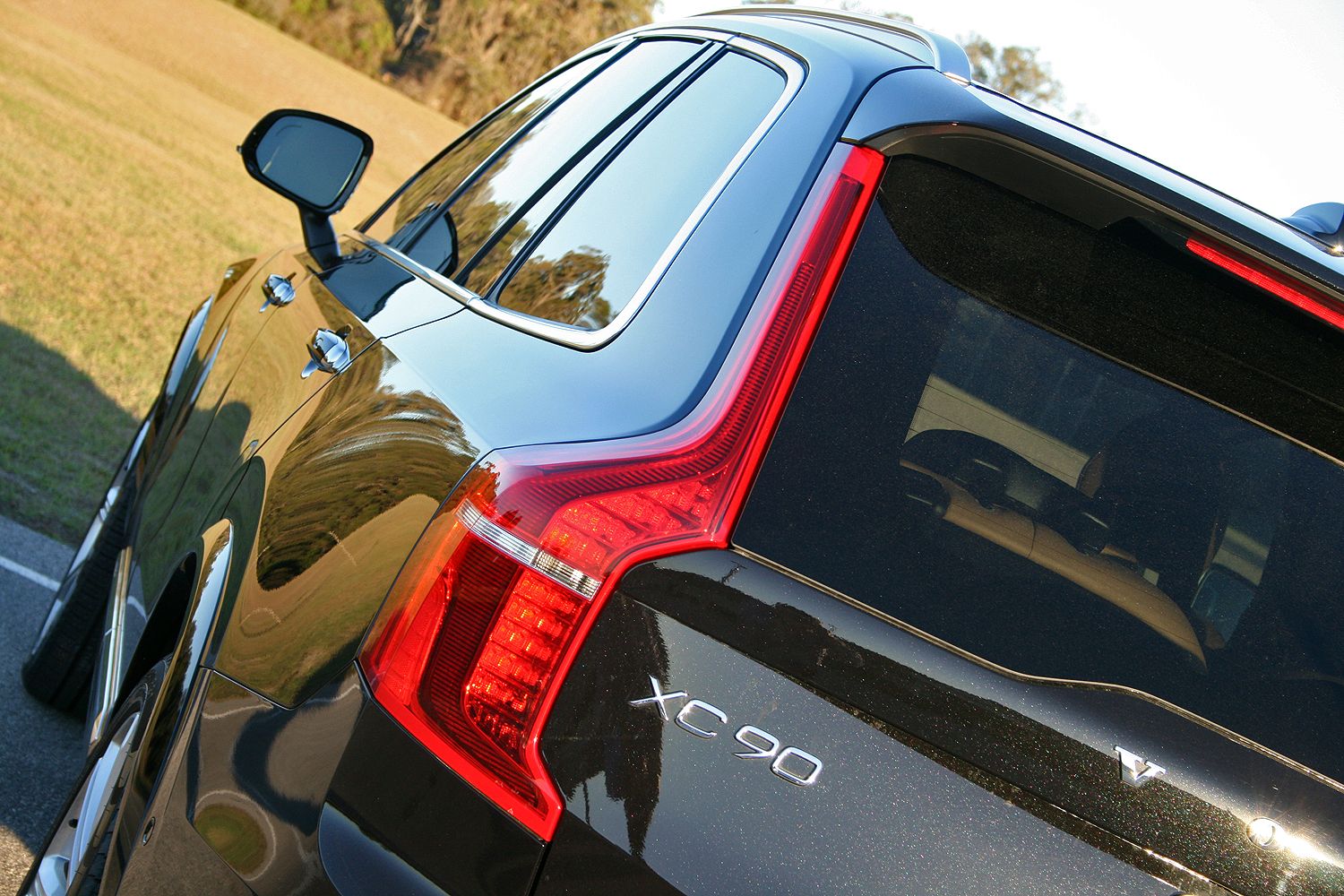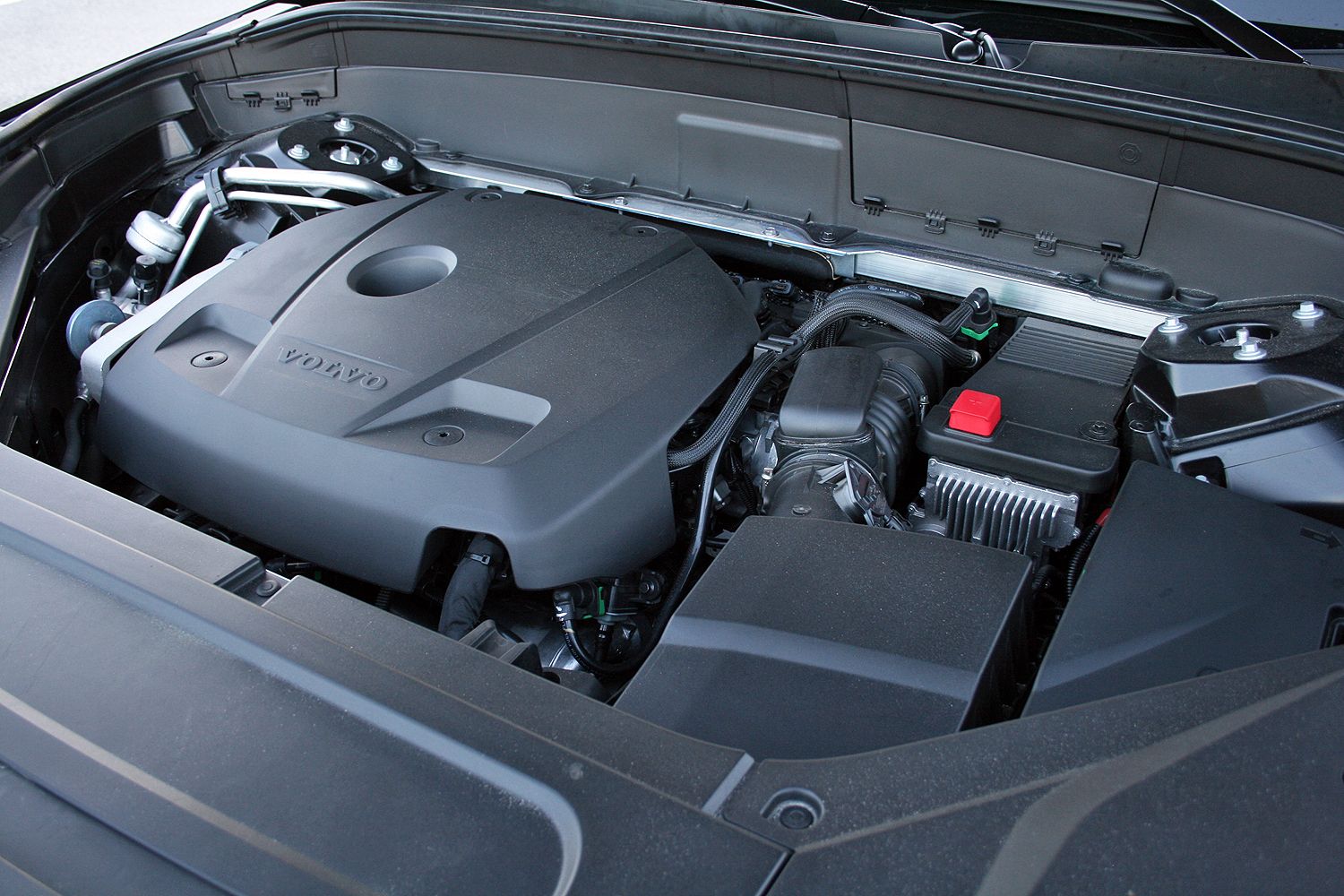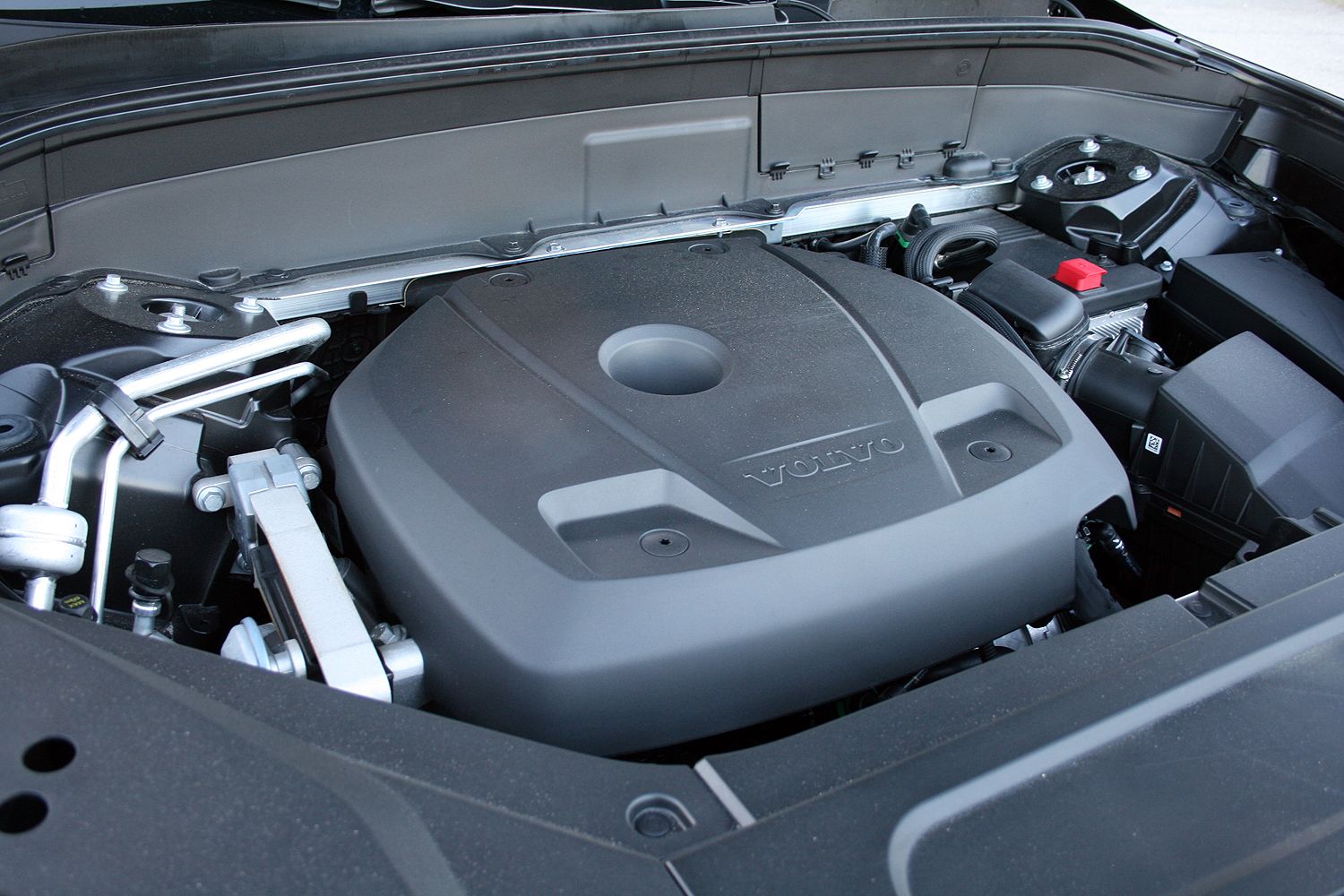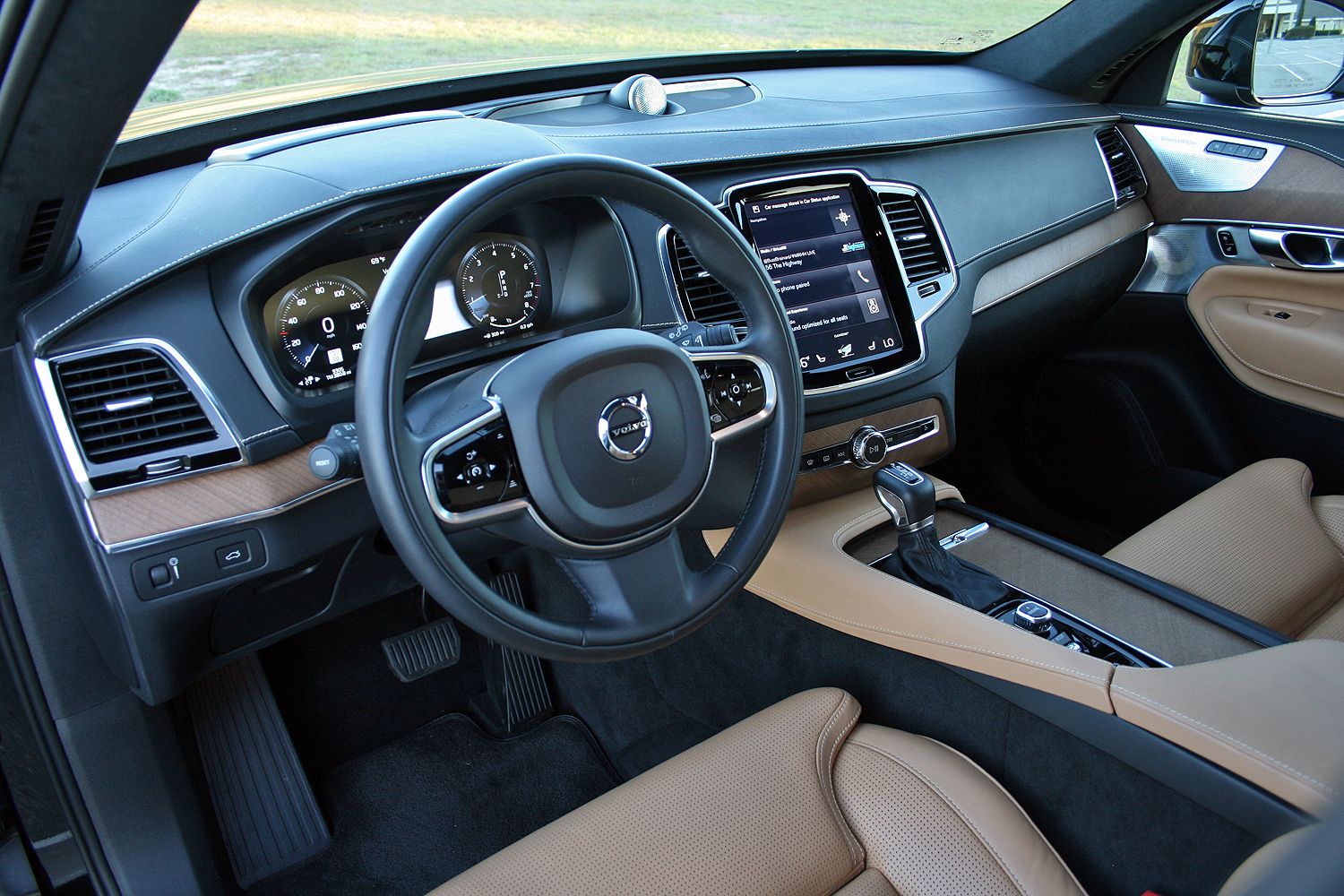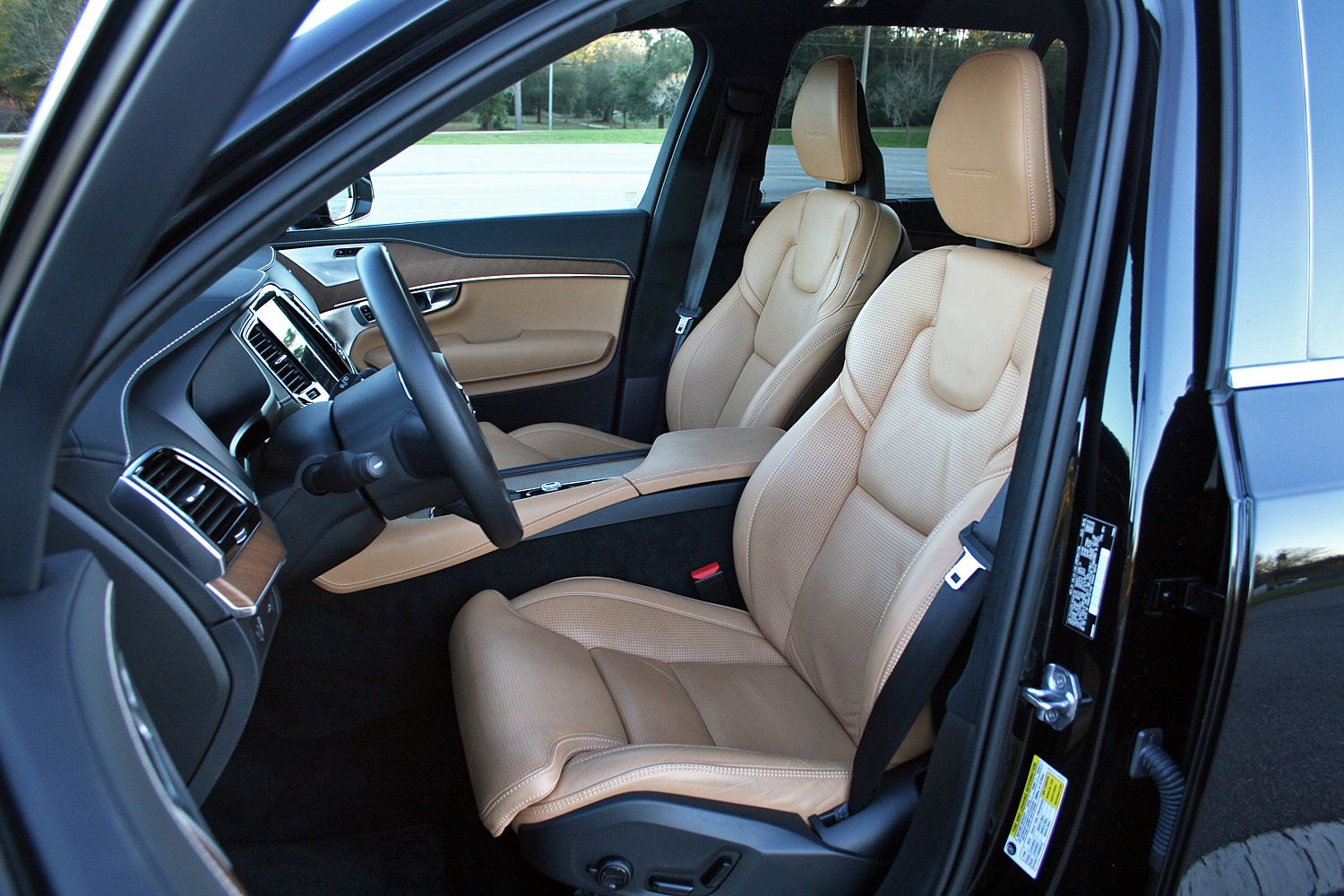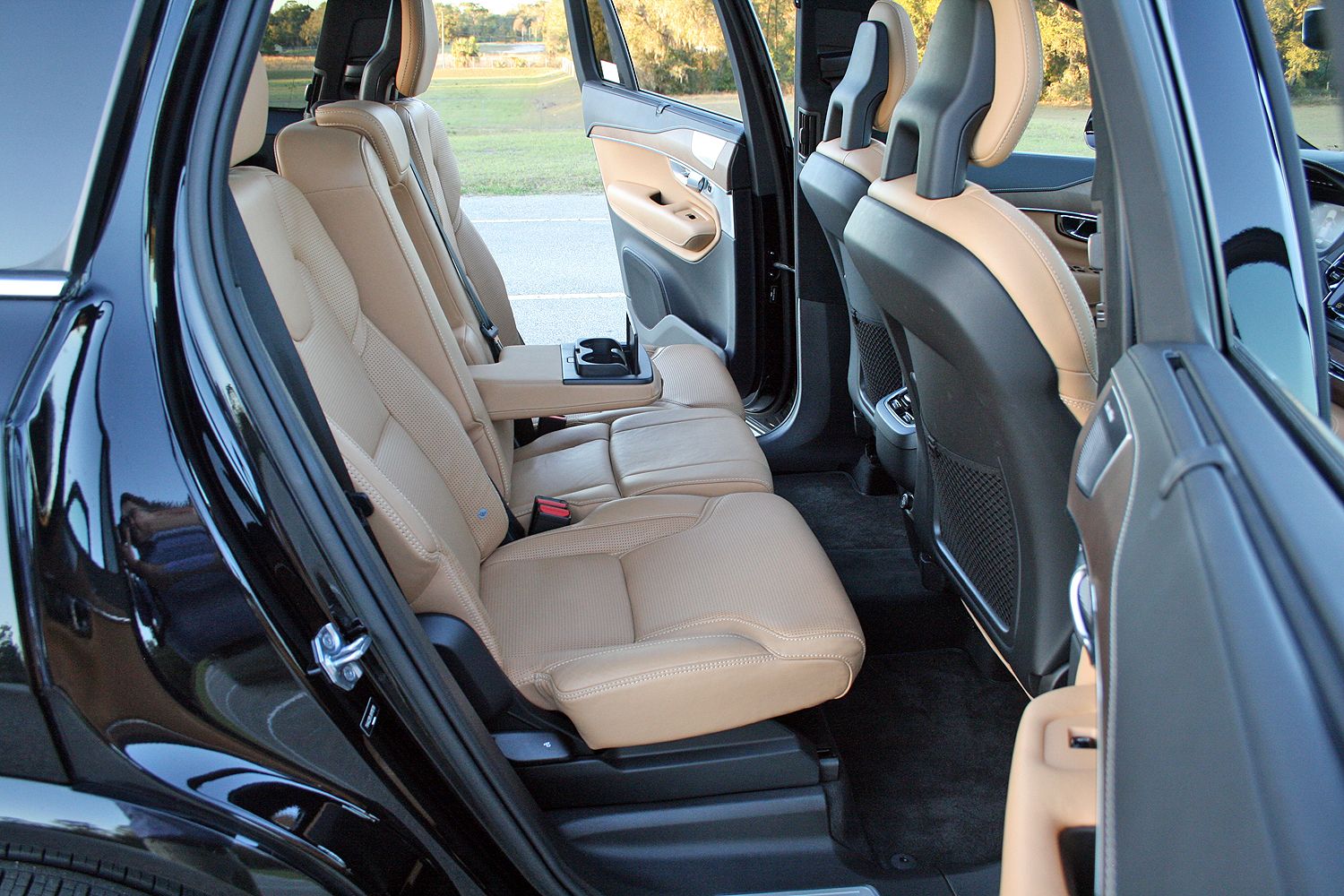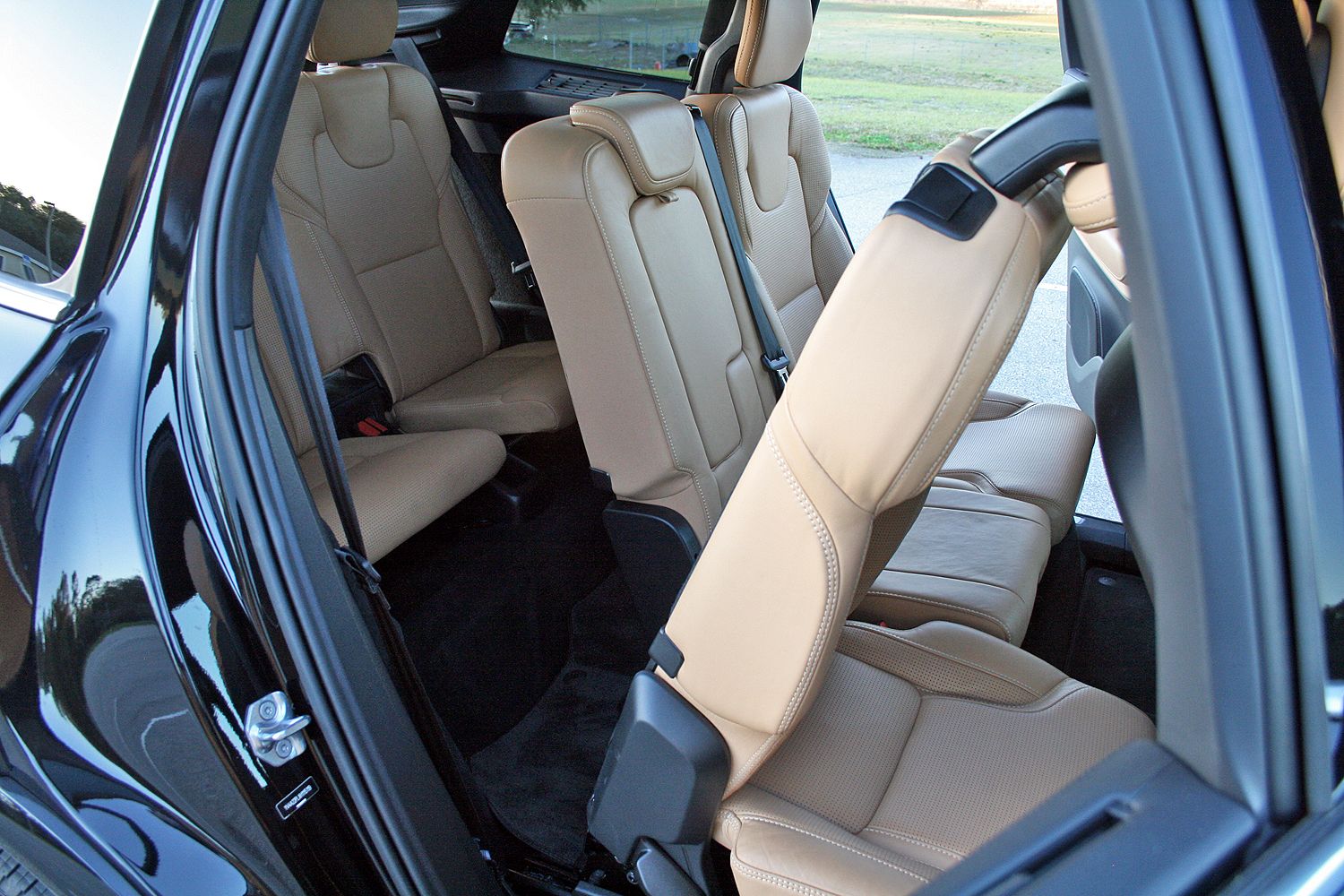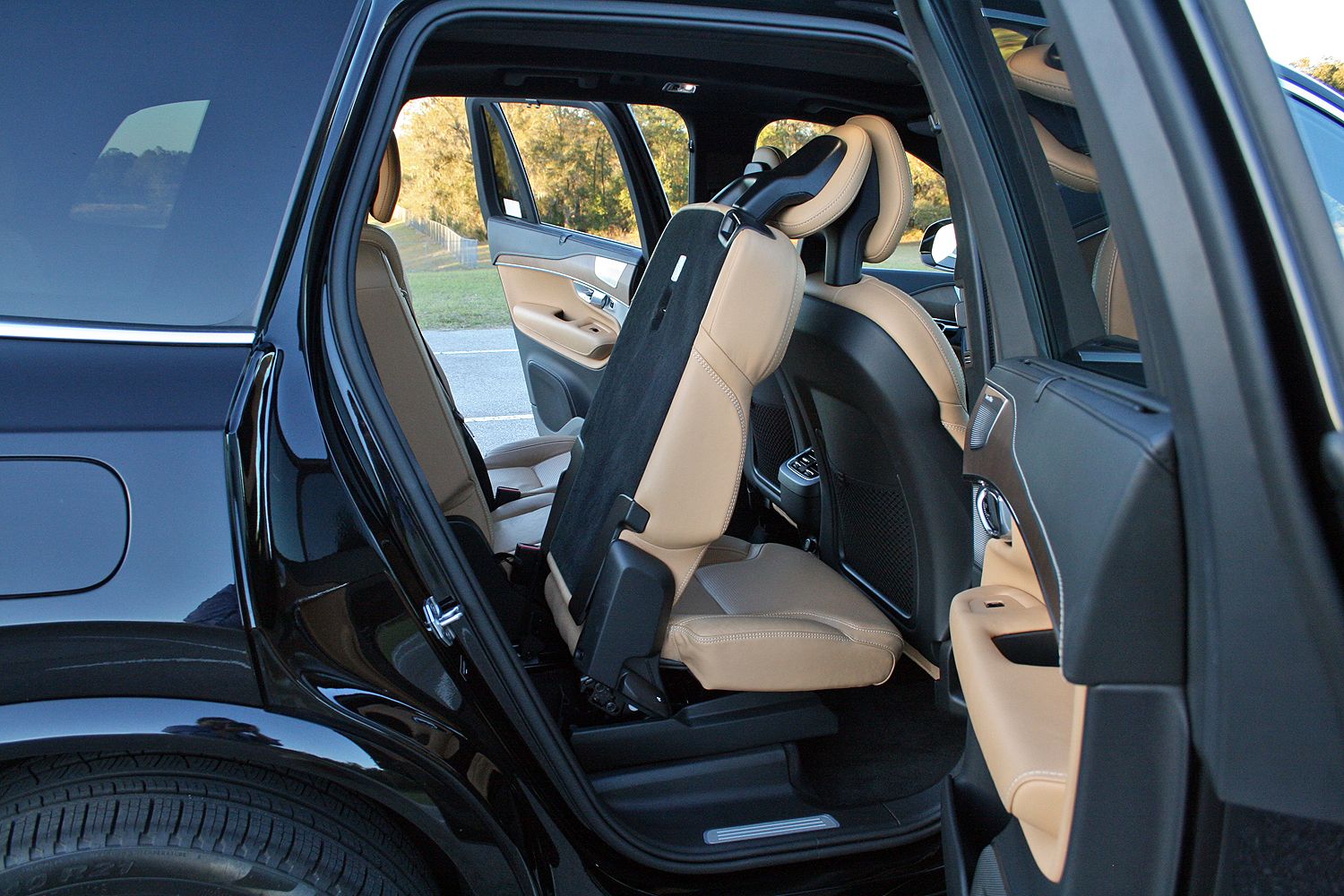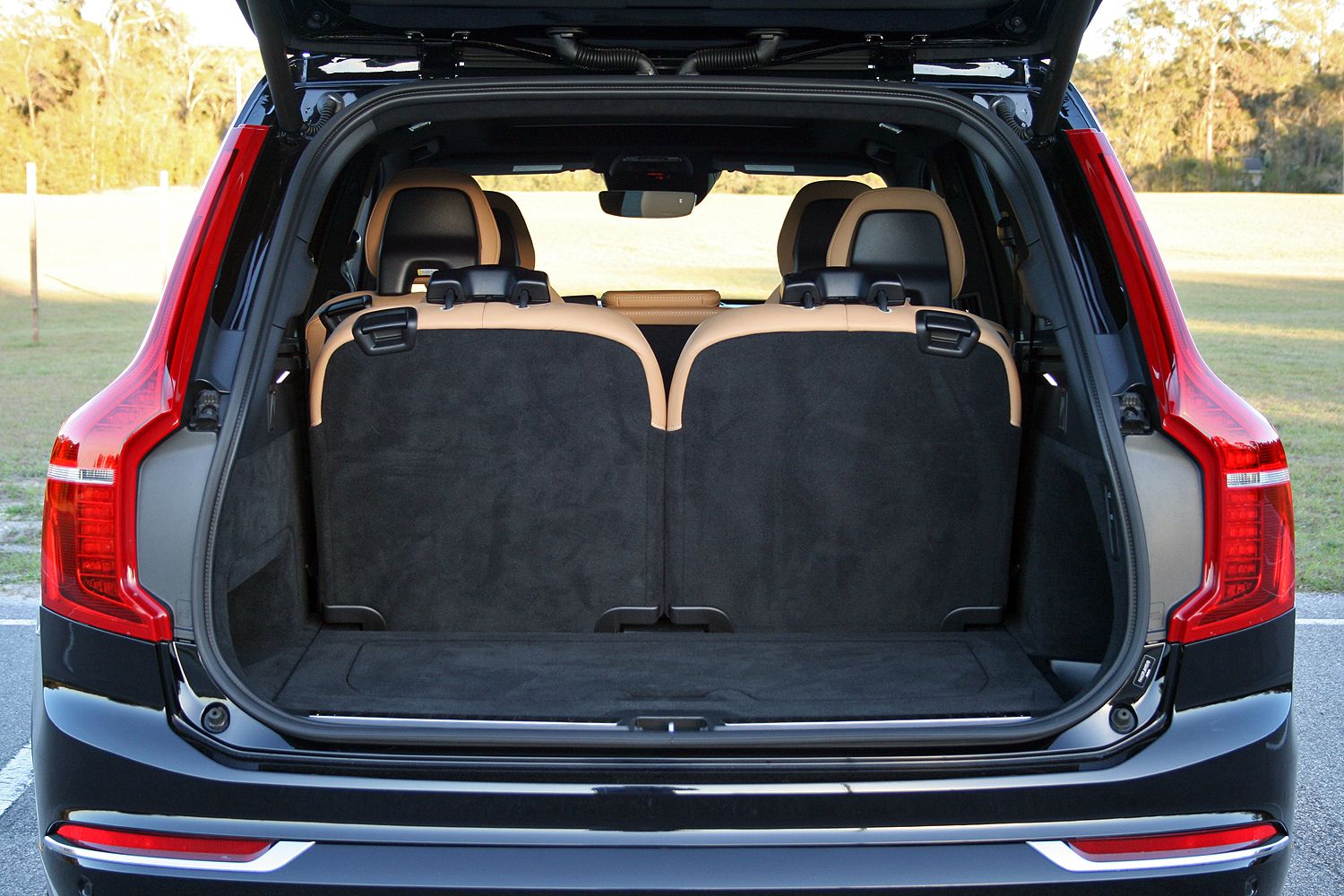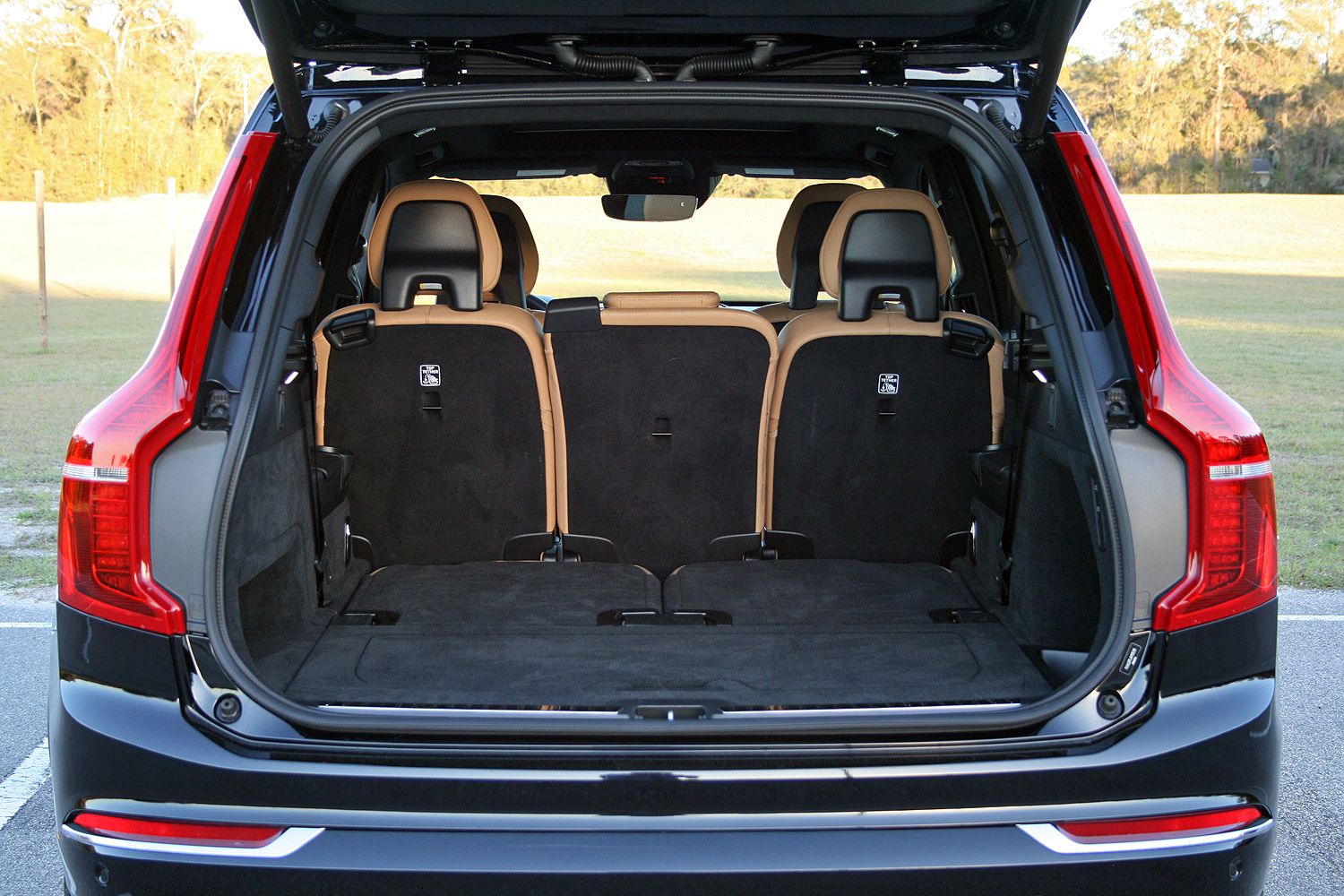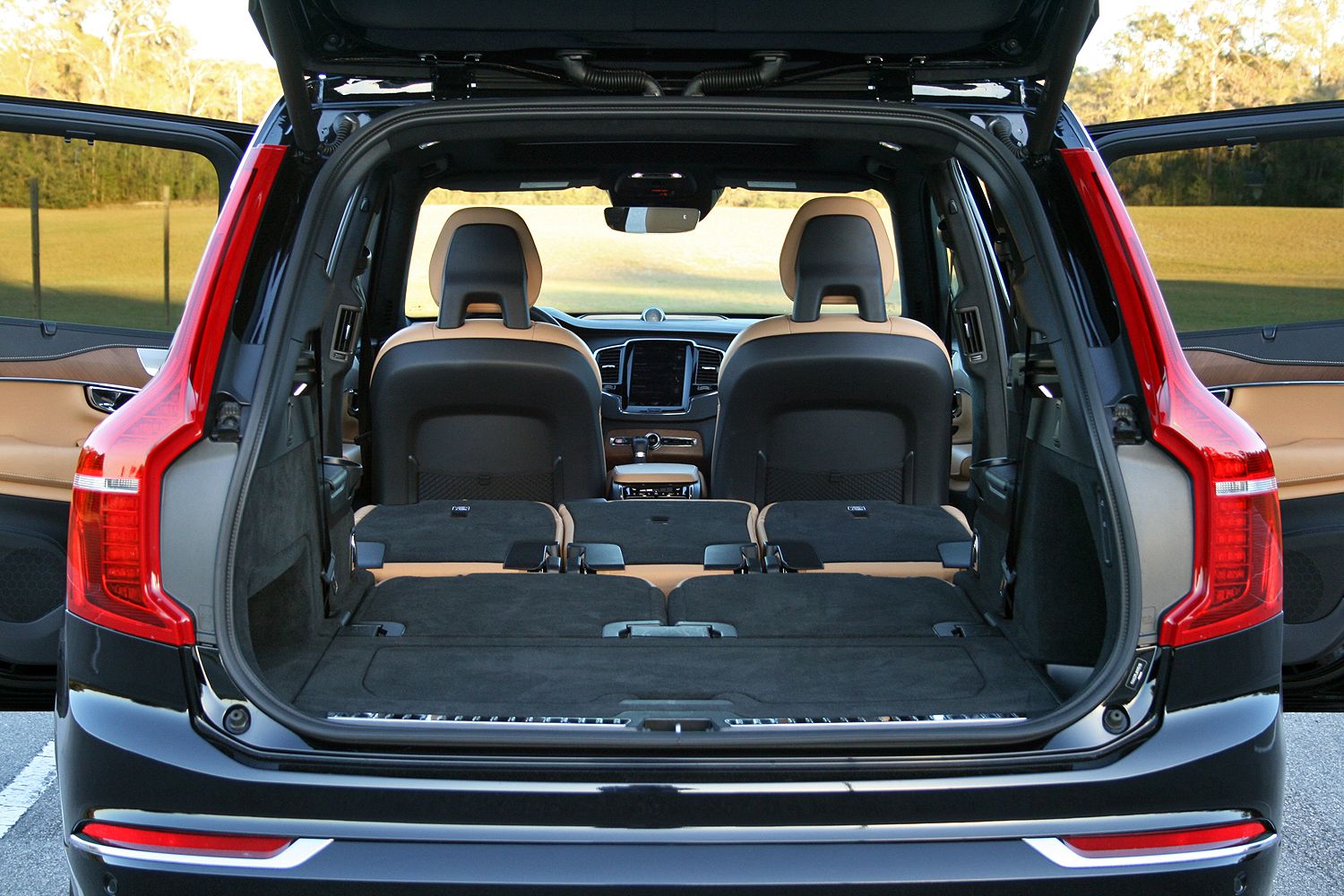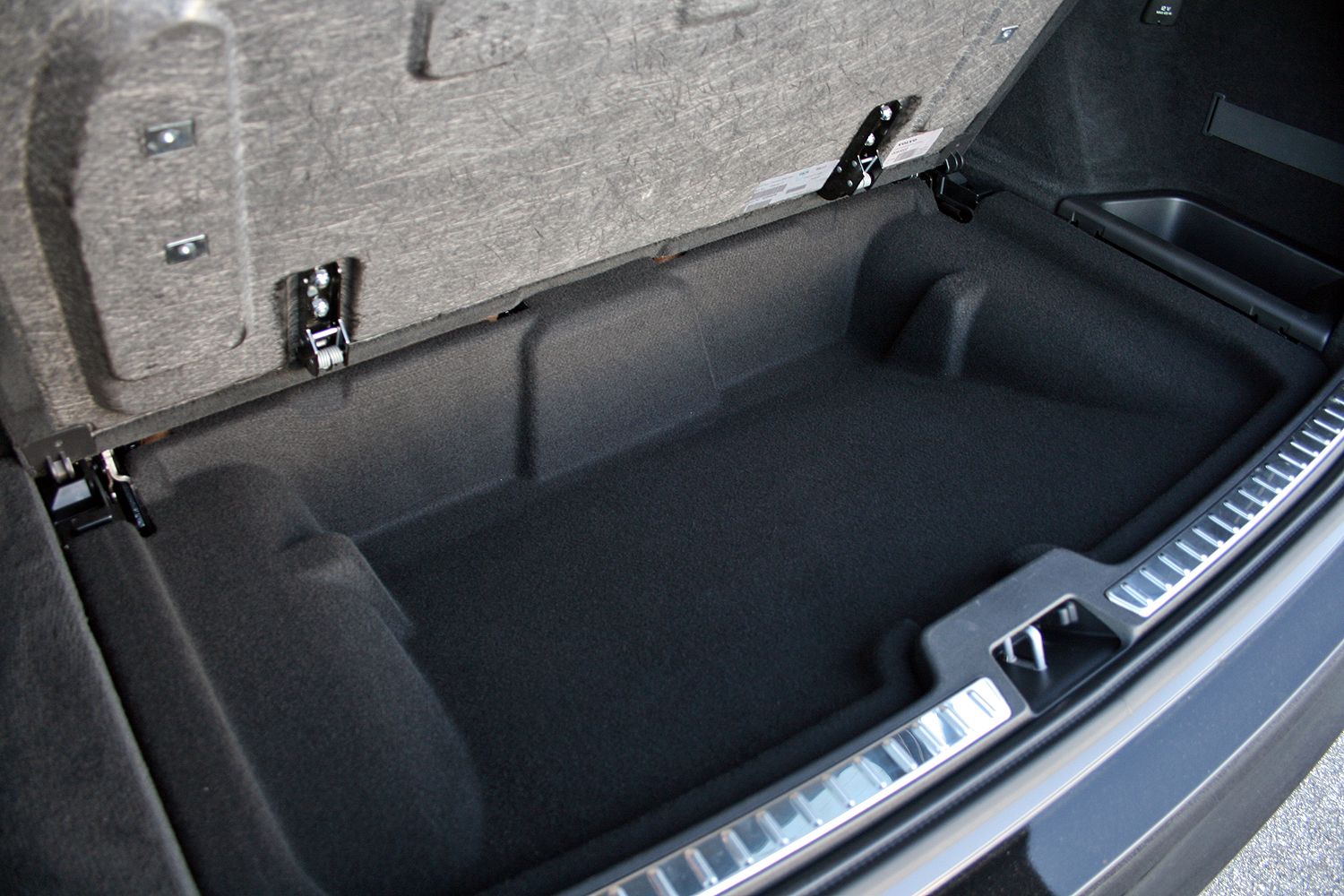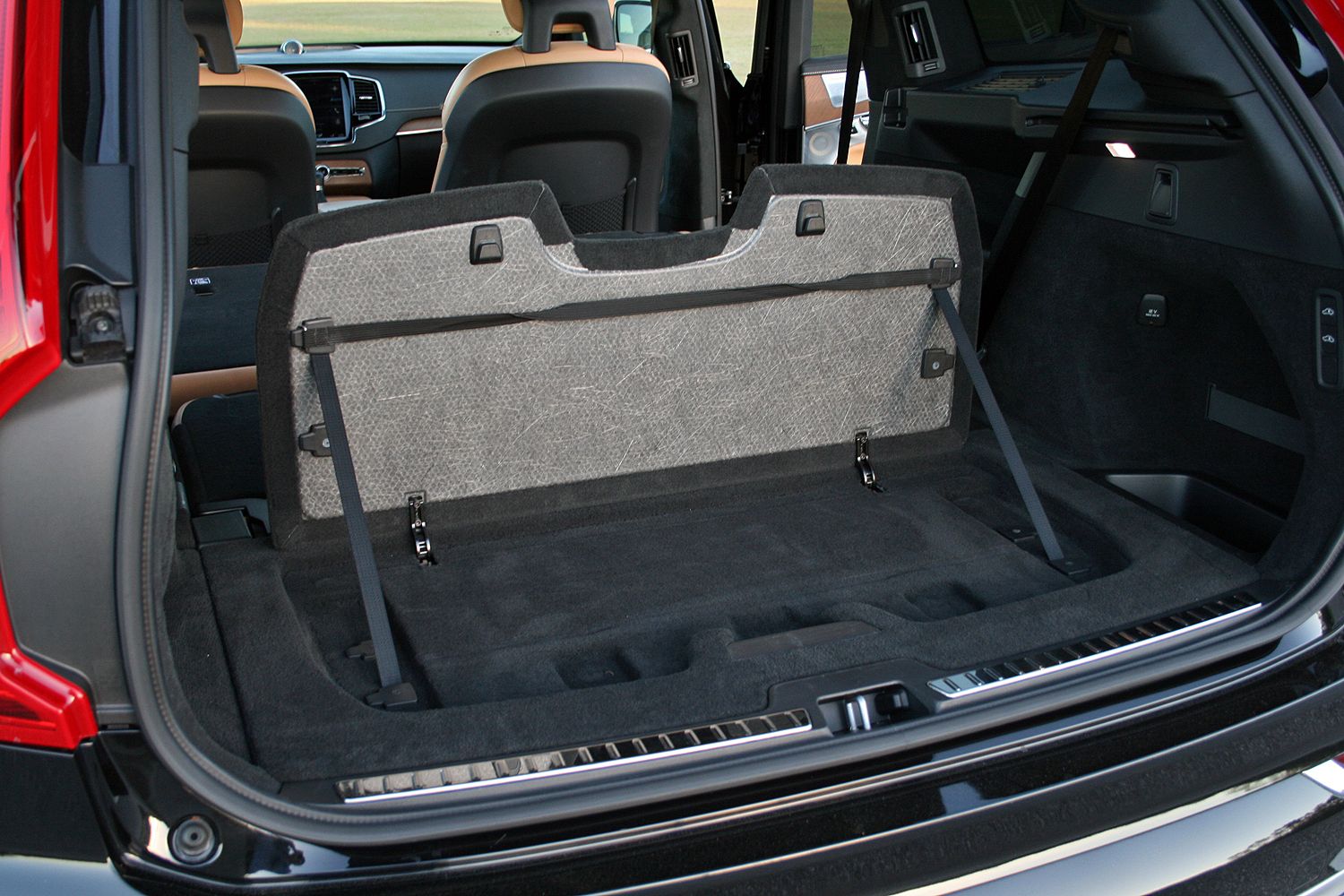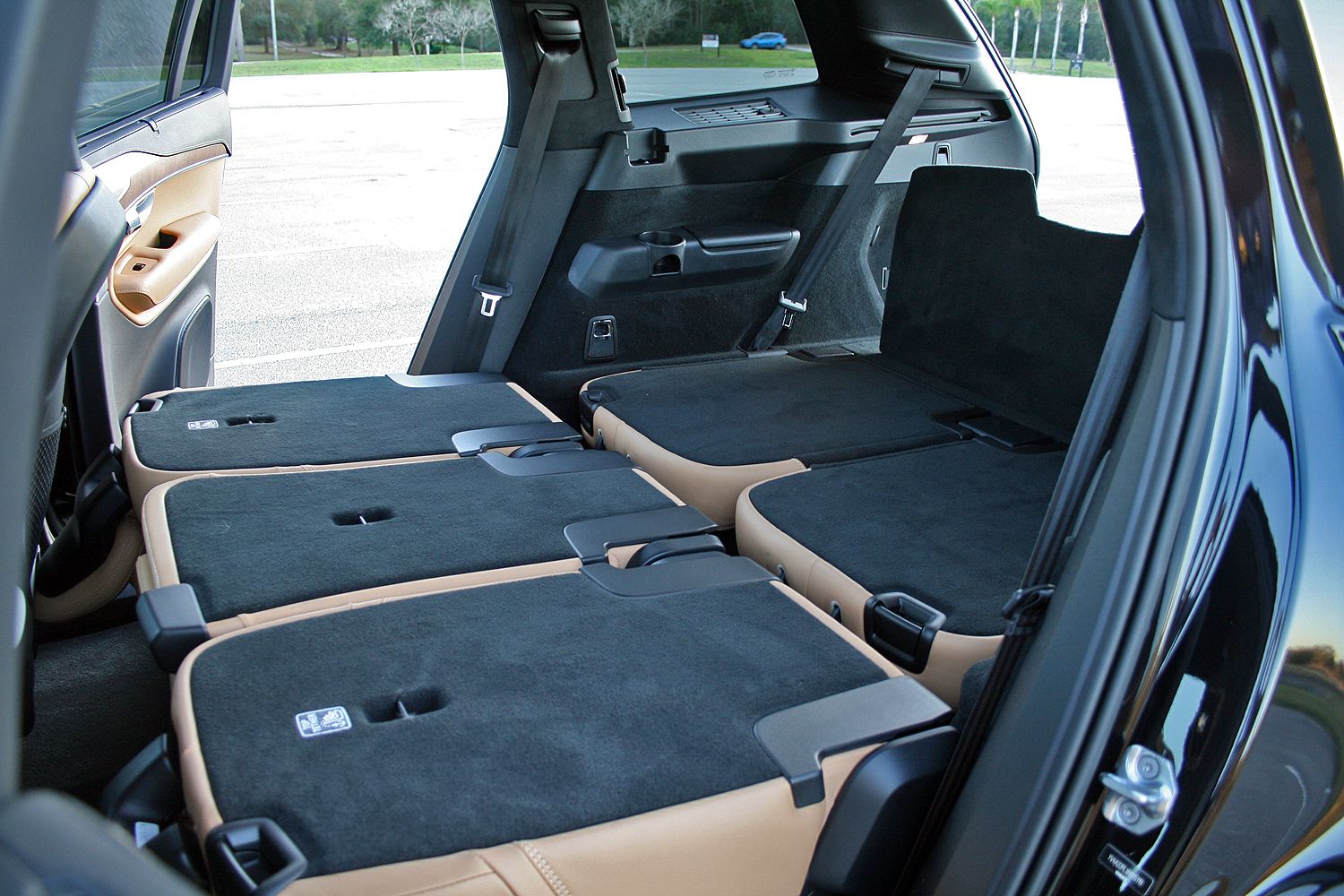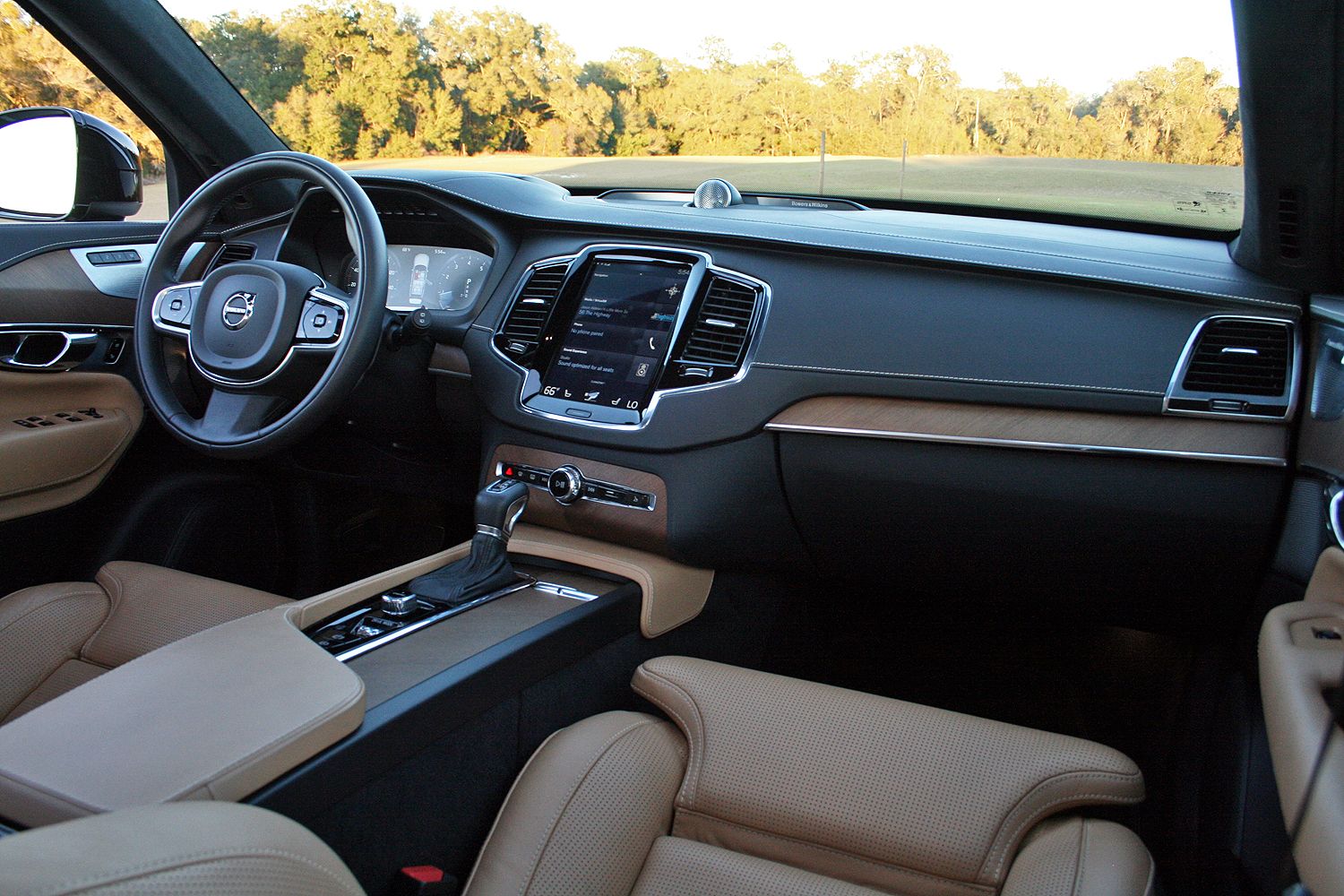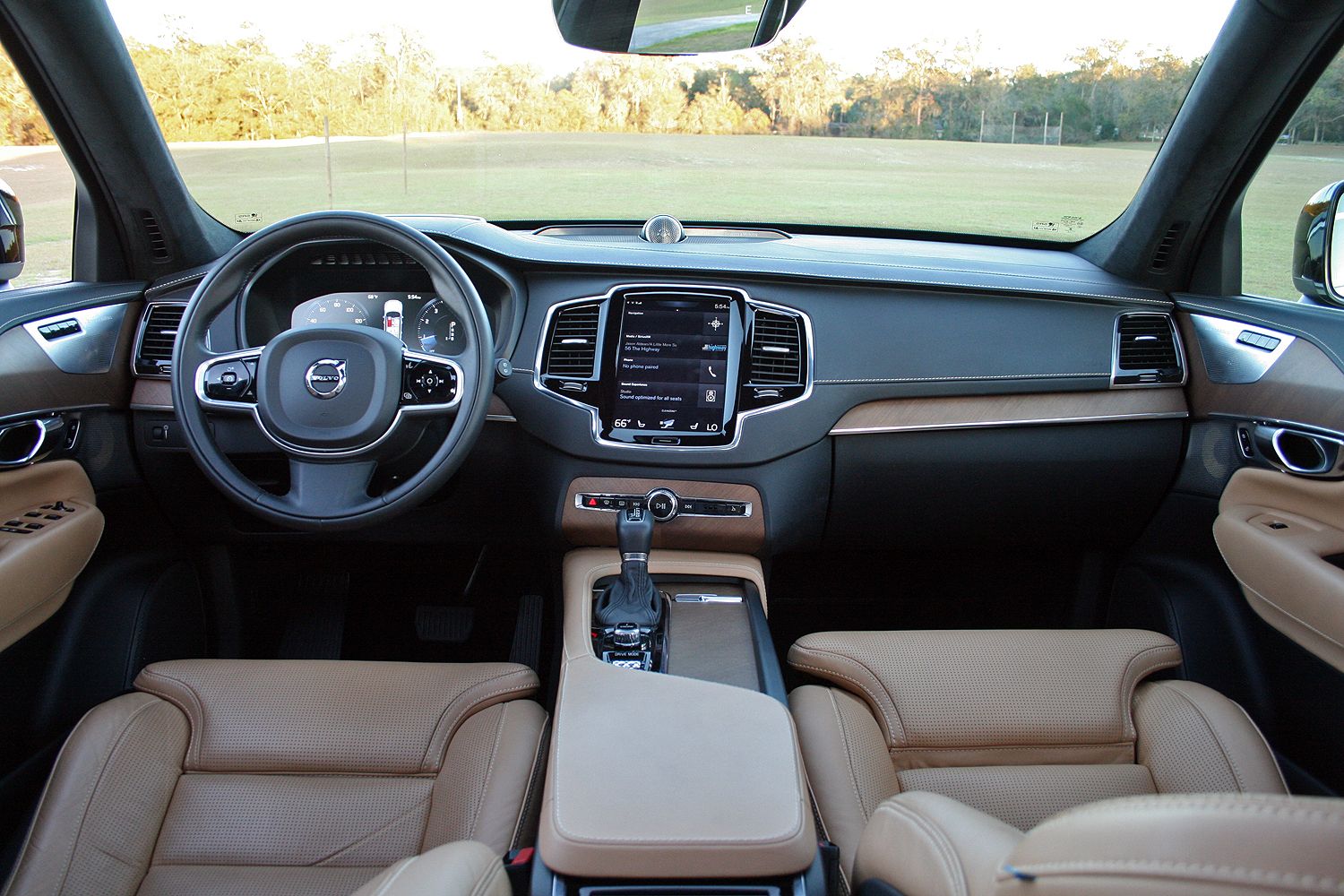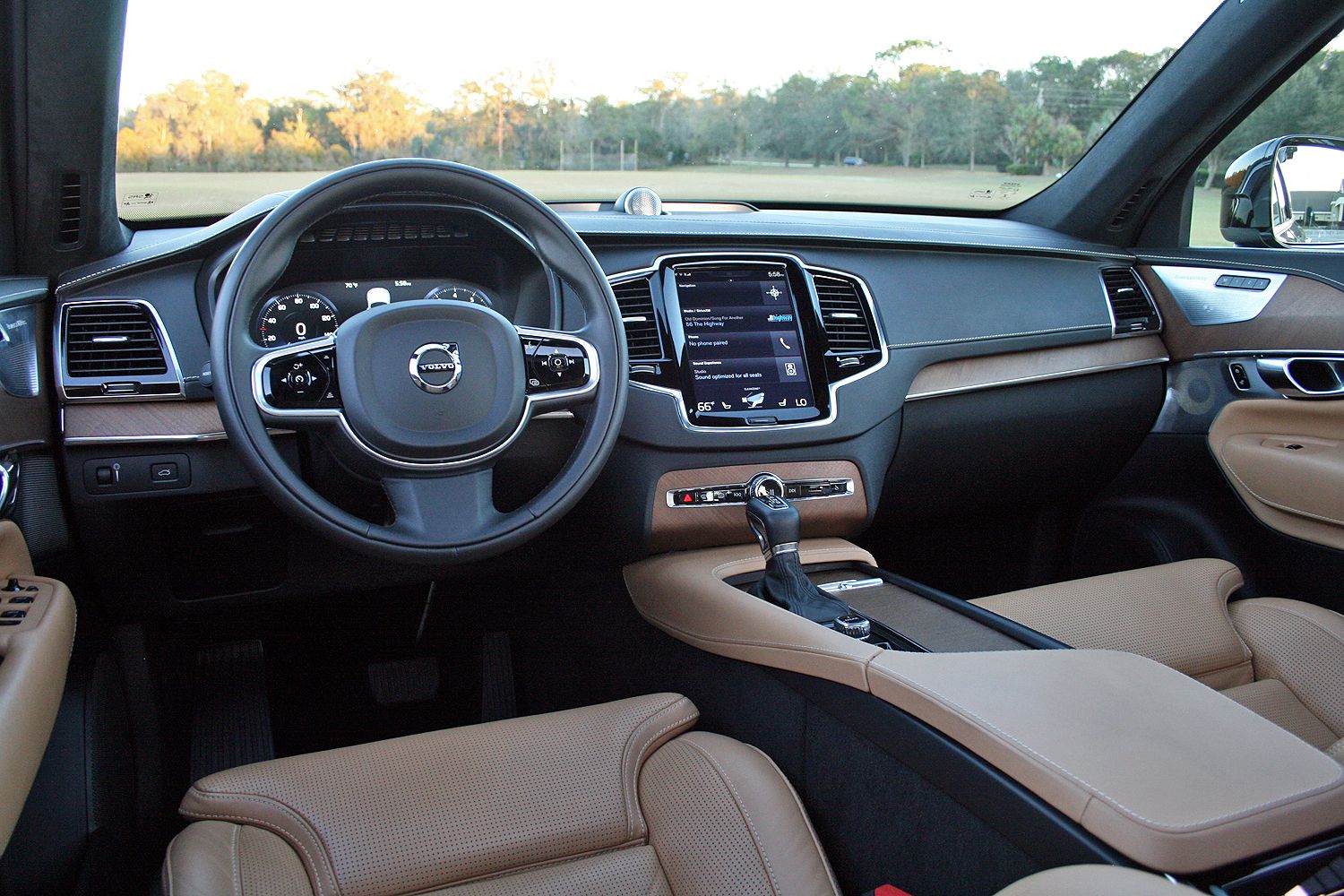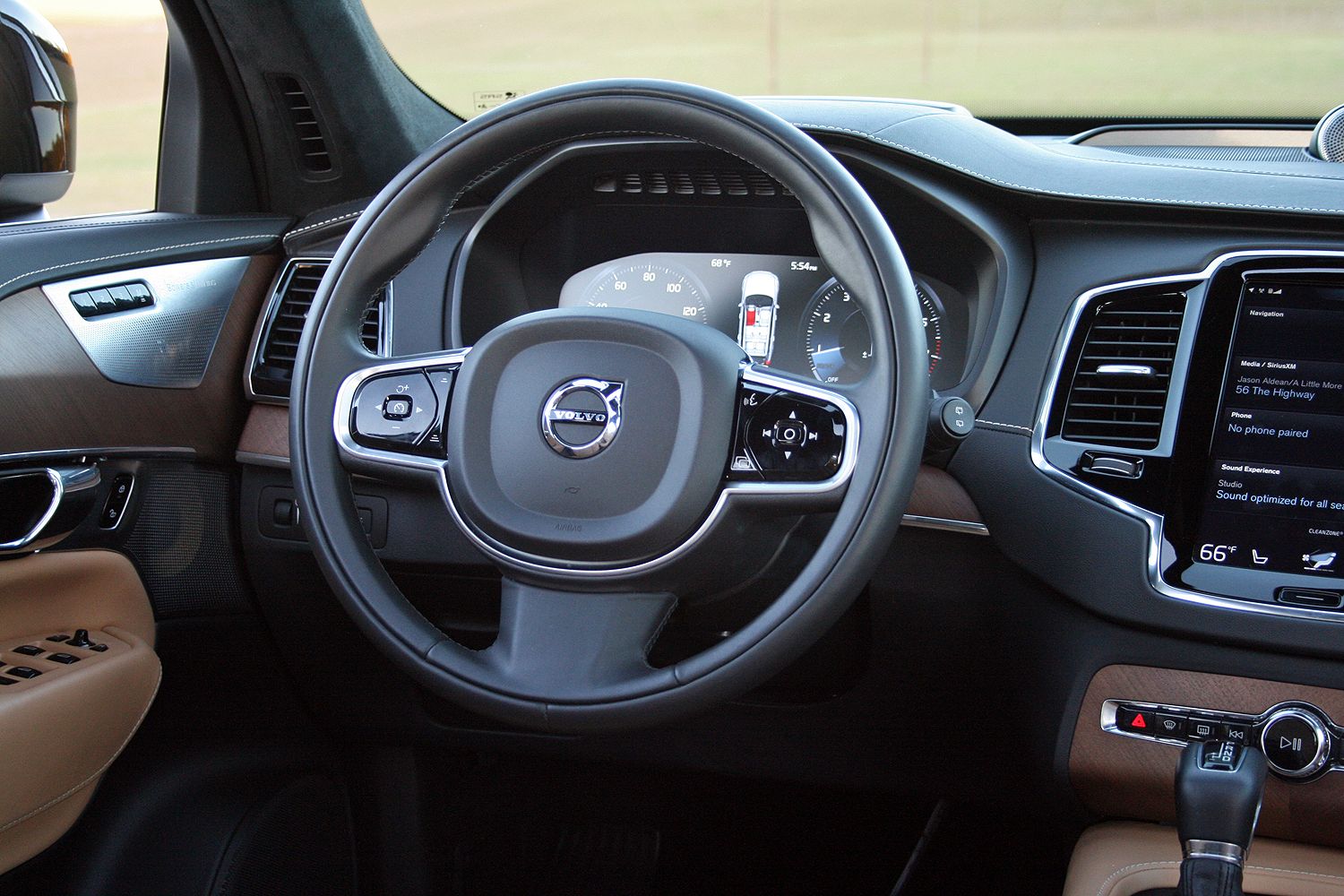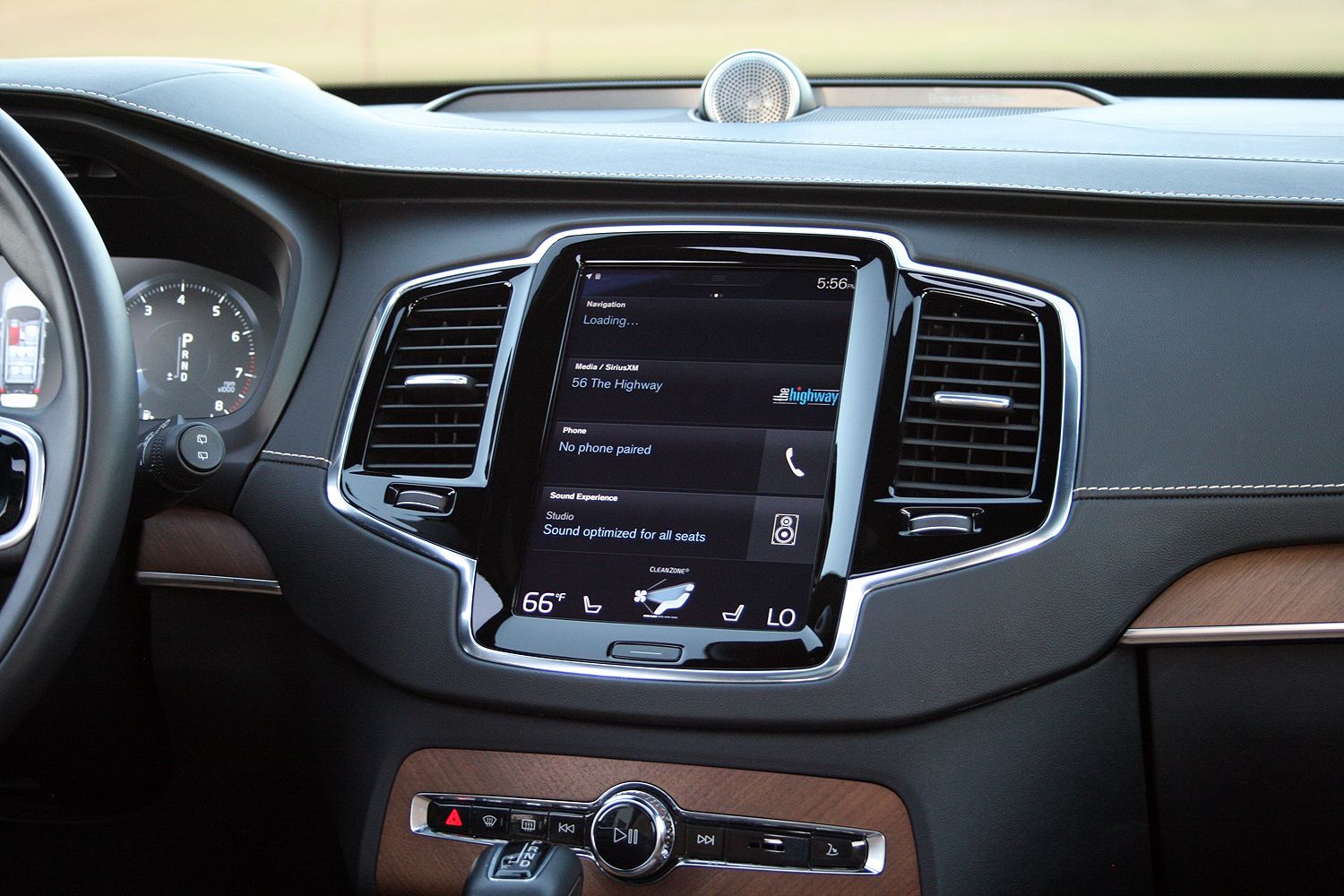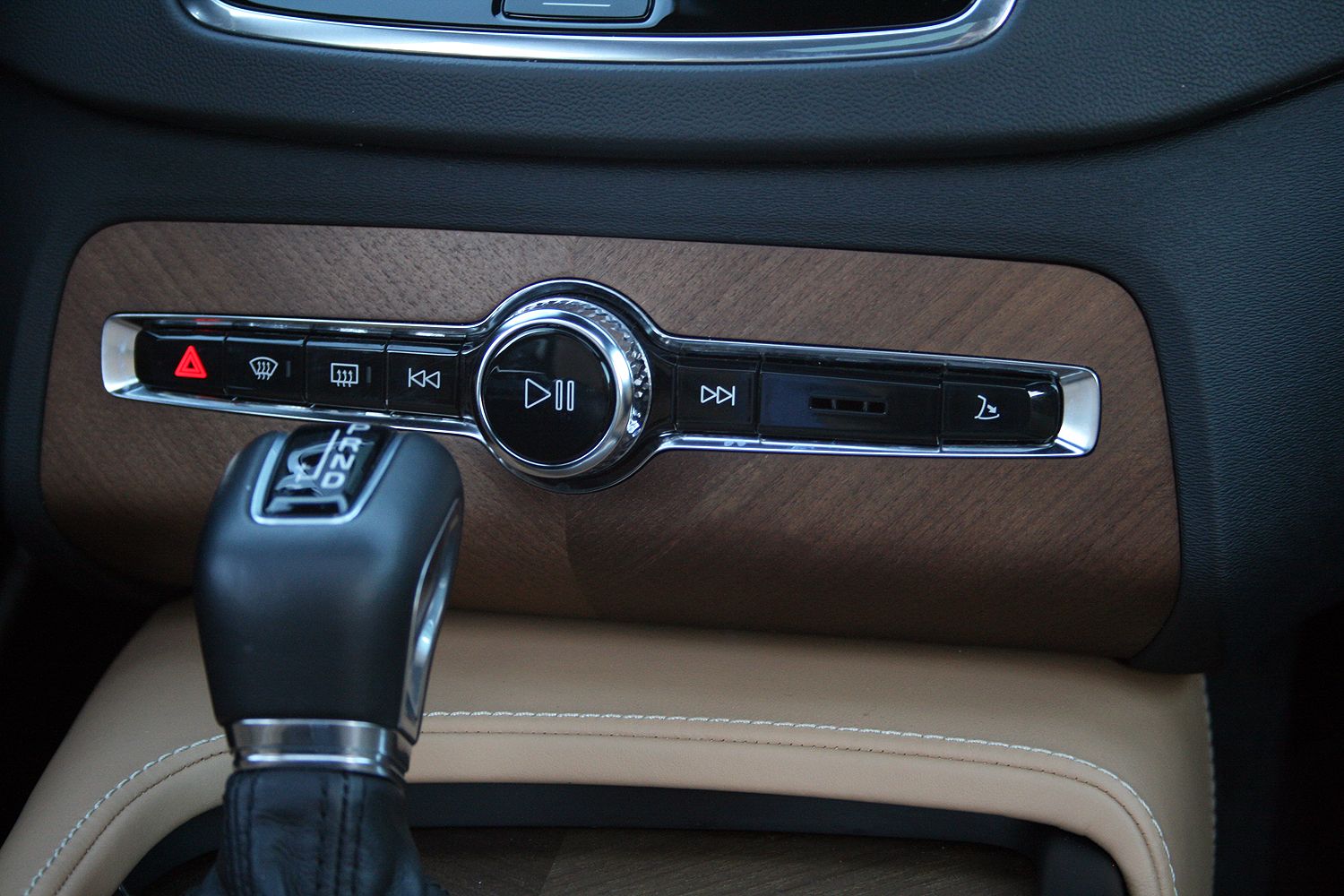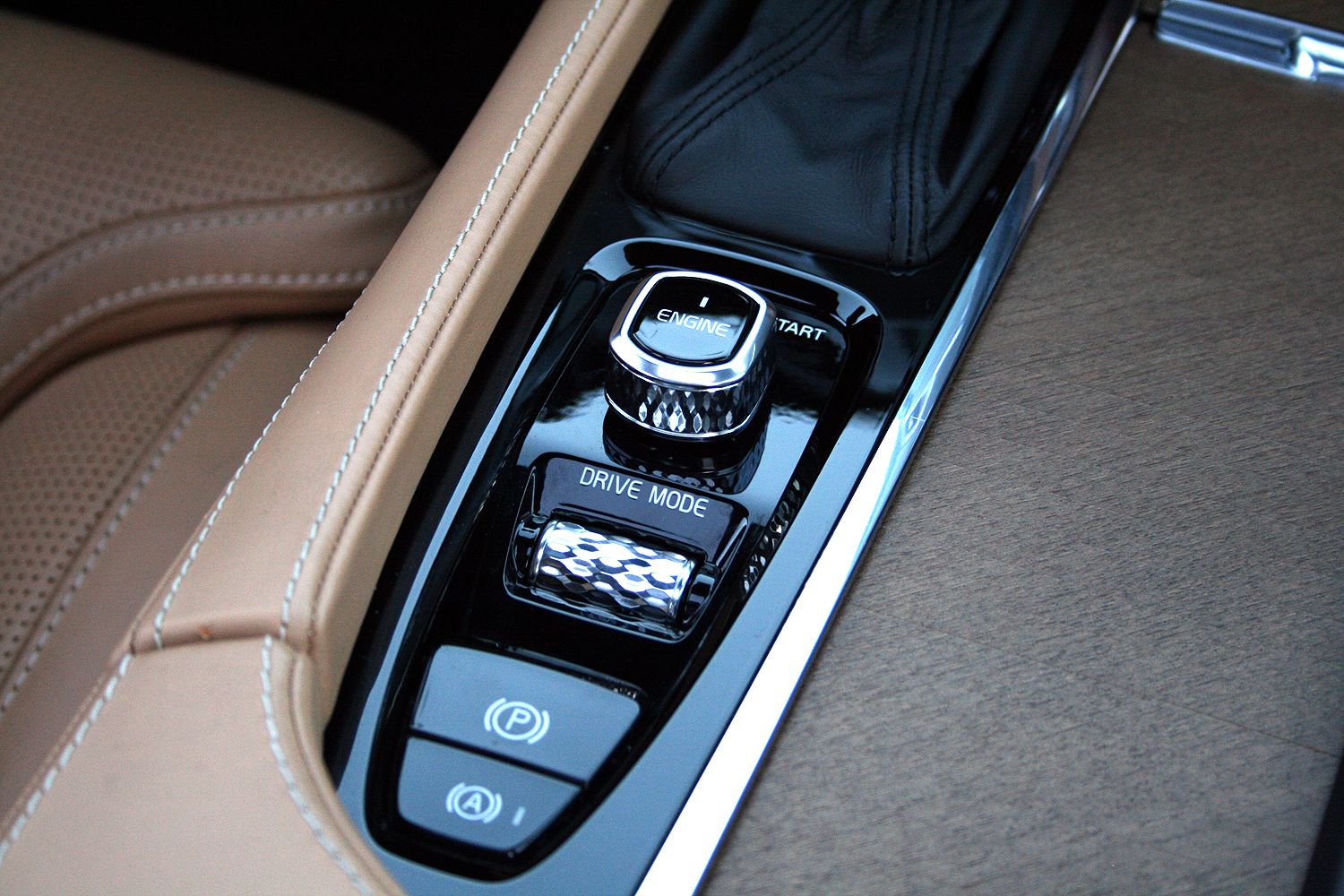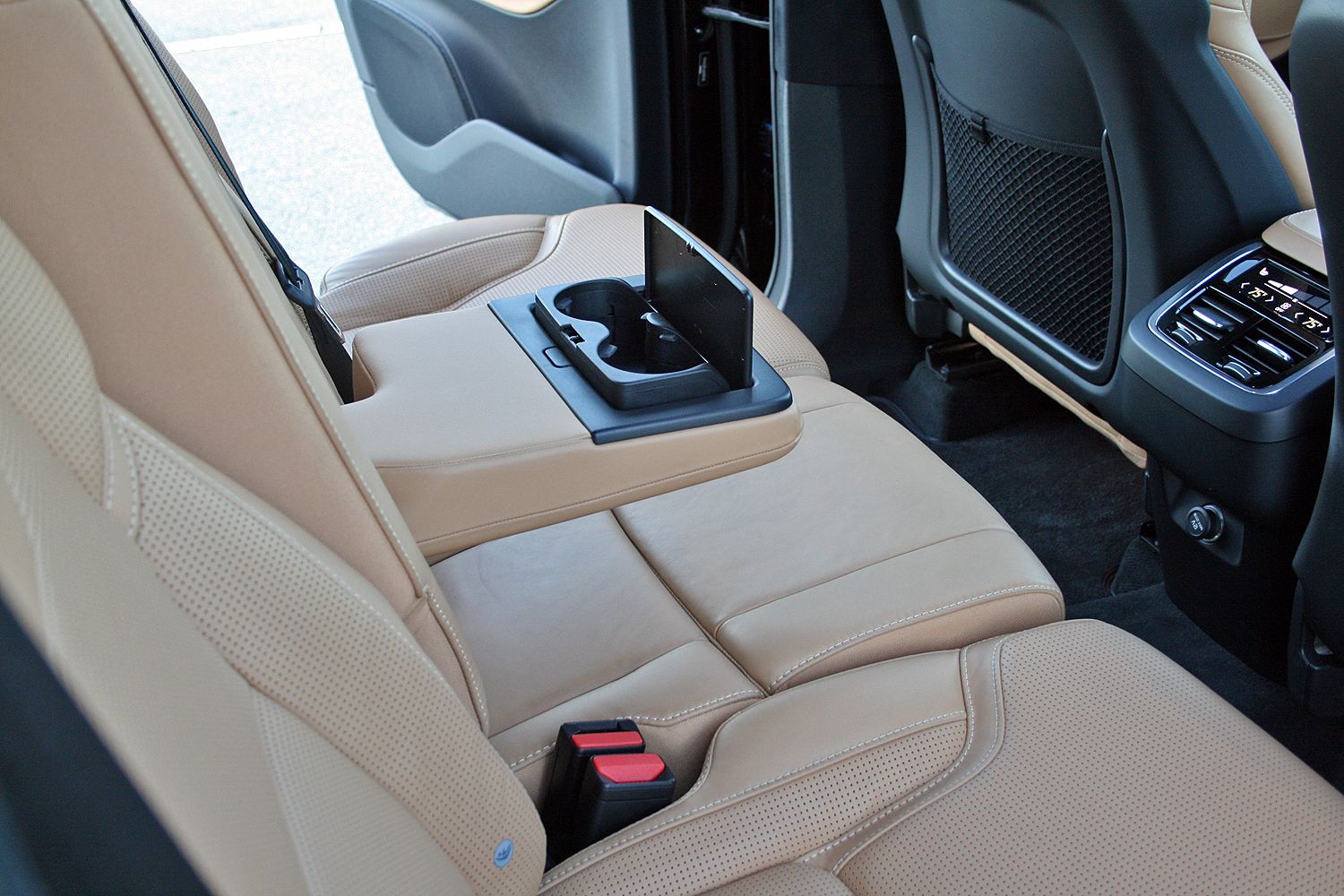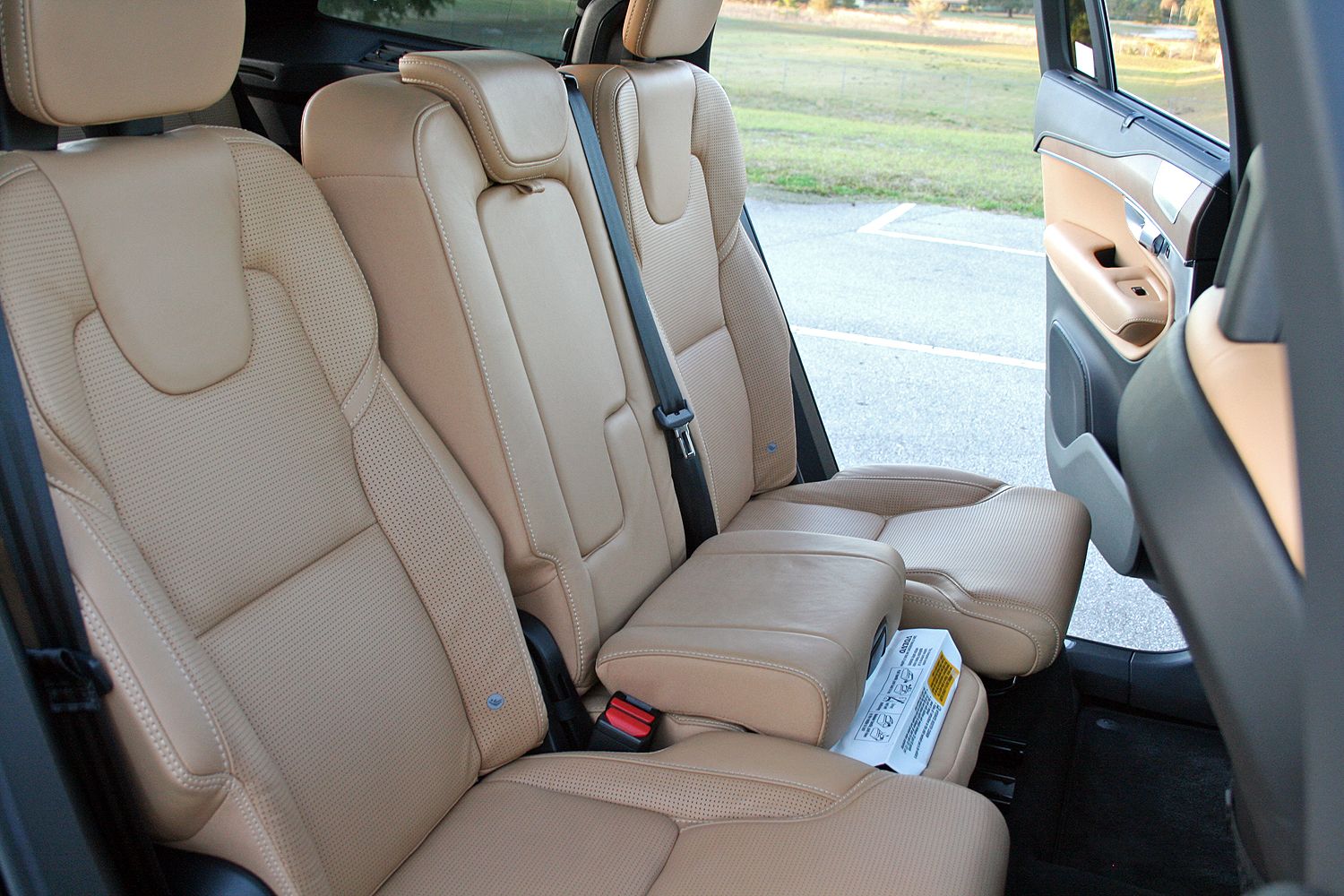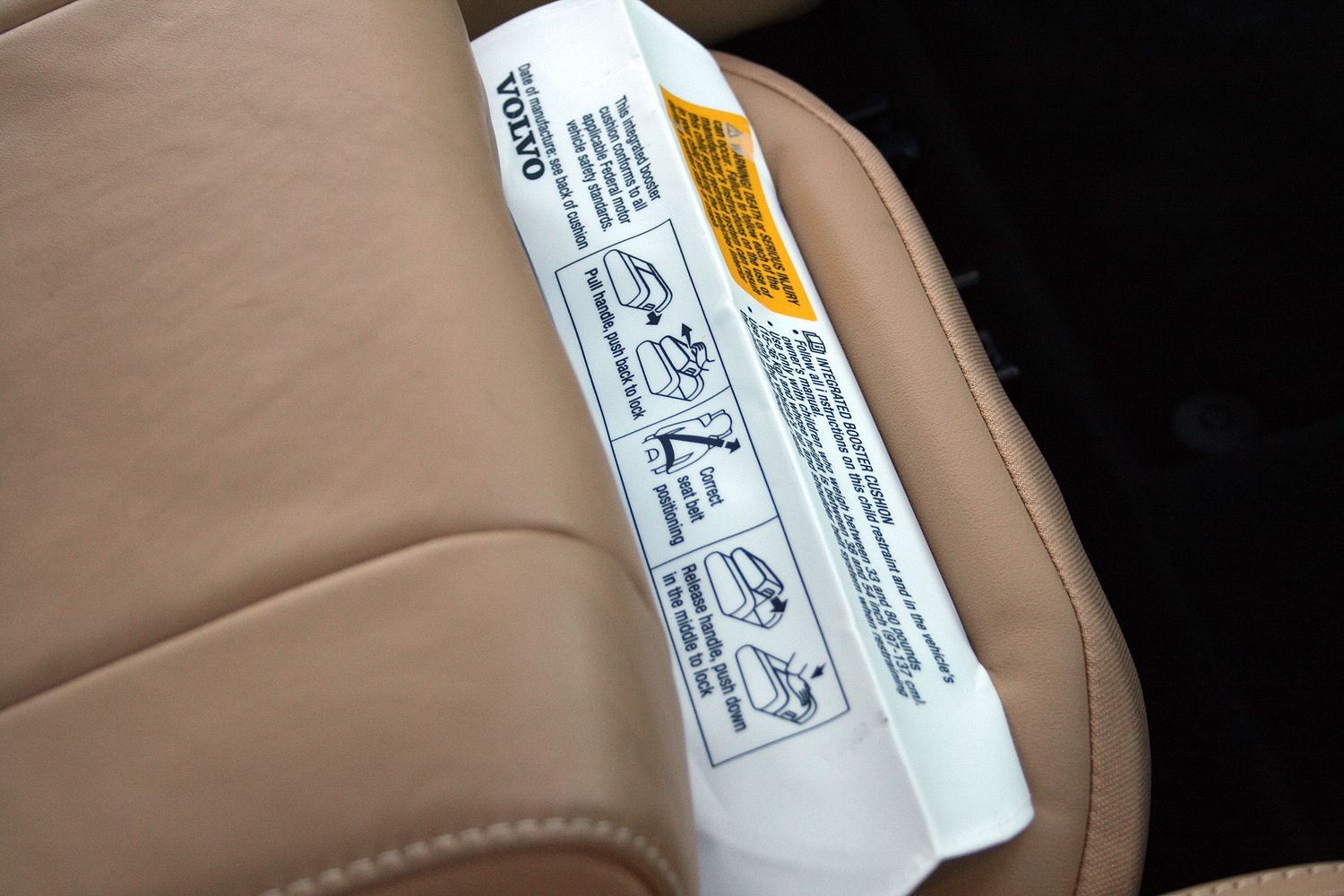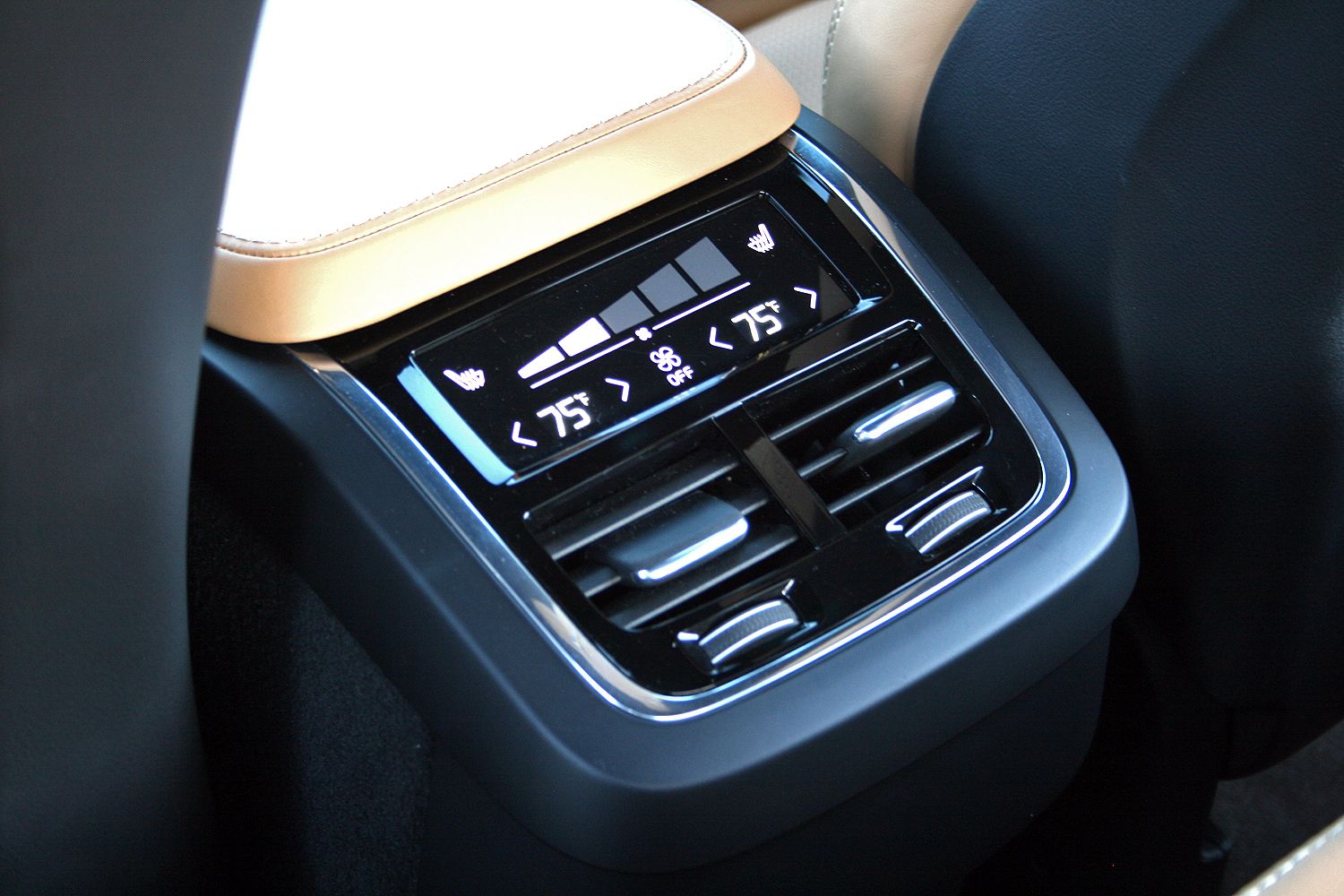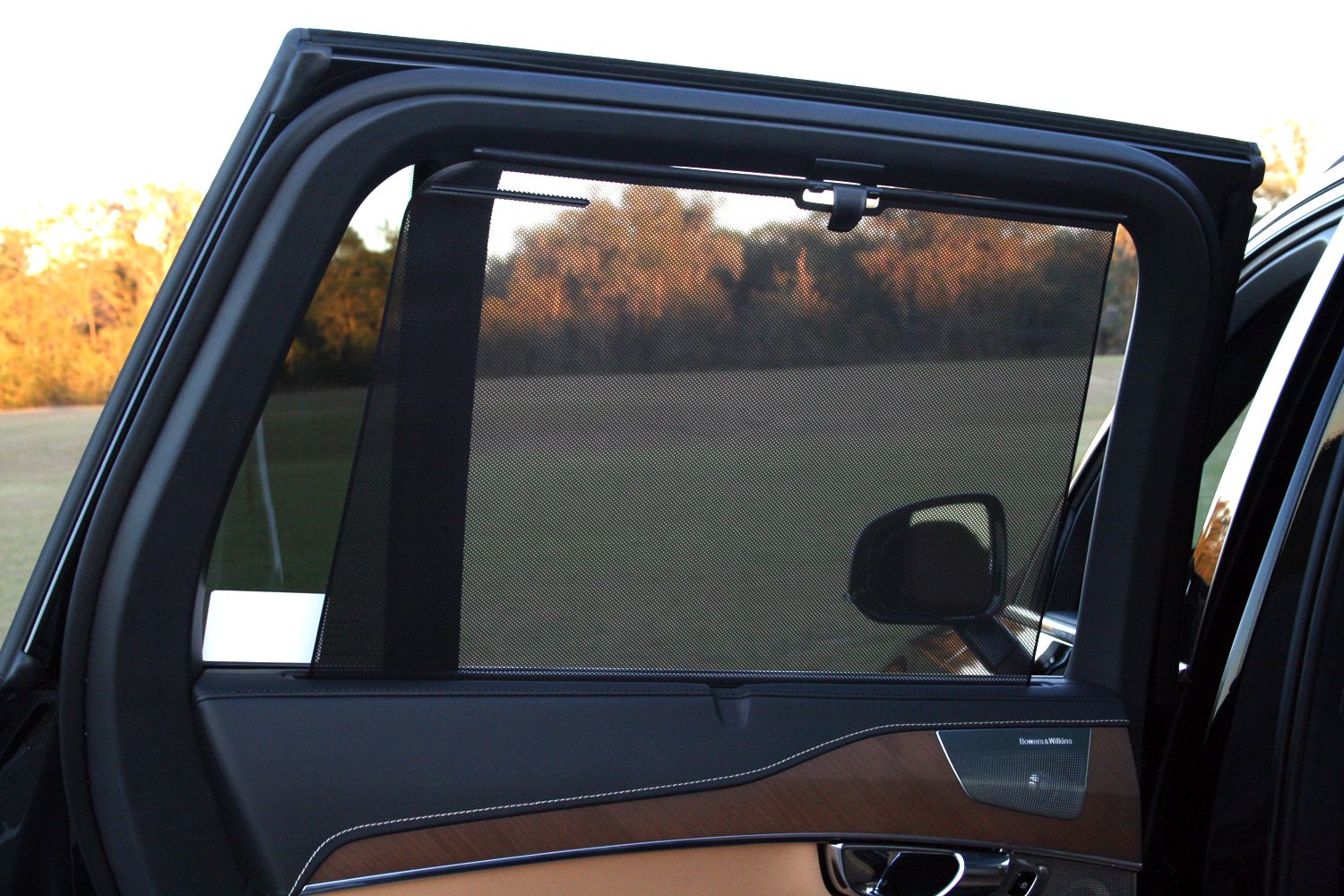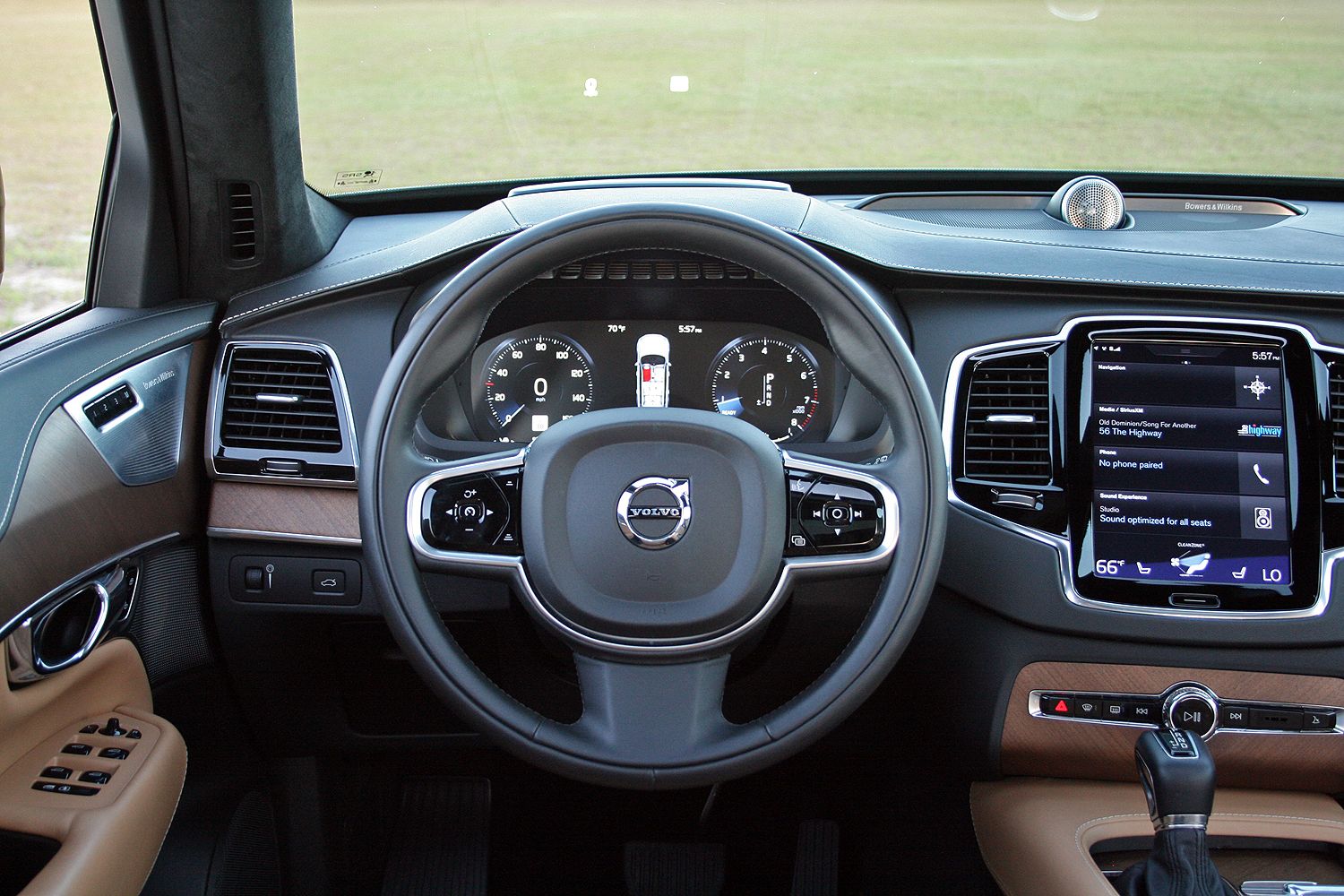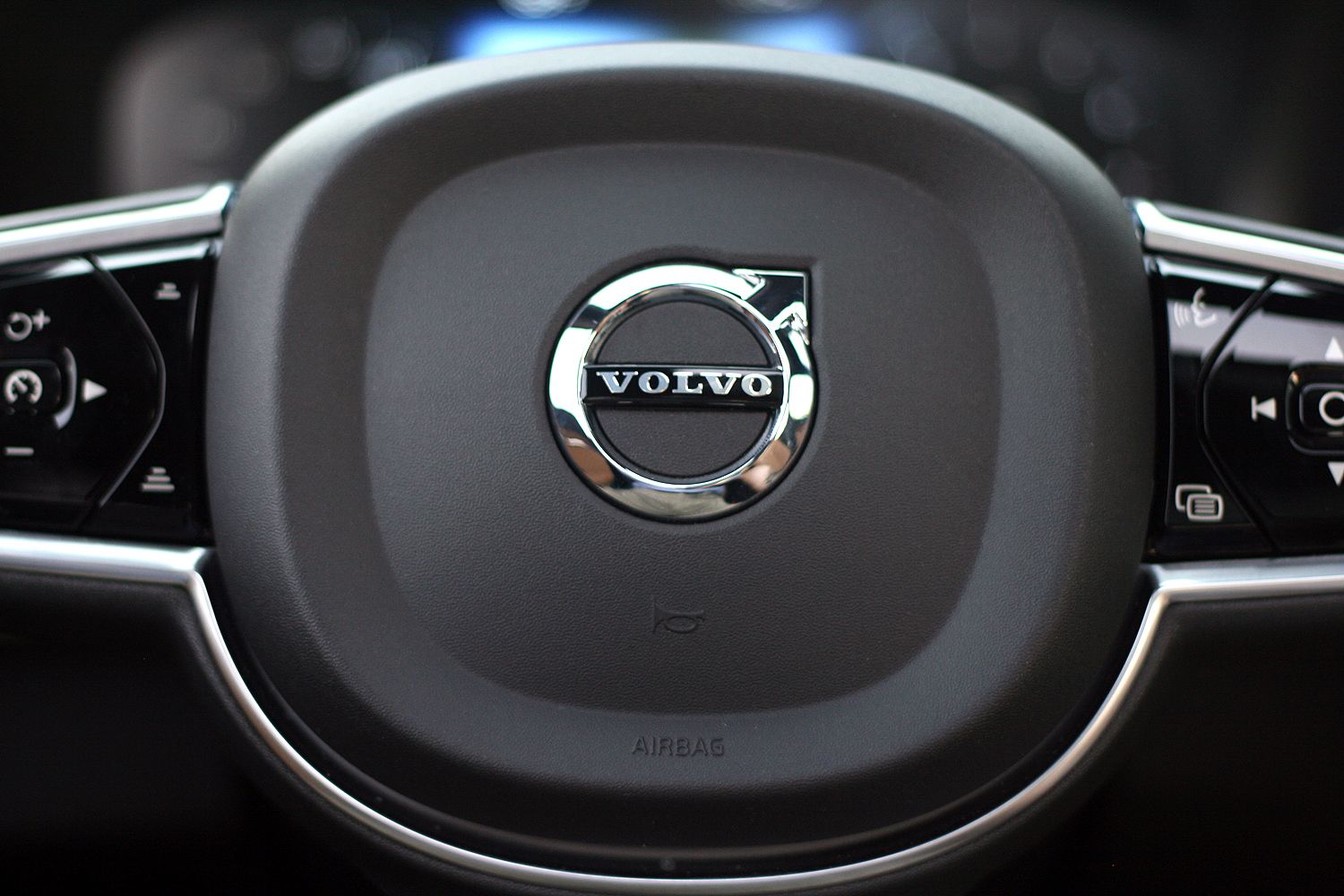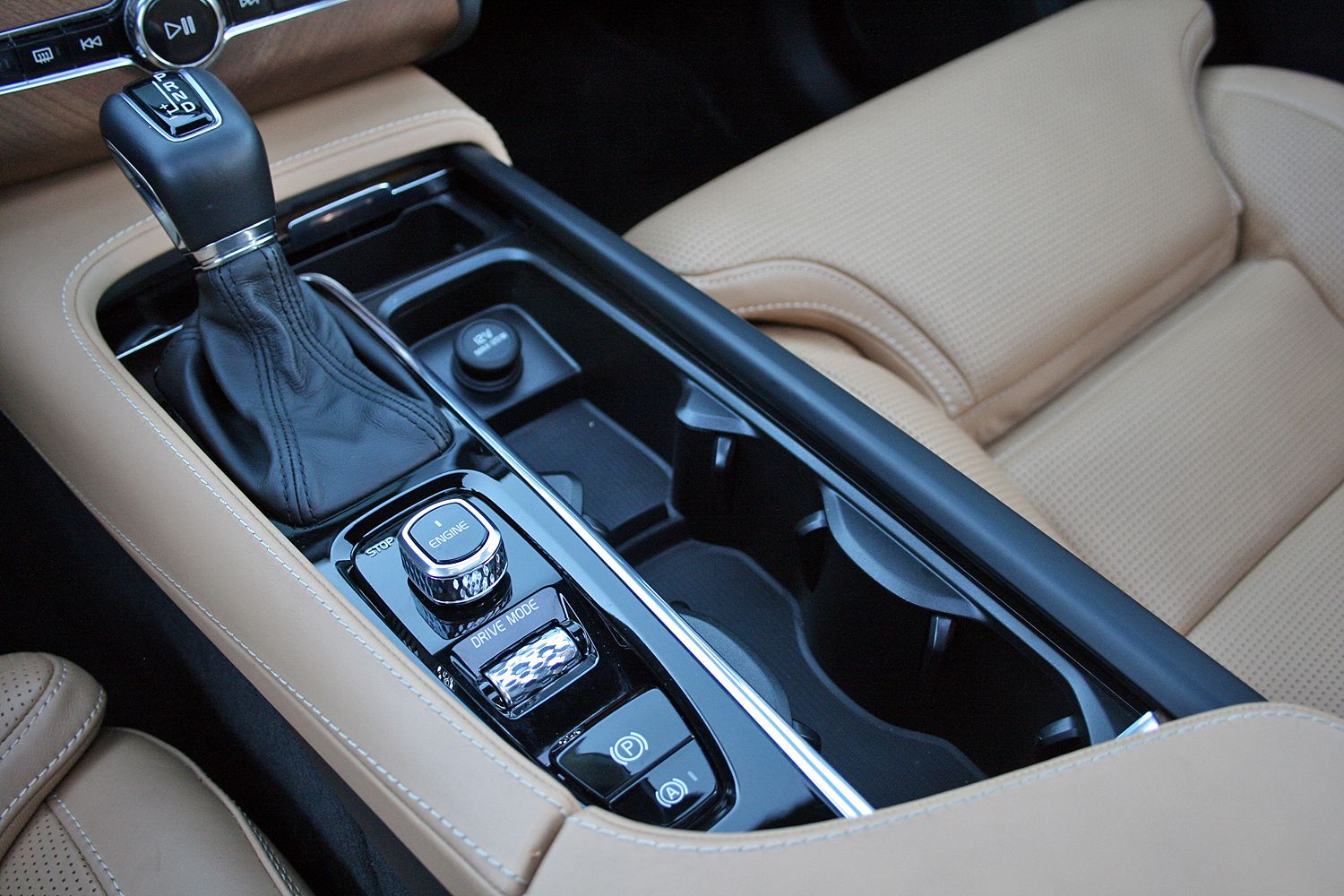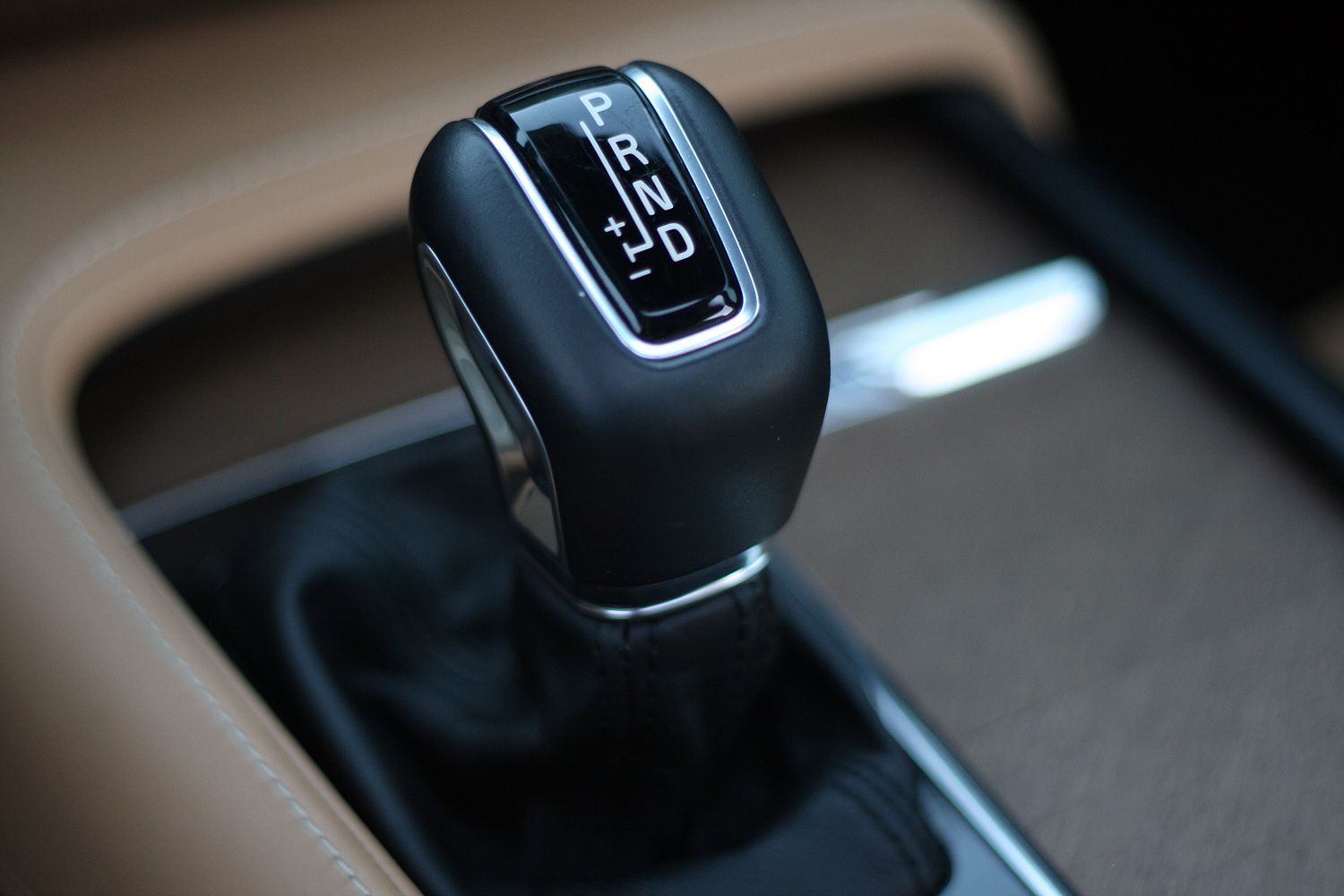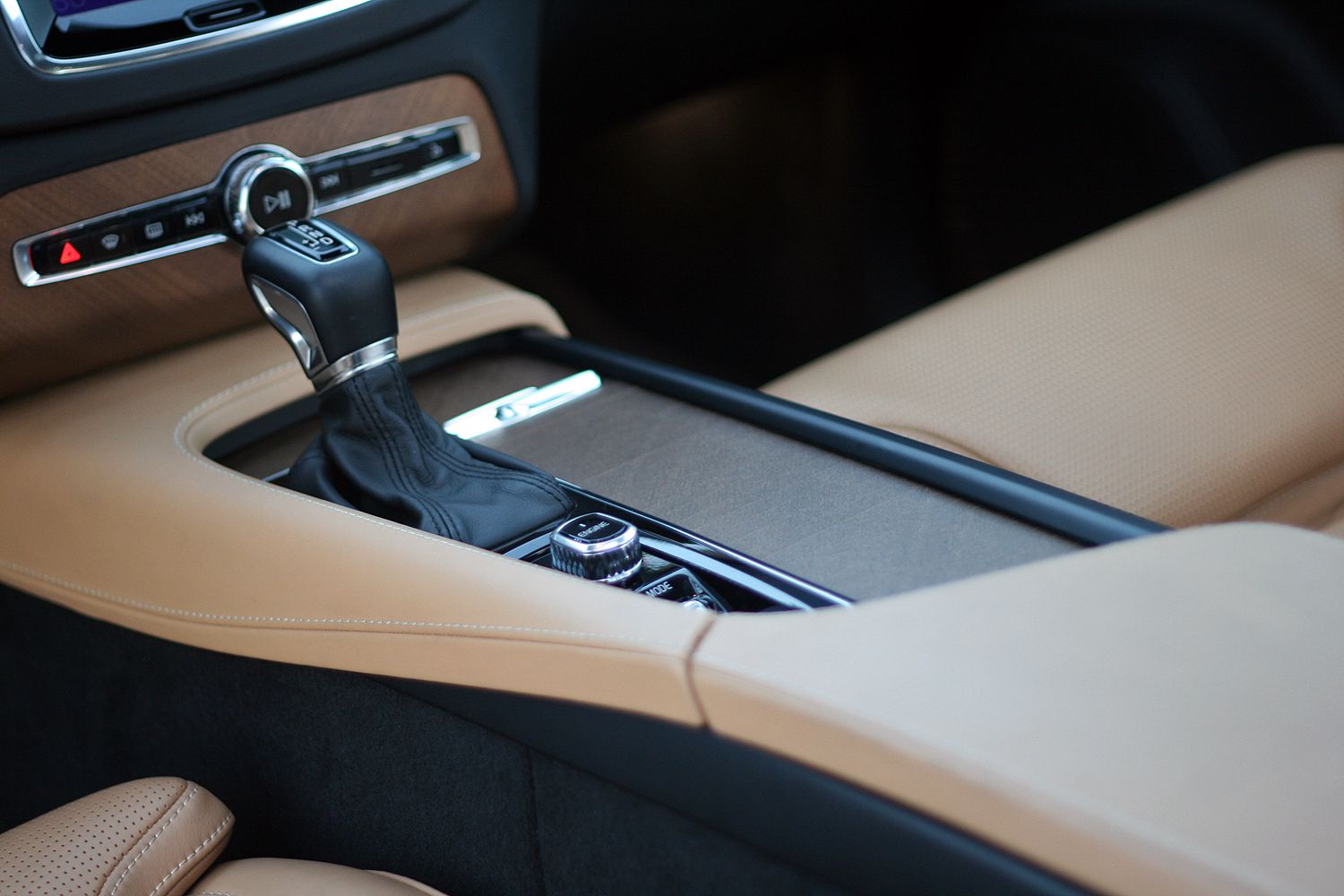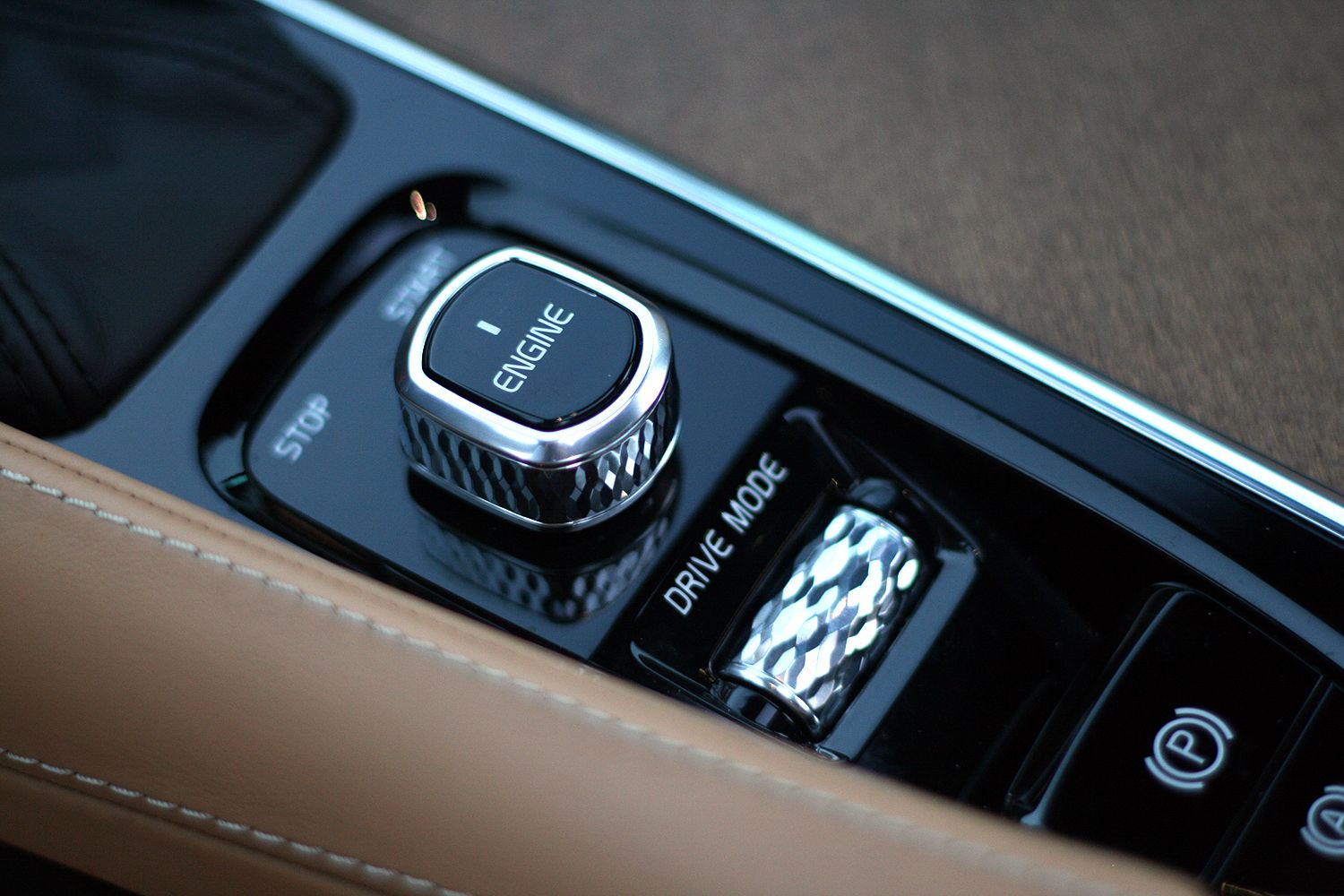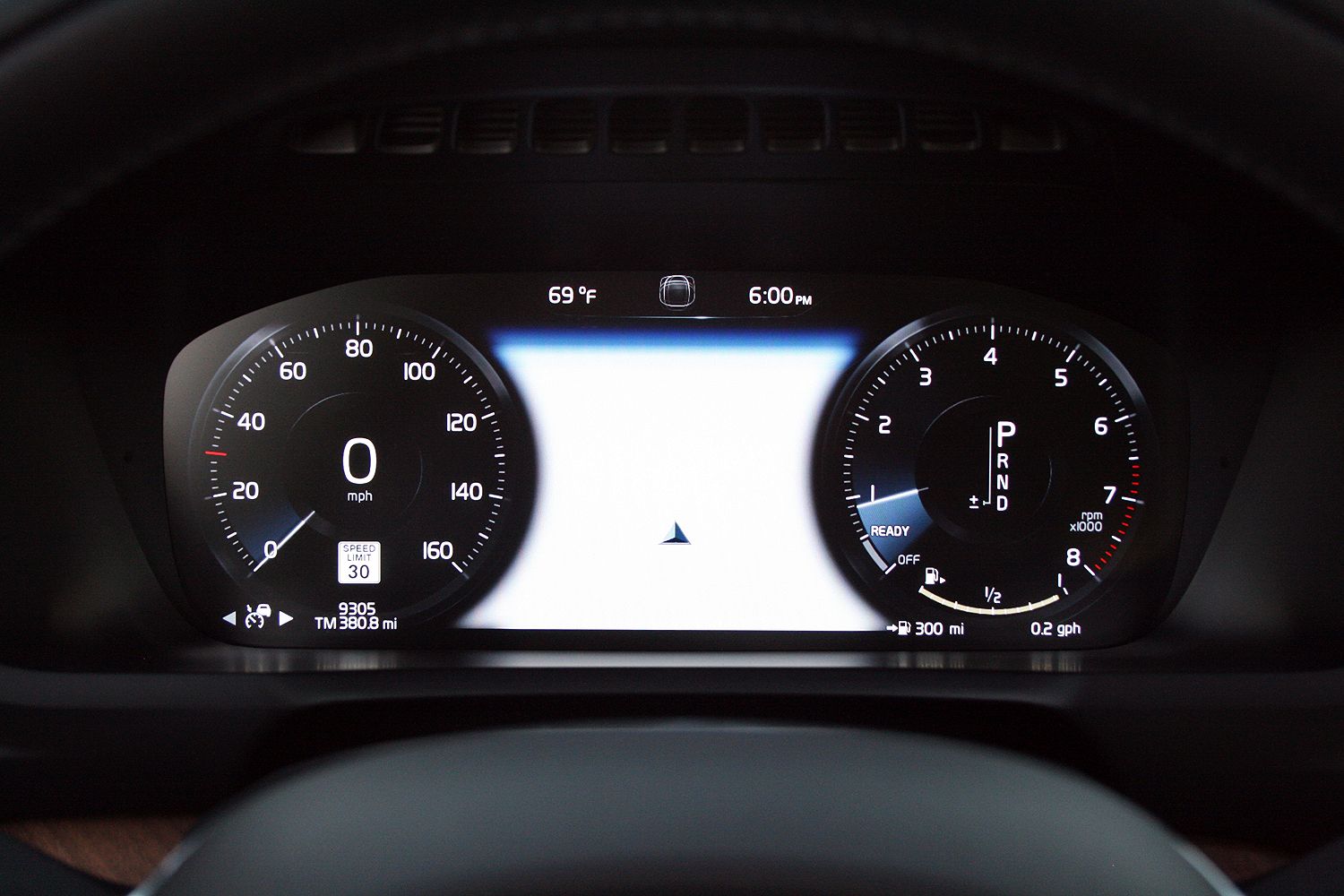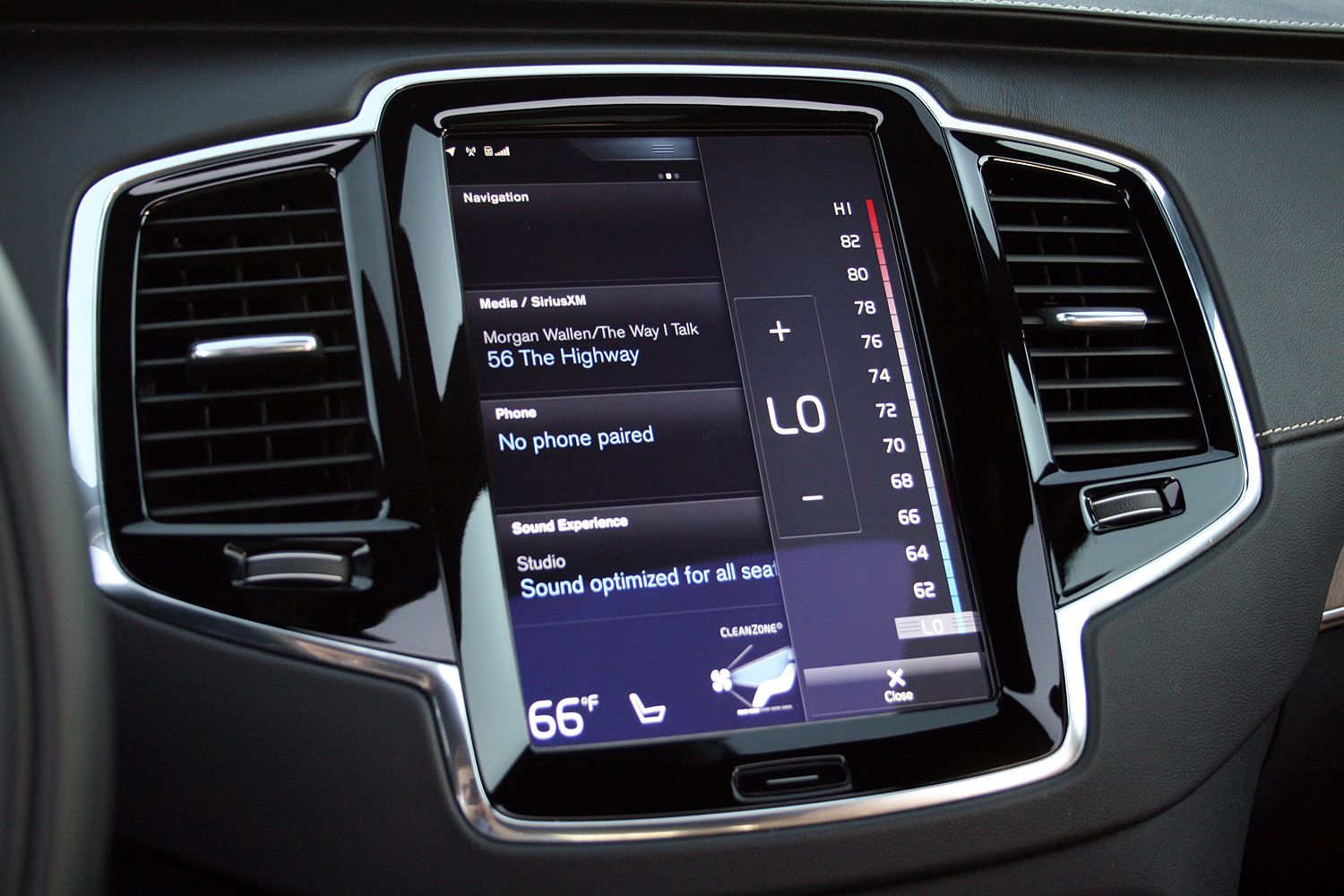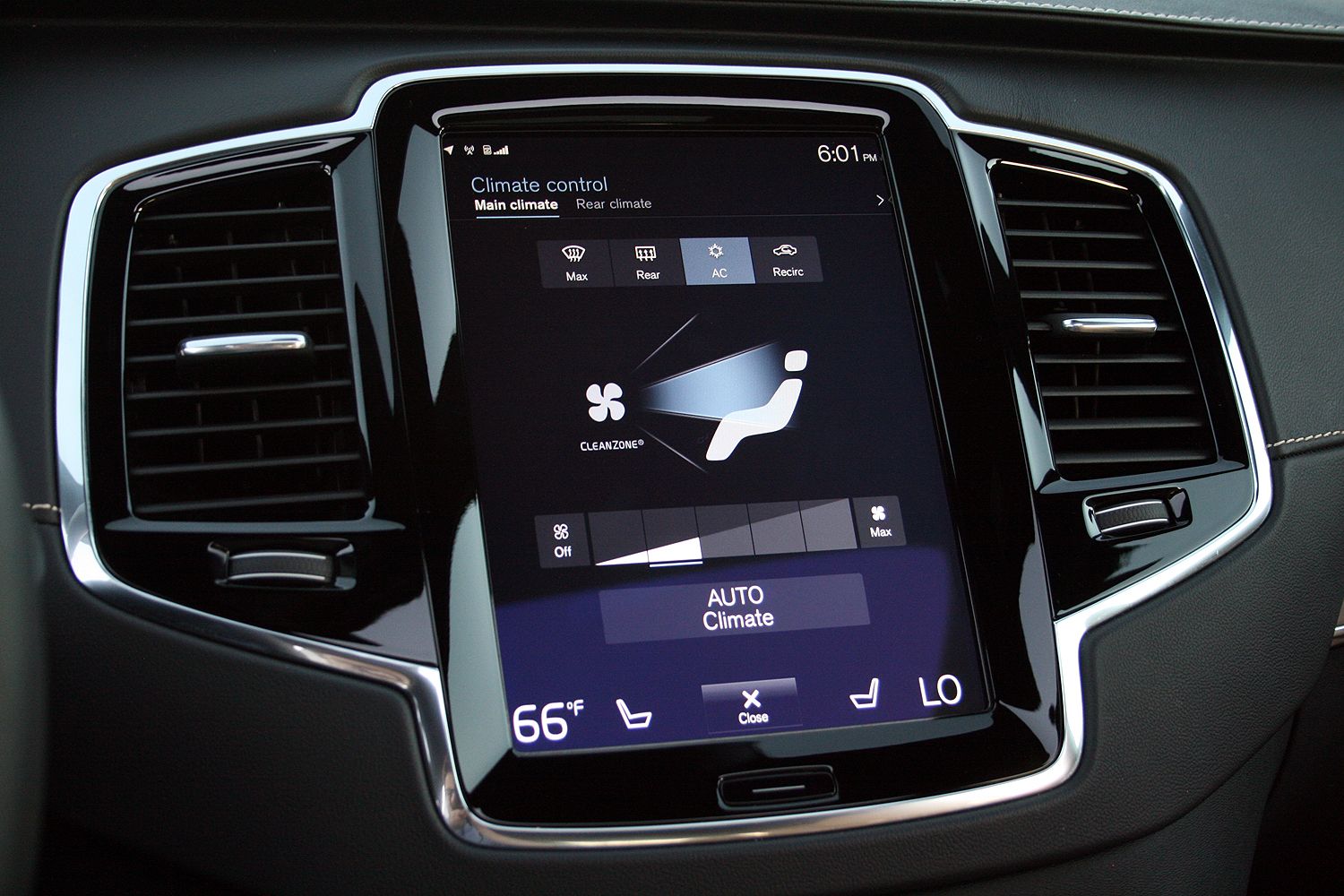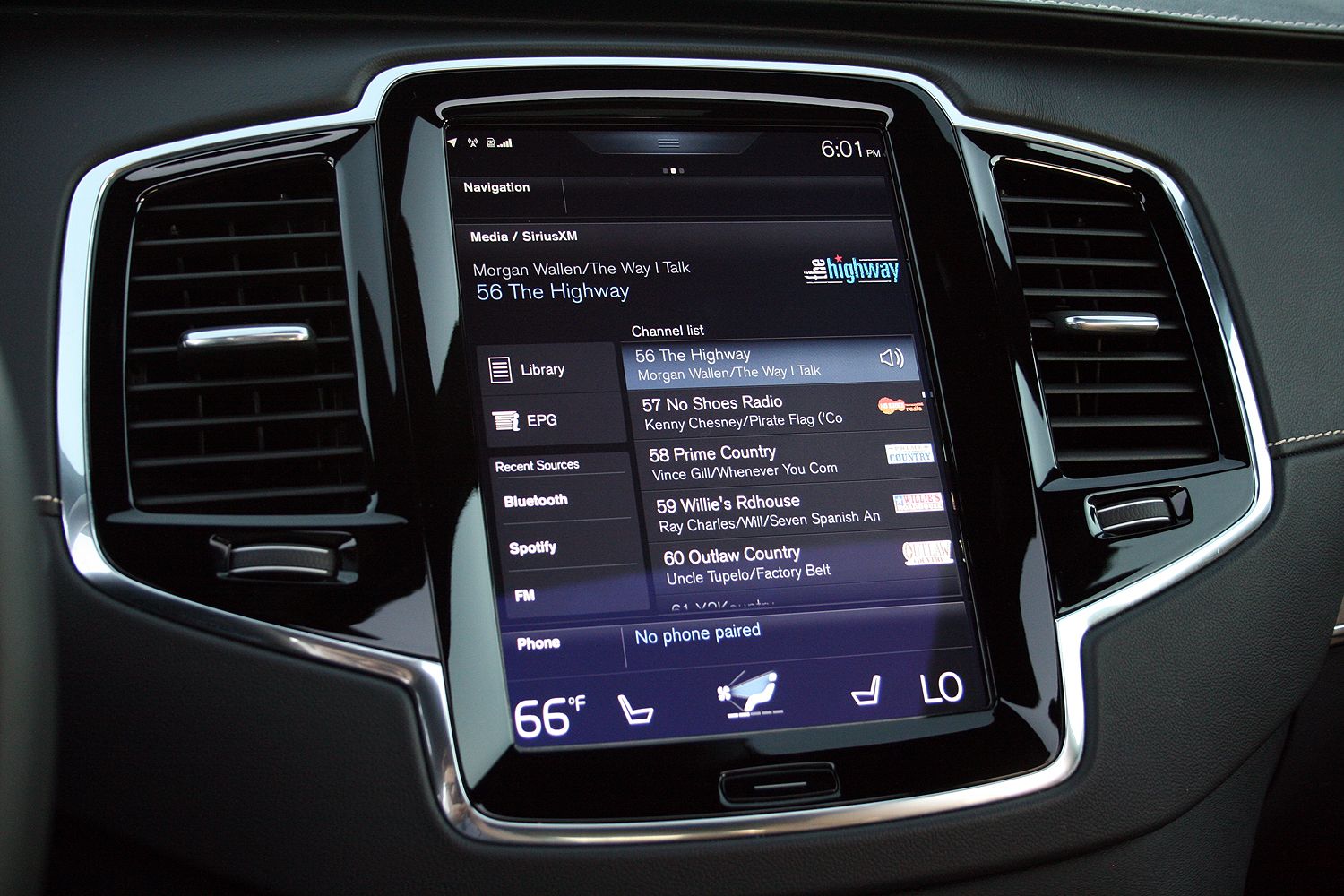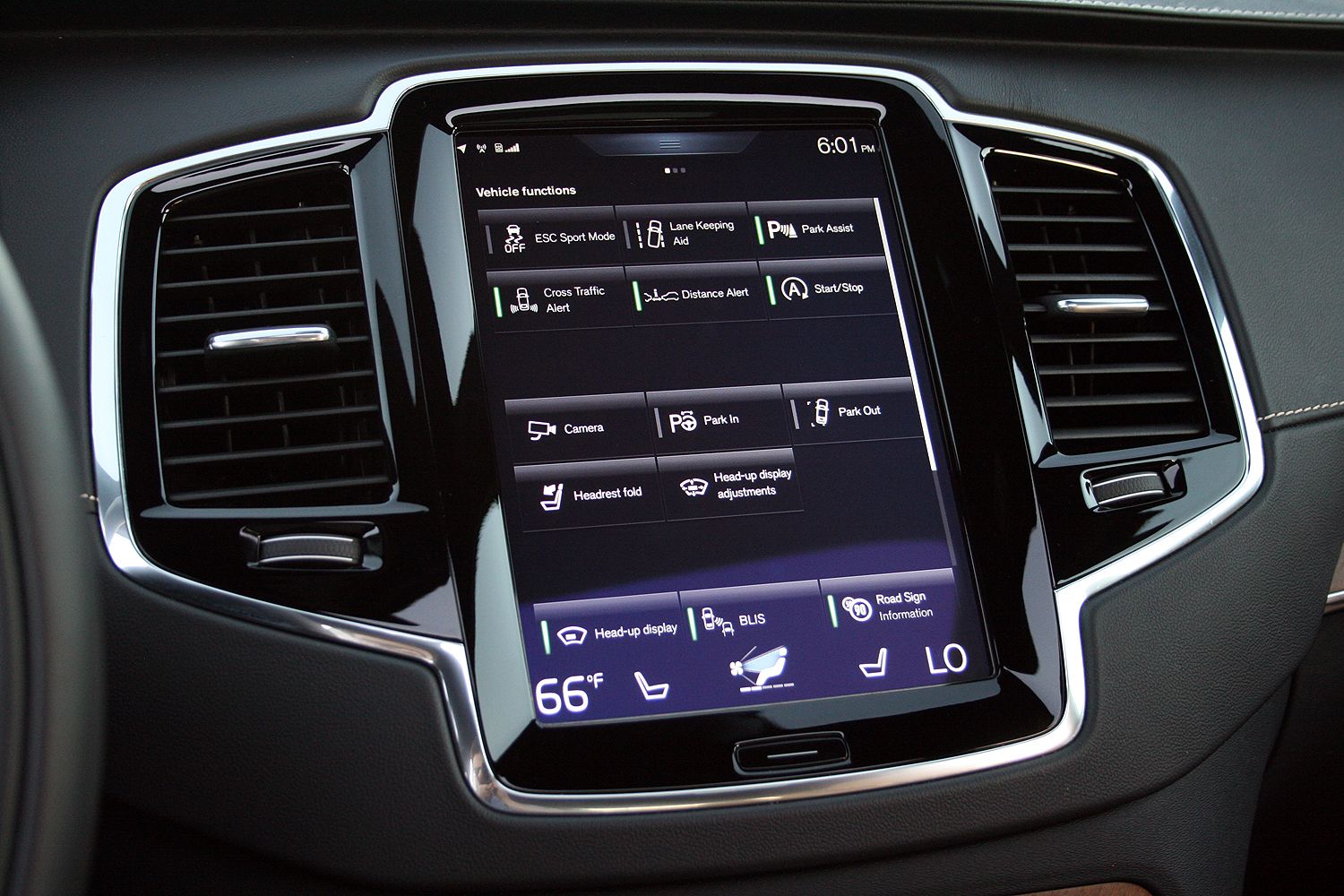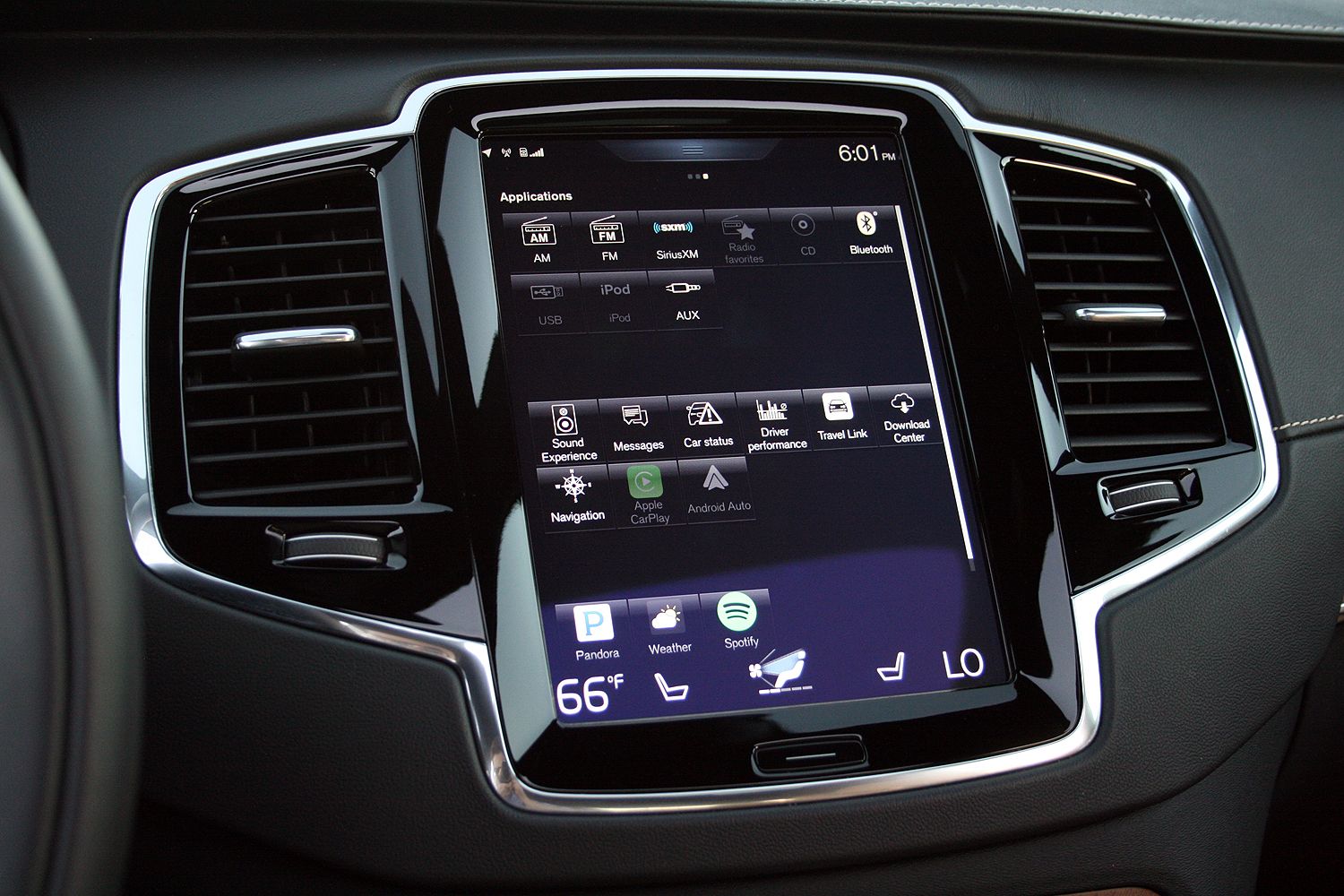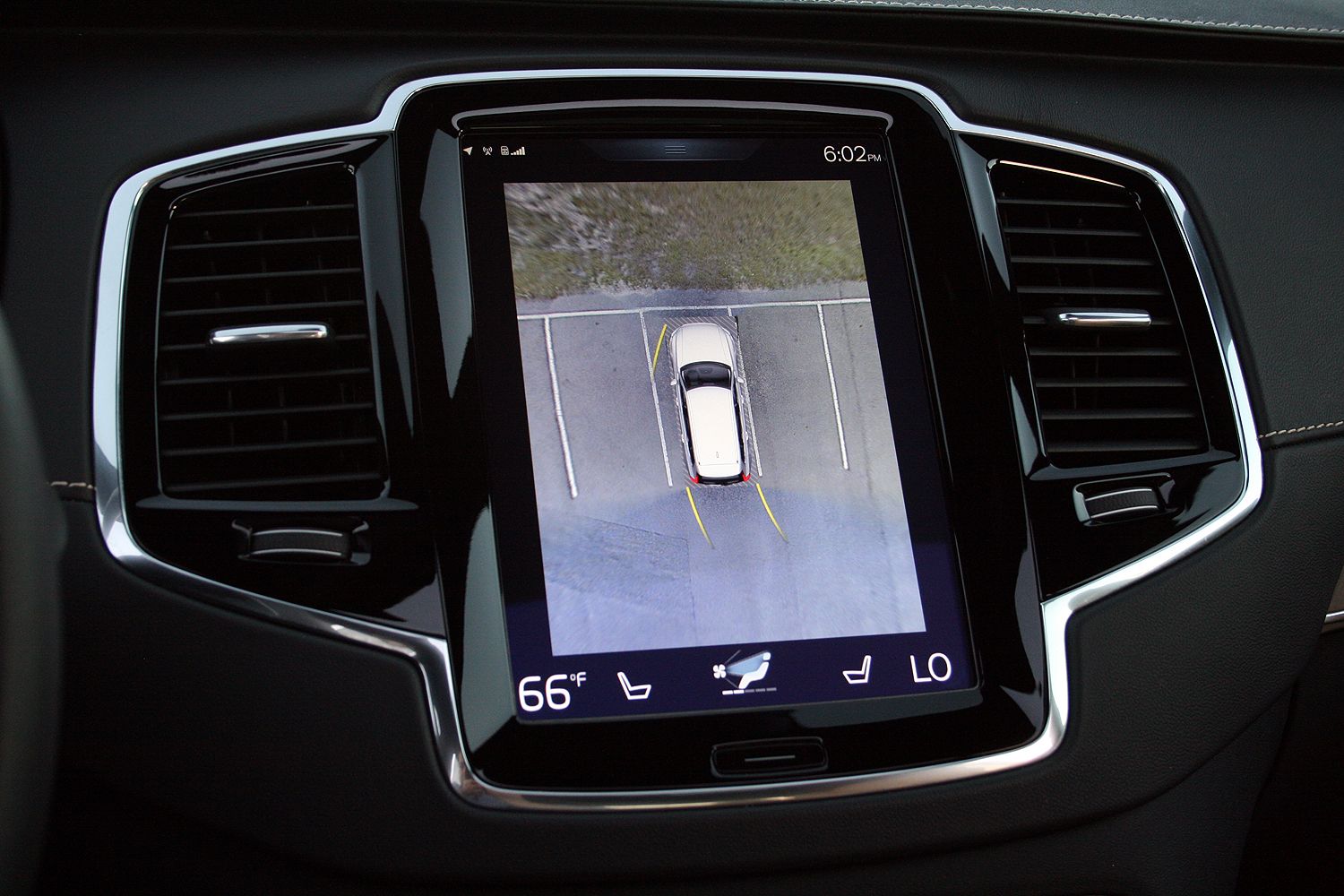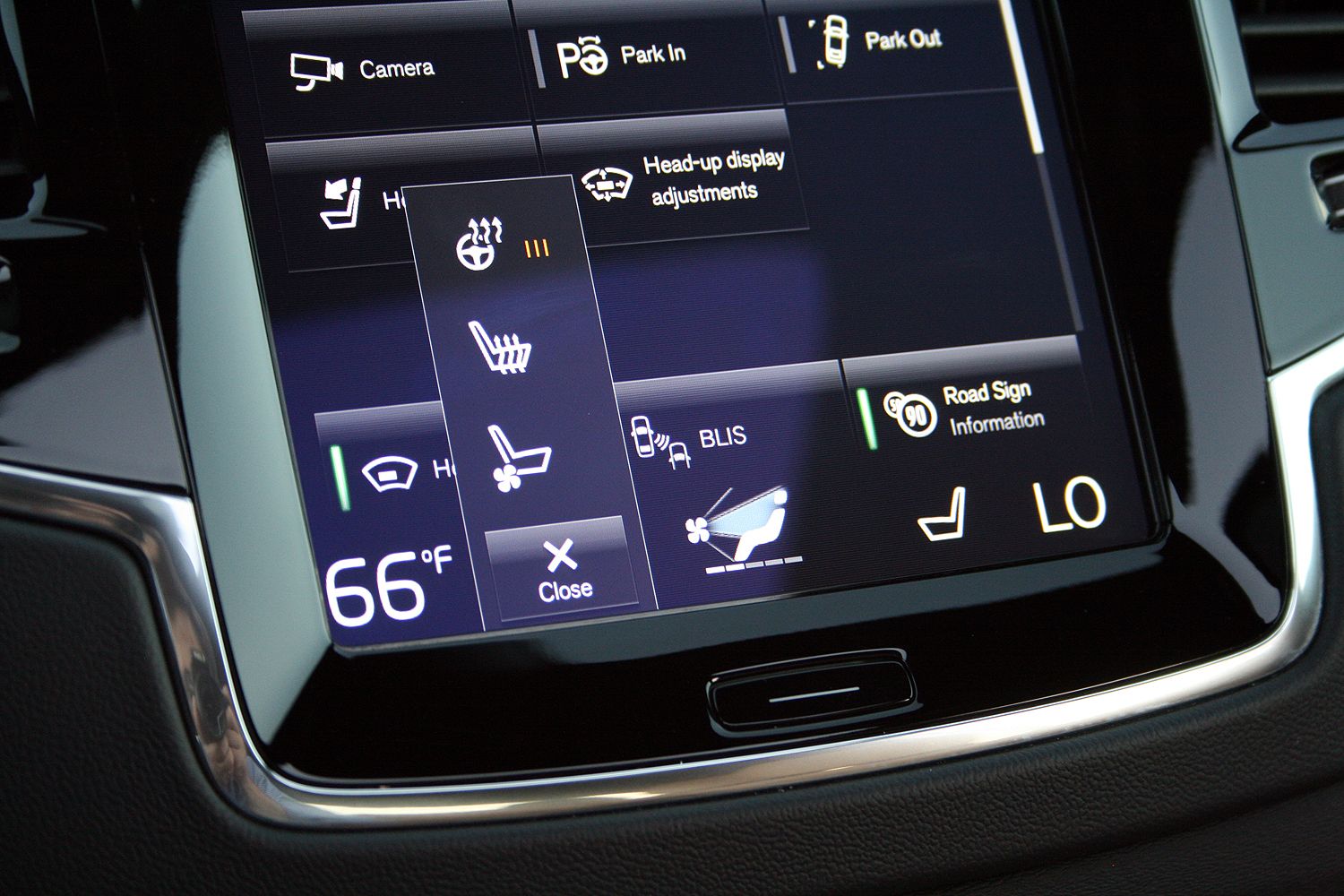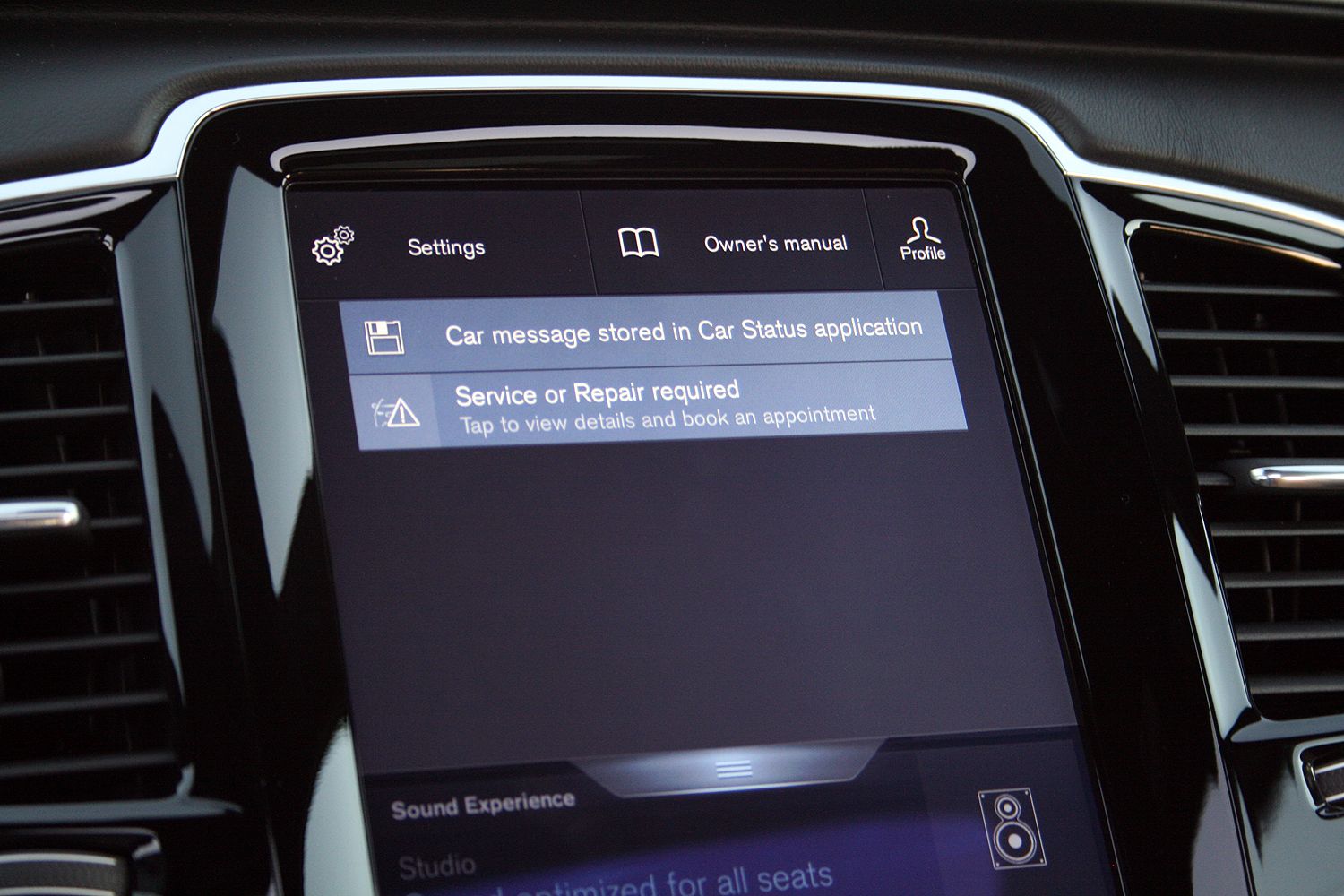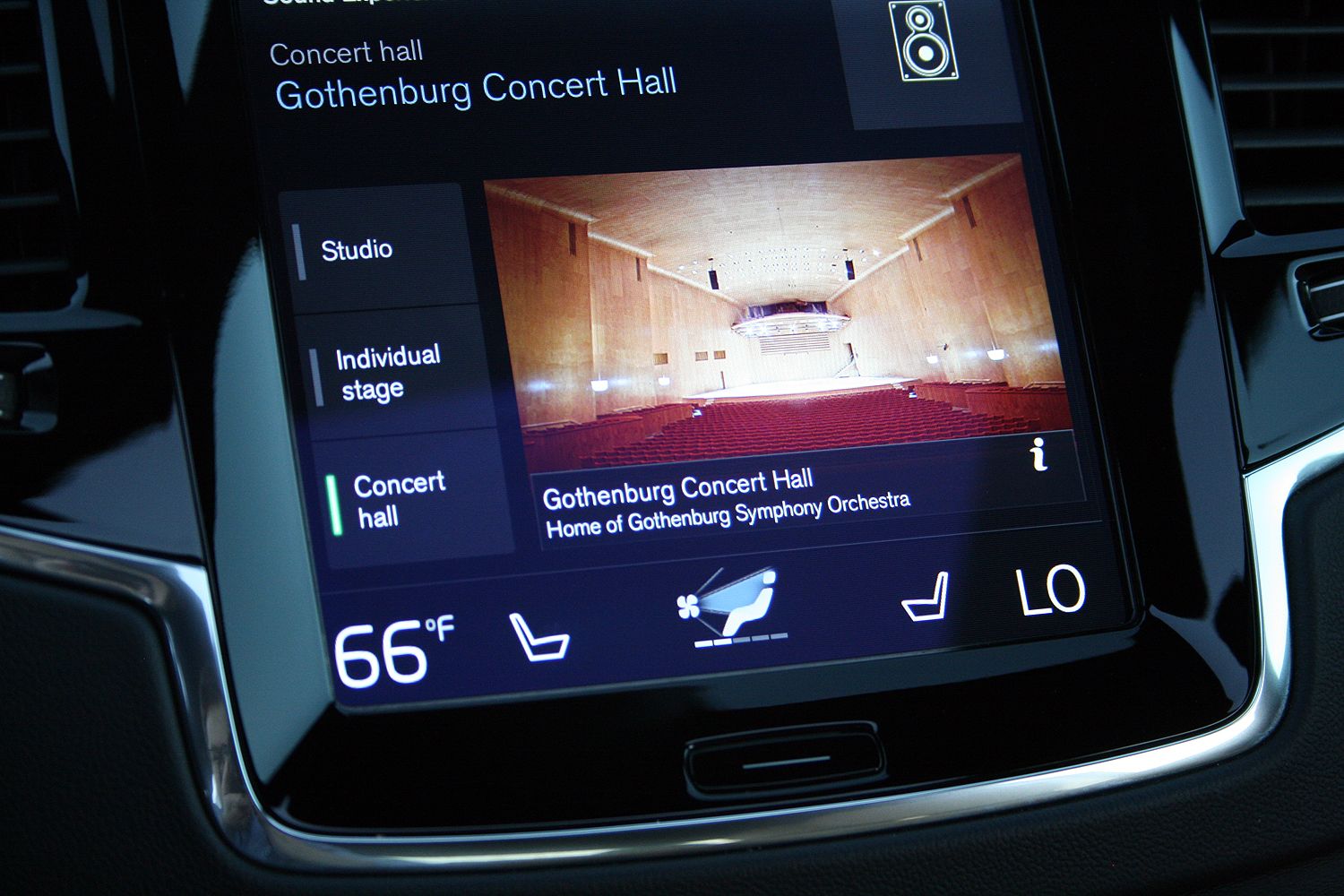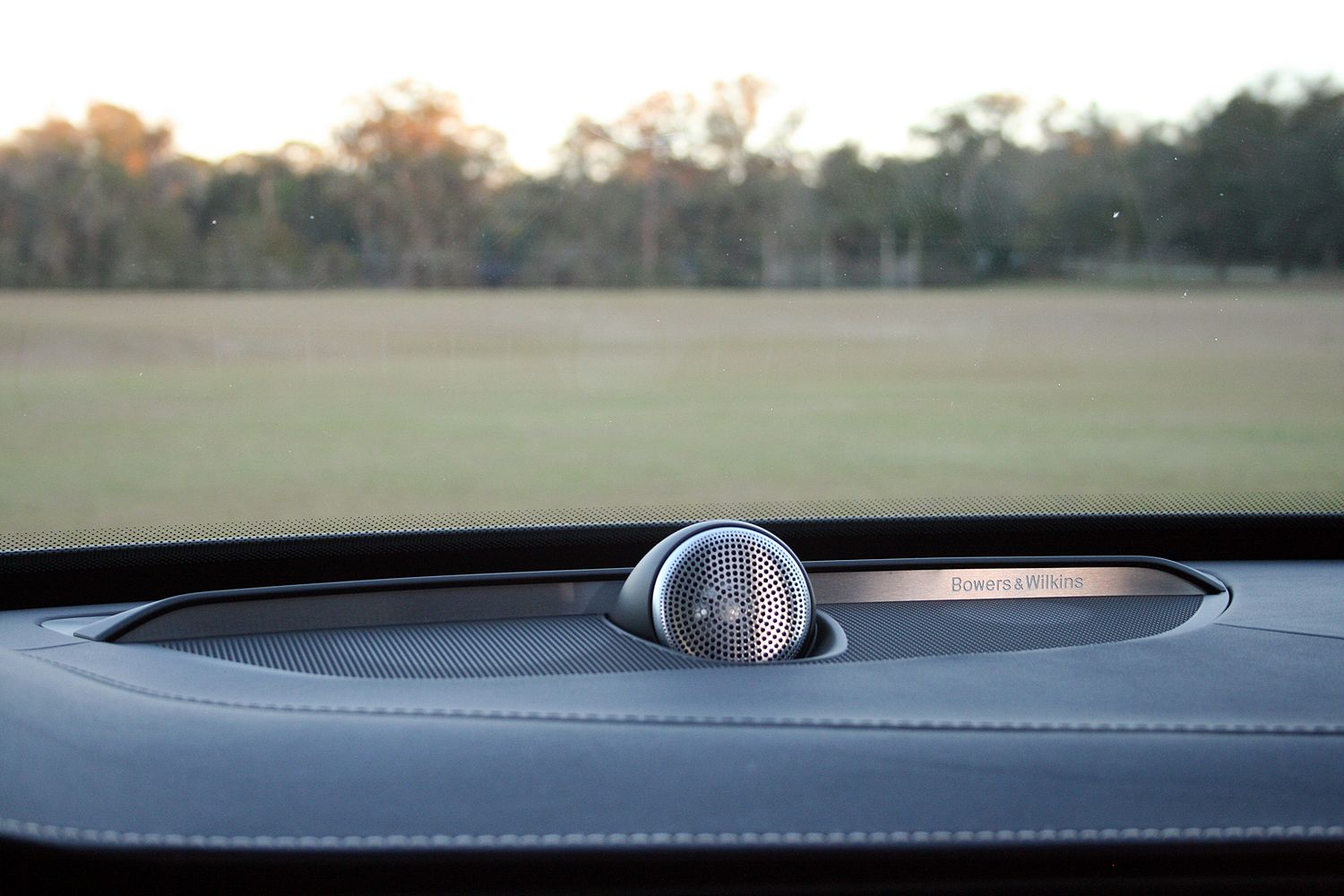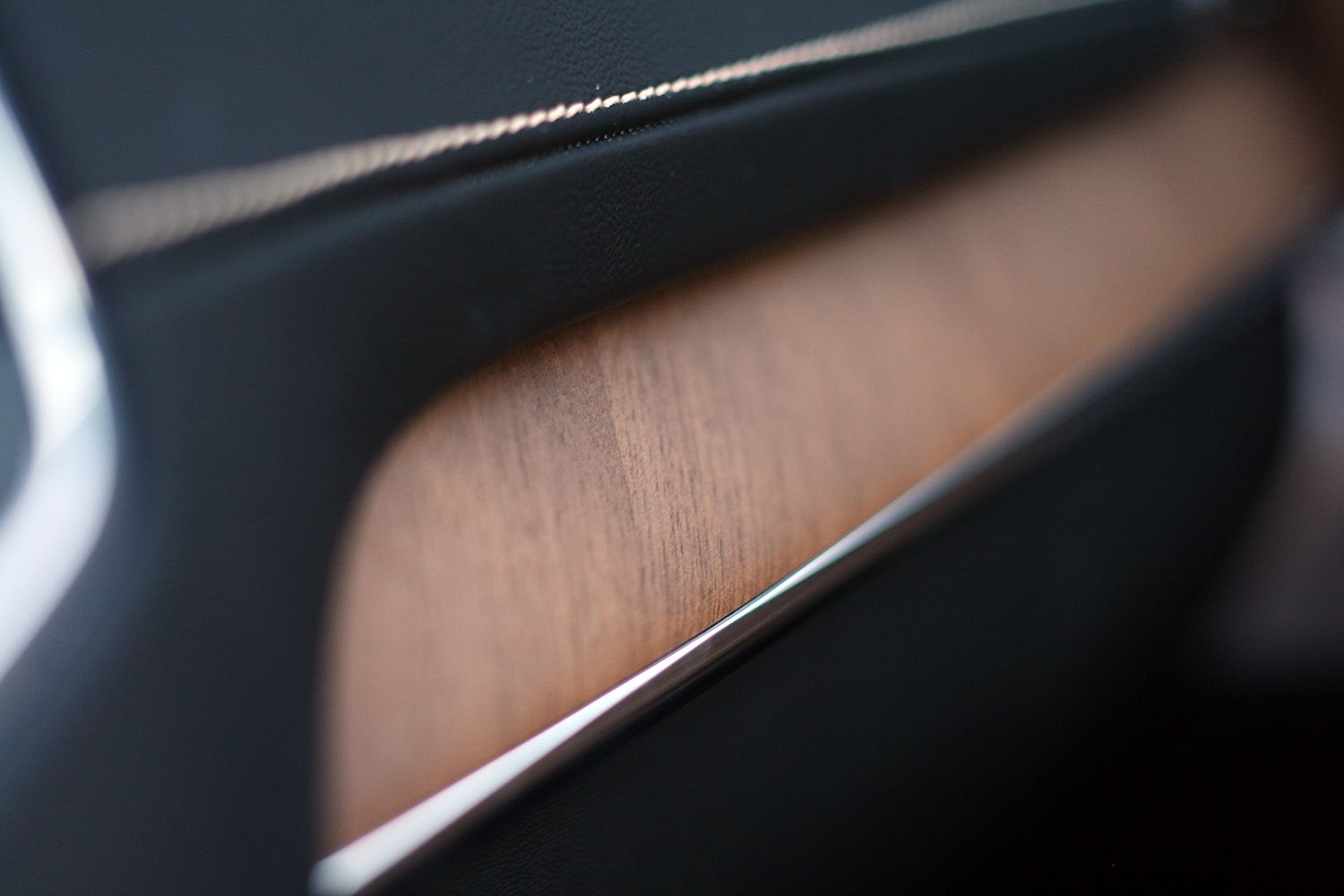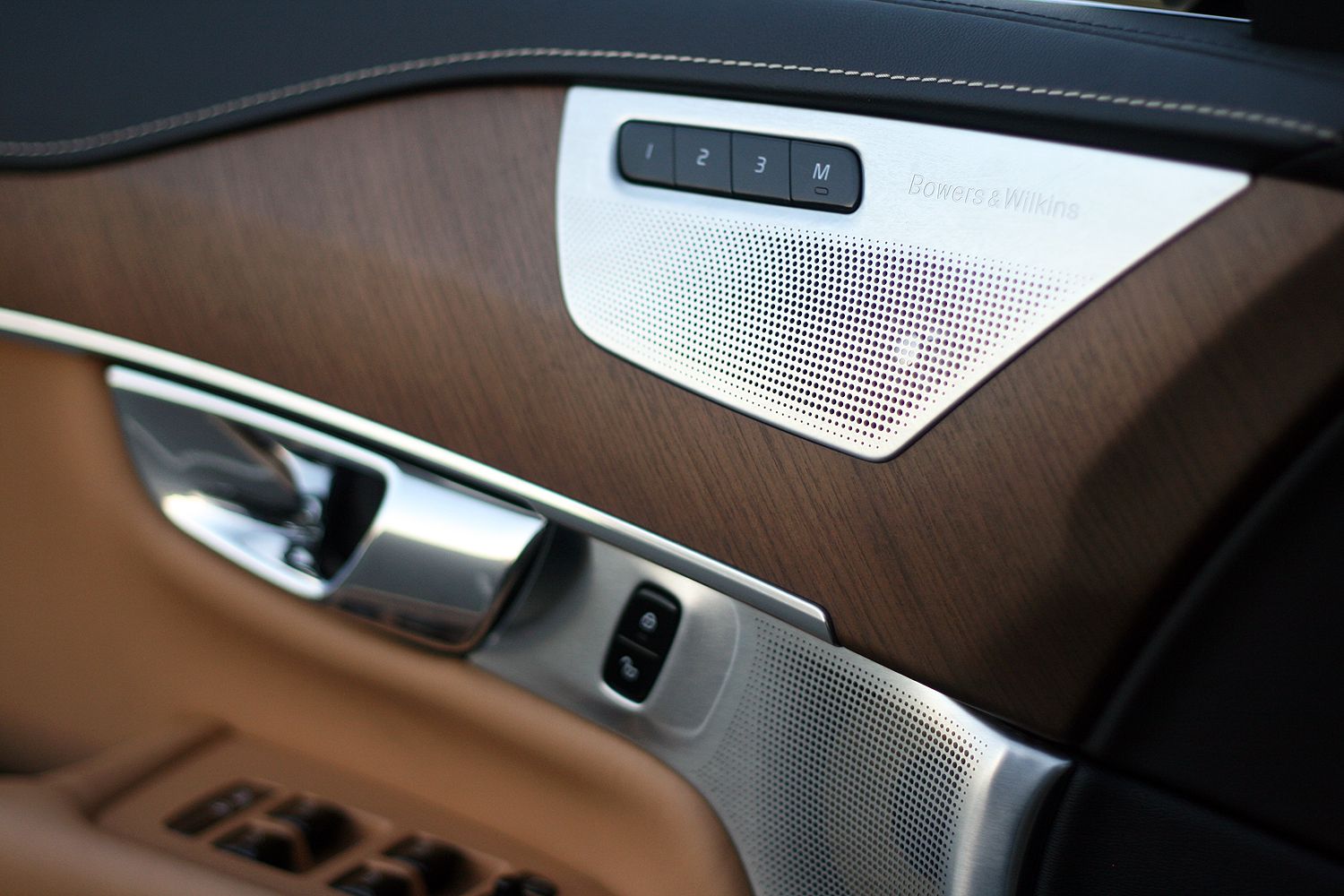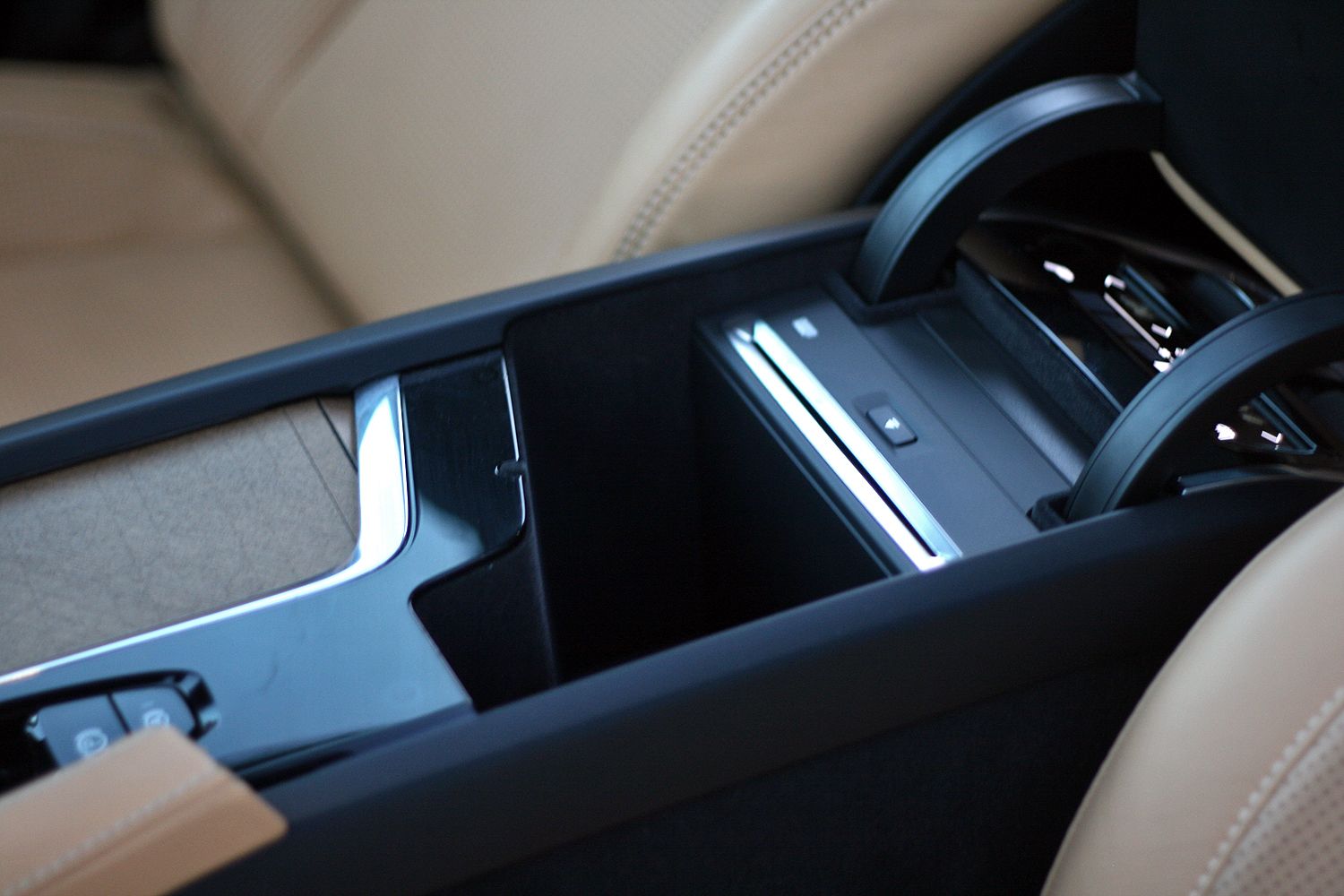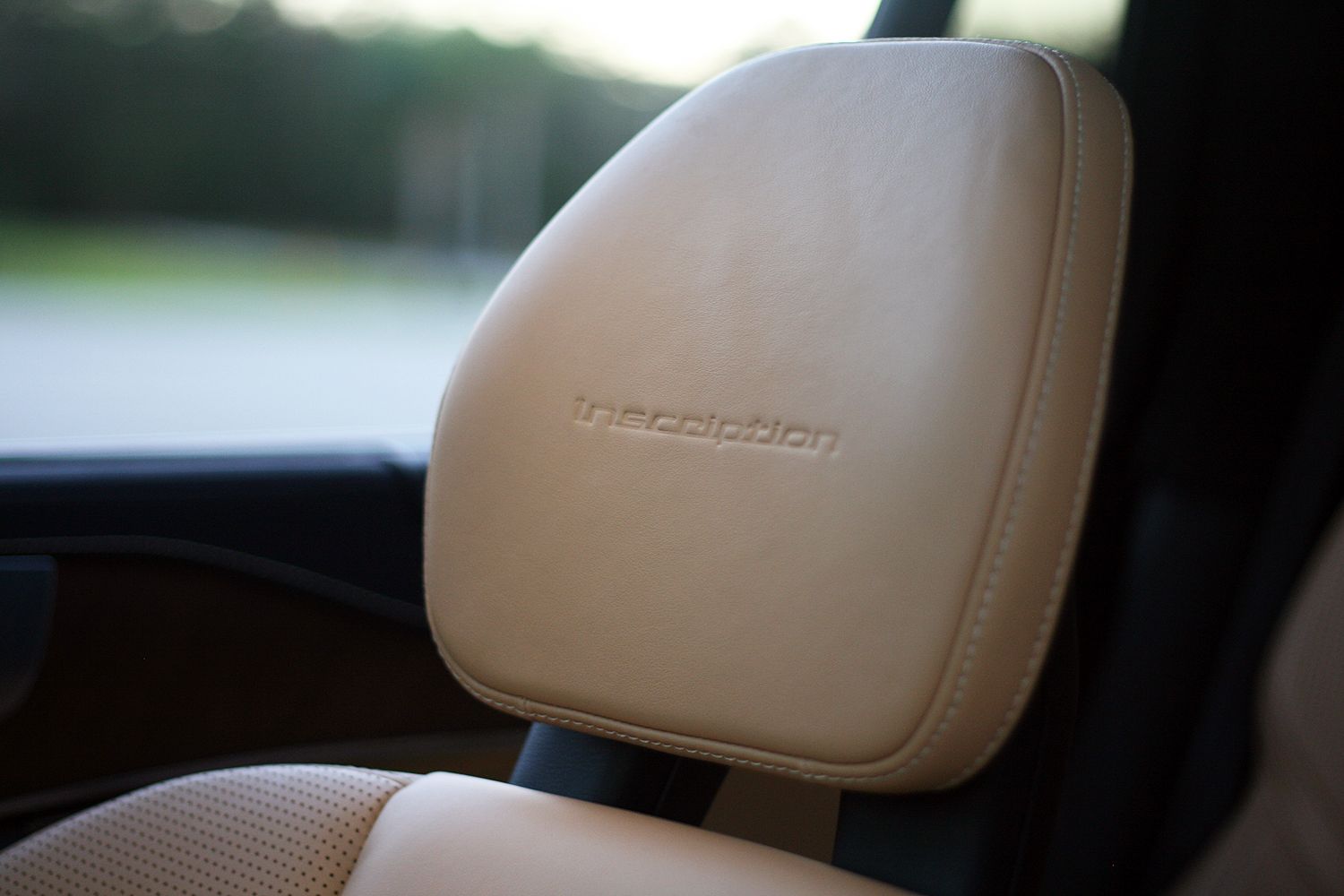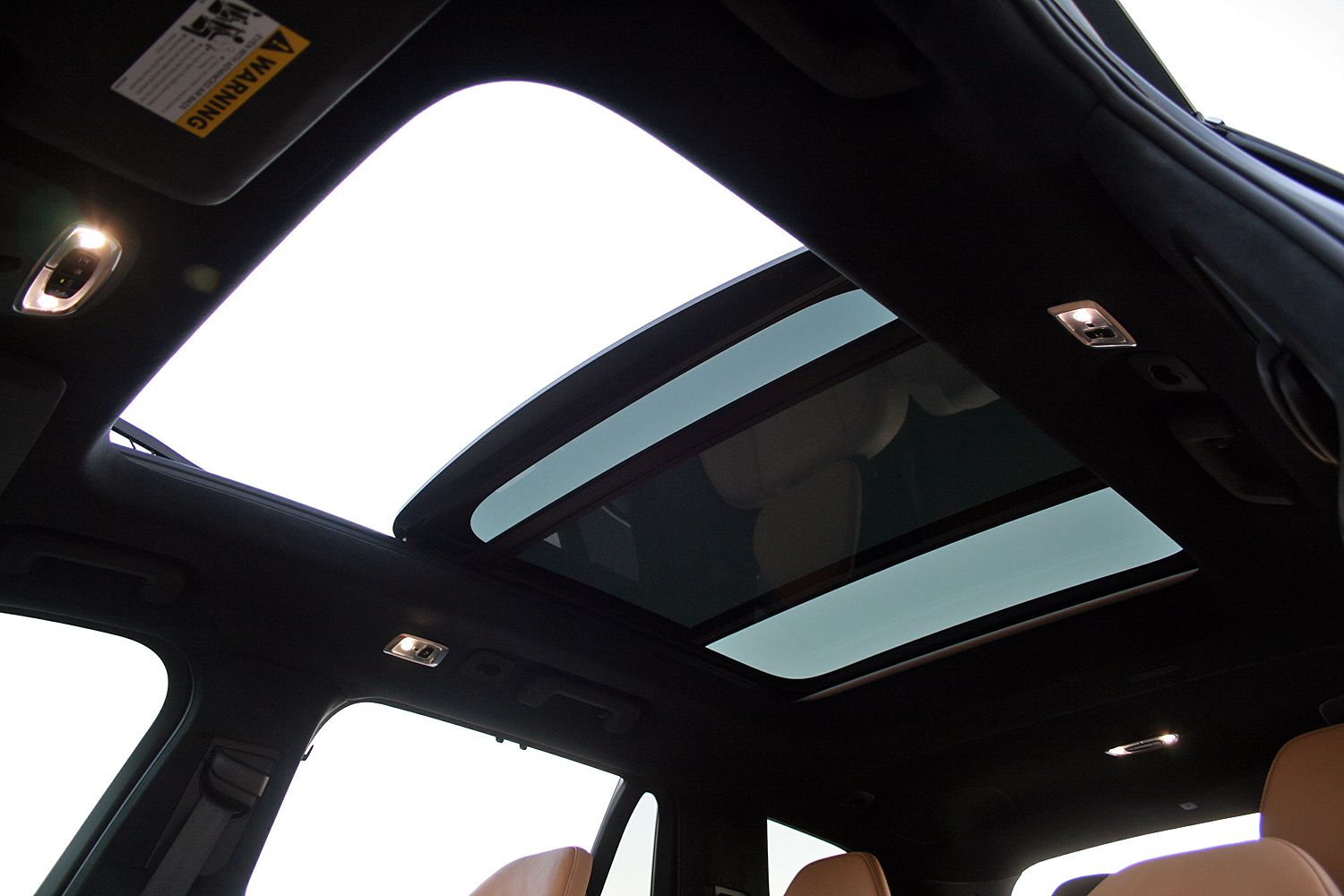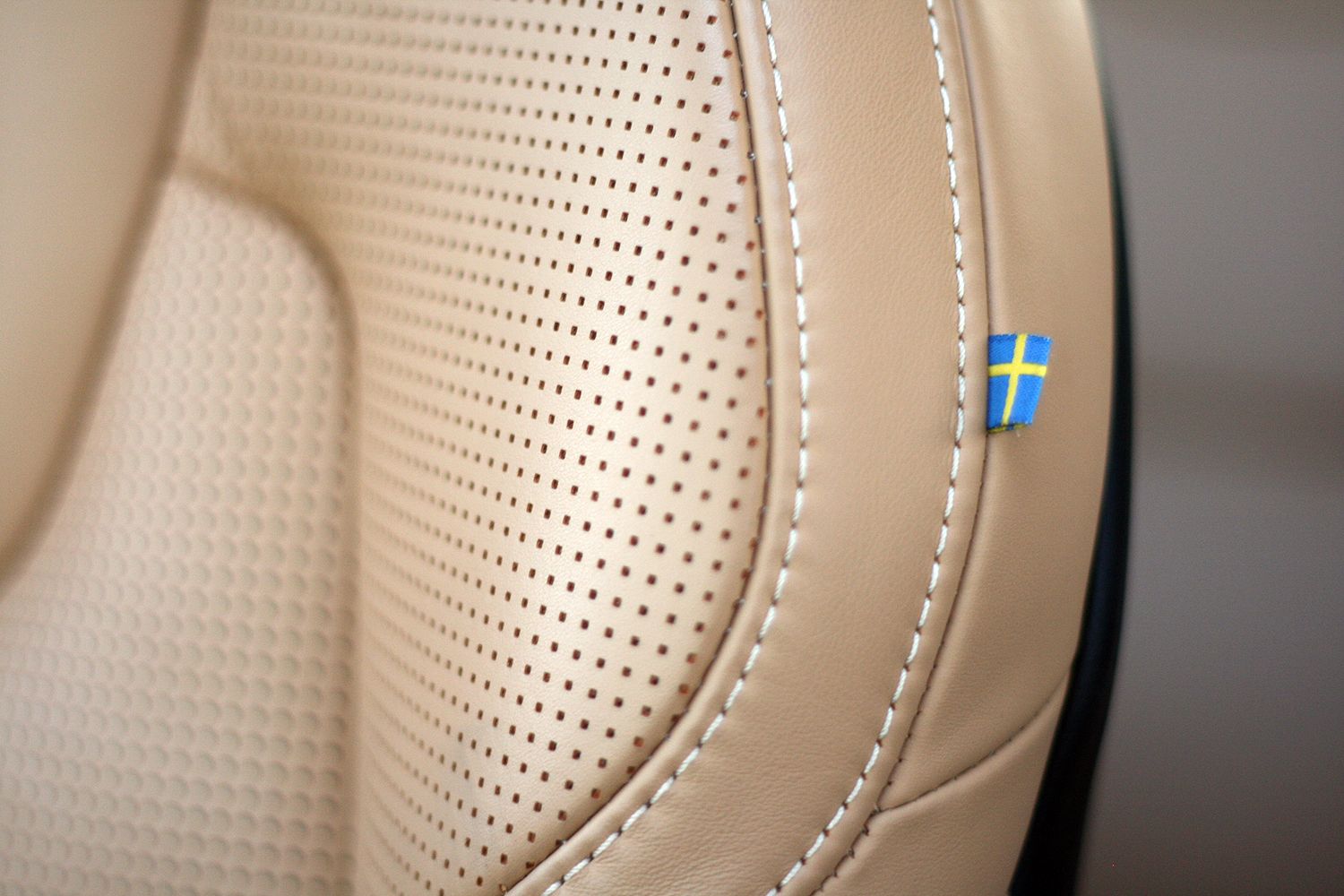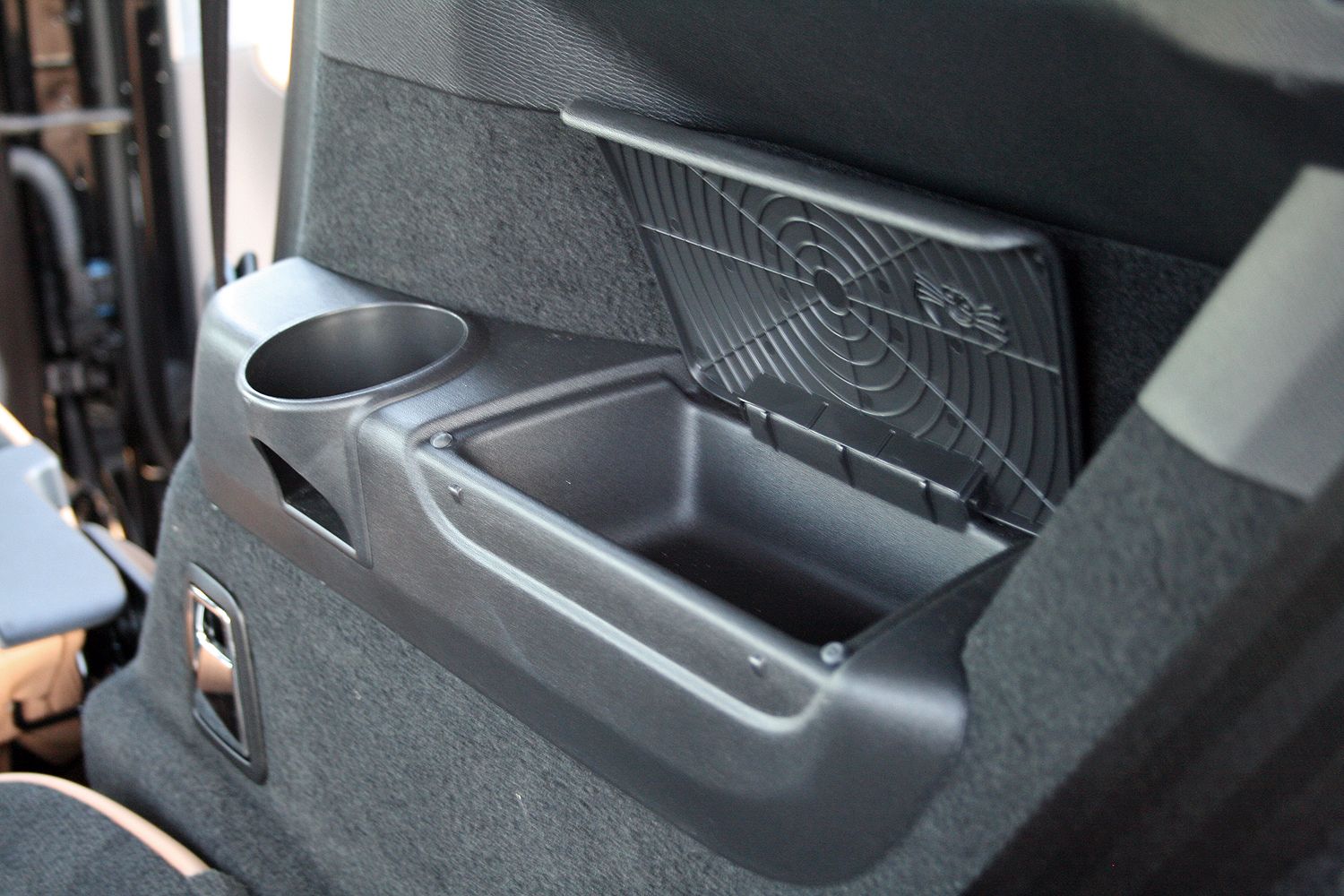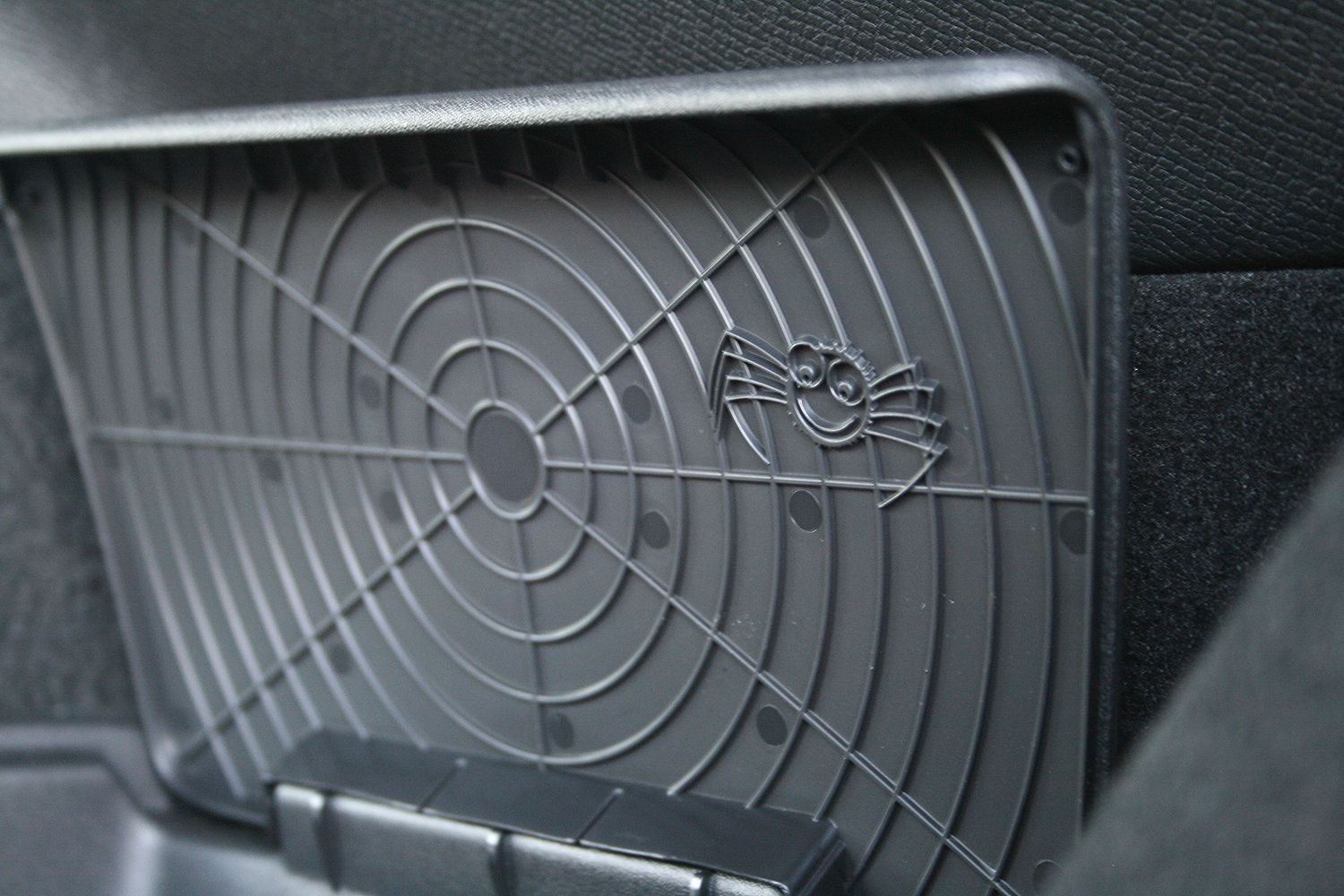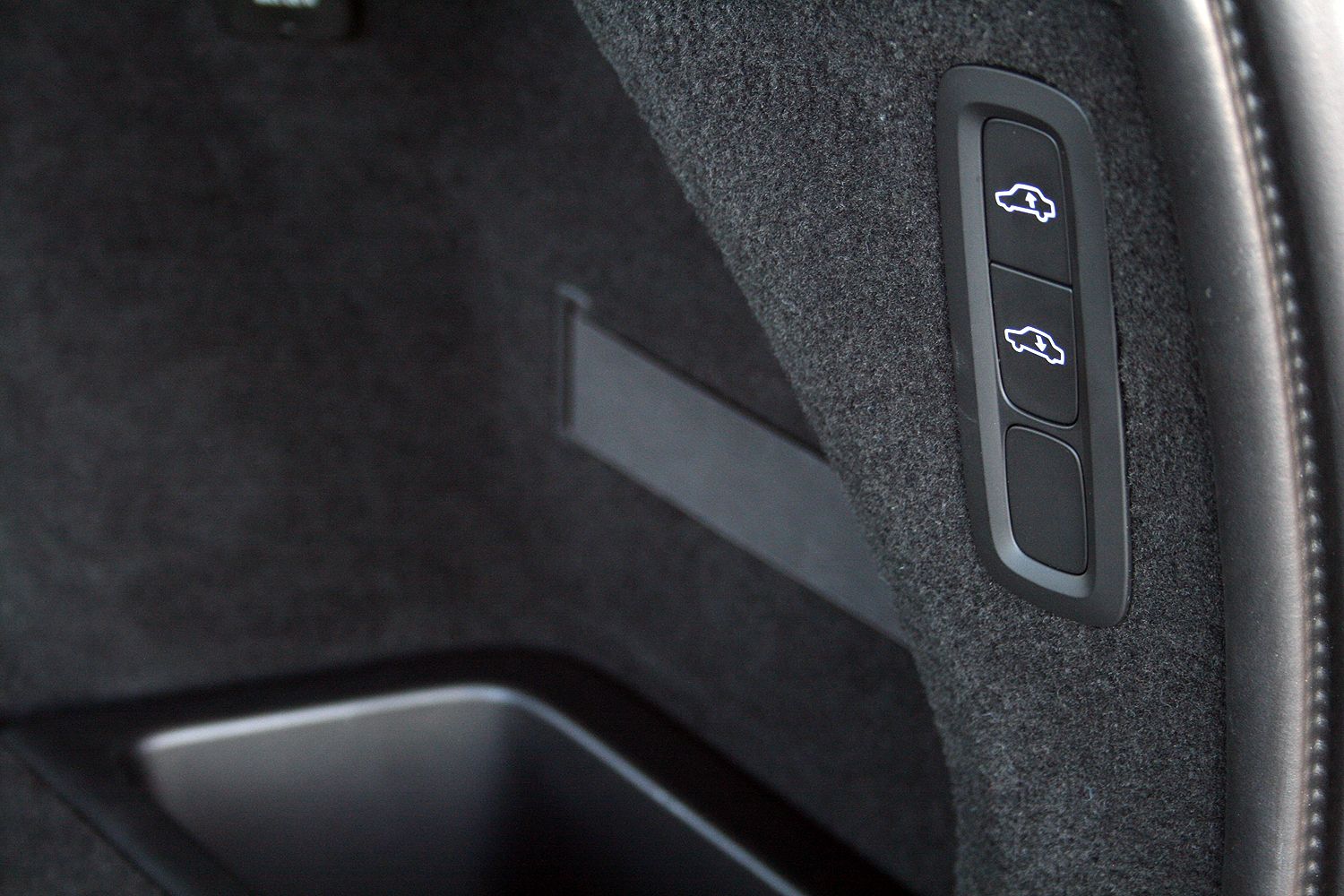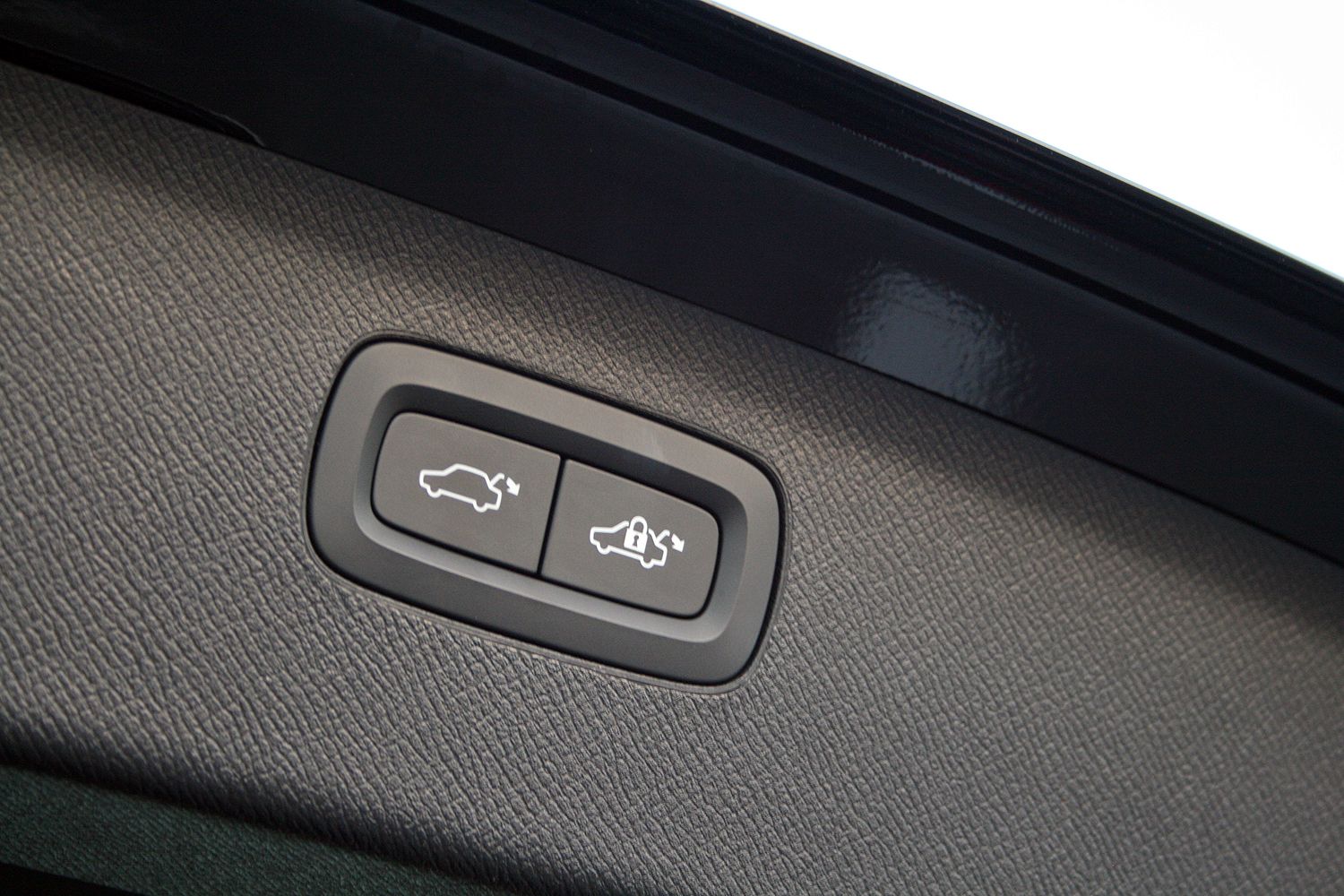Volvo has been making the XC90 since 2002, and with great success. The first generation SUV sold well all over the globe. Even in the U.S., the XC90 sold roughly 35,000 examples annually before the crash of 2009. Updates late in the first-generation XC90’s life kept it kicking, though with only modest sales in America. That’s all changing with the second-generation XC90, which debuted for the 2015 model year. A highbrow design, an opulent interior, sophisticated powertrain options, and a matured sense of luxury all bring the XC90 into the modern times. Even with the 2017 model already two years old, the Volvo SUV continues to look like a futuristic concept.
To get a better feel for the Swede, I spent a week driving a 2017 XC90 fitted with the T6 AWD powertrain and decked out with the high-end Inscription trim line.
For those unfamiliar, the XC90 (and most Volvos, for that matter) come standard in the Momentum trim. The XC90 is also available in the R-Design, the Inscription, and the range-topping Excellence trim. While the limo-like Excellence trim is absolutely stunning thanks to its reclining second row bucket seats and full-length center console, the Inscription trim provides all the luxury anyone without a chauffer could desire. Skipping the Excellence trim also keeps the XC90’s third-row seats.
So what’s it like to live with the 2017 Volvo XC90 T6 AWD Inscription? Keep reading to find out.
Continue reading for more information.
2017 Volvo XC90 T6 AWD Inscription – Driven
- Make: Array
- Model: 2017 Volvo XC90 T6 AWD Inscription – Driven
- Engine/Motor: inline-4
- Horsepower: 316 @ 5700
- Torque: 295 @ 2200
- Transmission: Eight-speed automatic
- [do not use] Vehicle Model: Array
Video Review
Exterior
The XC90 continues to look fresh despite its design being two years old. Its classy elegance is not overly stated, but rather speaks quietly about to its luxurious nature. Swedish people are known for humility rather than boasting, so the XC90’s outward appearance makes sense. The XC90 might have trouble standing out against its overtly ostentatious competitors, but its reserved nature is definitely appealing to a wide slice of the premium SUV buyer.
Up front, the grille wears Volvo’s iconic vertical slats crossed by the diagonal Volvo logo. The entirety of the front fascia also heavily resembles the new Volvo S90 sedan. This pleasant family resemblance is welcomed. Mirrored by the S90 are those “Thor’s Hammer” headlights. Down low, LED fog lights keep the theme alive. An understated bumper guard finished in brushed nickel reminds onlookers the XC90 a SUV, after all.
Around back, Volvo’s distinctive swooping taillights leave little doubt of the XC90’s family origin. The same brushed nickel bumper guard is found down low, wrapped around twin chrome-tipped exhaust pipes. The badging on the tailgate keeps the understated theme going, with no overtly large logos or lettering.
A handful of bright chrome touches neatly placed around the exterior do help brighten the otherwise black exterior of my tester. The large 21-inch wheels compliment the chrome door guards, side window trim, exhaust tips, and front grille. It’s just enough chrome without being flashy.
Overall, the XC90 uses the traditional three-box design style. However, its rounded edges and intricate detailing put it a cut above the average people-hauler. Its refined appearance might not be what AMG or M fans have come to love, but its civility is definitely appreciated – especially in person.
The Competition
One of the classiest three-row SUV on the market today is the 2017 Audi Q7. Recently redesigned, the new Q7 offers a high-tech, edgy look that is far more avant-garde than the Volvo XC90. That’s not a bad thing; it just comes down to personal preference with styling. The Q7 shares Audi’s current design theme, with its six-sided grille, LED headlights, and squarish looks.
Moderately strong character lines run rearward, both along the side windows from the headlights and between the wheel wells along the doors. A squared-off rear end features familiar Audi LED taillights, while large reflectors help break up the large bumper’s surface area. Big wheels, thin tires, and plenty of chrome access finish off the Audi Q7’s exterior.
Exterior Dimensions
|
Volvo XC90 |
Audi Q7 |
|
|
Wheelbase (Inches) |
117.5 |
117.9 |
|
Length (Inches) |
194.9 |
199.6 |
|
Width (Inches) |
84.3 |
87.1 |
|
Height (Inches) |
69.9 |
68.5 |
Interior
Like the outside, Volvo’s current design theme can be seen across the model range. Both the XC90 SUV and S90 sedan share very similar interior features, including the 12.3-inch digital instrument display and 9.0-inch touchscreen infotainment system. The included software in those screens, the steering wheel, center console, and ancillary switchgear are also shared. But don’t view this as a cost-cutting short cut that lessens Volvo’s luxury claims. Rather, these shared items pull Volvo’s lineup together, giving the S90, XC90, and likely future products a cohesive and consistent appearance.
In person, the XC90’s interior feels rich and well conceived. Every inch is purposefully covered beautiful materials – be it padded leather, open-pore wood, or satin chrome aluminum. Very few plastics are visible. Those that are feel thick and substantial to the touch. In fact, the only visible plastic is used as contrast around the infotainment screen, around the start/stop button on the center console, and for the steering wheel controls.
Comfort wise, the interior is top notch. The front seats have 10-way power controls with heating, cooling, and massaging. Both have three-position memory functions. The side bolsters, lumbar support, and front cushion extension are included in the power-operated list, as well. Rear passengers enjoy ample legroom, reclining seatbacks, a folding center armrest, and an independent HVAC system with four air vents. Manual sunshades in the side windows help keep the interior cool, as does the power-retractable sunshade over the panoramic moonroof.
Third row access is simple: just pull a lever and the outboard second-row seats tilt and slide forward. This can also be done with a child seat still in place (empty of course). One seated, the third row provides a decent amount of room, though NBA players won’t find the accommodations spacious. Kids and teens should be just fine, though. And speaking of kids and car seats, Volvo continues its tradition of providing a built-in booster seat. The center seat in the second row features a section that rises up, providing enough lift to keep the three-point seatbelt properly positioned on a young kid. You’ll want to confirm the proper height and weight requirements for use with your local and state laws, of course.
When it comes time to load cargo, all five rear-seating positions fold flat. The 50/50-split third-row seats manually fold by pulling a lever near the headrest. The 60/40-split second-row bench folds via levers at the base of the outboard seats. While power-folding seats might be more vogue, these won’t break in five year’s time.
While the XC90 is fantastic at hauling people and cargo, it doesn’t sacrifice driver comfort or high-tech features. Volvo’s Sensus infotainment system software is one of the best systems currently on the market. It is easily navigated, even for those not savvy with modern whiz-bang gadgetry. It houses the HVAC controls, most of the radio controls, and all other vehicle settings and options. To say the Sensus system is integral to the XC90 would be a vast understatement.
I found the system extremely easy to use and very Apple-like. In fact, the system features an iPad-like home button and its screen only requires a light touch to use. It recognizes multi-gesture controls like swipes, pinches, and pulls. While I’m not a big fan of HVAC controls placed digitally on the dash, the Sensus system does a fantastic job of making simple work of temperature and fan adjustments. The controls always remain at the bottom of the screen, offering quick access no matter what else is going on above. And yes, Sensus includes Apple CarPlay and Android Auto.
System settings are easily reached by swiping left from the home screen, while entertainment options are found by swiping right. Navigation, radio, and cell phone info are found on the home screen, along with whatever system or entertainment setting was last visited.
The driver’s digital gauge cluster is cleanly designed and features analog-like gauges for the tachometer and speedometer. The driver can choose to configure the cluster to show a digital speed readout, the navigation map, or a cleaner view with nothing but the two main “analog” gauges. I preferred the map and digital speed readout. Of course, the speed is also shown in the head-up display, as well.
In addition to the three-position memory function for the driver’s seat, the XC90 has programmable driver profiles. These allow different drivers to save settings like radio presets, seat settings, dive mode settings for the “individual” mode, and a handful of other customizable functions.
Speaking of the drive modes, a rotary wheel on the center console near the start/stop knob controls these settings. Push down then spin the knob to scroll. The options include Eco, Comfort, Off Road, Dynamic, and Individual. The rotary wheel is made from metal with a scalloped design. This same material is found on the start/stop knob, too, adding to the beauty and attention-to-detail that abounds within the cabin.
The Competition
The Q7 uses Audi’s new futuristic and linear design theme inside as well. Very few rounded lines can be found, and those that exist seem as if they were created by bending a straight line. The Q7 features a 2+3+2 seating arrangement. Its rear two rows fold down for cargo storage, just like any other SUV. Audi can’t boast of Volvo’s second-row advancements, however. There is no built-in booster seat, and the outboard chairs can’t tilt and slide for access to the third row. This hinders access to the rear with car seats in place. Both rows are power-folding, however.
Audi’s approach to its infotainment system is far different than Volvo’s. Rather than an iPad-like touch screen, Audi uses a small, retractable screen on the dash controlled by a track pad ahead of the gear shifter. It also responds to voice commands. Much of the Q7’s settings and features can be controlled through Audi’s digital cockpit. It’s far more configurable than the XC90’s, offering view of 3D Google maps, radio info, cell phone contacts, and a bevy of other information. It might not be as intuitive as Volvo’s Sensus system, but it’s still a fantastic design.
The Competition
|
Volvo XC90 |
Audi Q7 |
||
|
Volvo XC90 |
Audi Q7 |
38.9/38.5 |
38.4/38.8/35.9 |
|
Head Room first/second/third row (Inches) |
40.9/37.0 |
41.7/38.8/29.2 |
|
|
Leg Room first/second/third row (Inches) |
57.7/56.5 |
59.5/58.5/49.4 |
|
|
Shoulder first/second/third row (Inches) |
85.7 |
71.6 |
Drivetrain
Volvo has an impressive powertrain that rides the cutting edge of modern design for internal combustion engines. The engine is called the T6. It is a 2.0-liter four-cylinder that uses both supercharging and turbocharging to wring out 316 horsepower and 295 pound-feet of torque. The all-aluminum engine also features direct fuel injection and an automatic start/stop system.
So how does Volvo combine a supercharger and turbocharger? Well, superchargers work best at lower rpm, giving instant boost when needed. Turbochargers love high engine revs and lost of exhaust flow. Volvo engineers mix the two by having the supercharger work below 3,500 rpm and the turbo spool up thereafter. An electro-magnetic coupler on the supercharger disengages its Roots-type screws from the engine’s accessory belt, allowing the turbo to take over with nary a gap in boost. It’s an unperceivable transition of power that makes the most of each forced-induction systems’ best traits.
The engine is mated transversely between the front wheels to an eight-speed automatic transmission. Volvo’s Geartronic transmission hardly interrupts the engine’s smooth flow of power, shifting with a silky smooth transition, regardless of driving styles or drive modes. Dynamic mode does quicken the shifts, however, while having each gear last longer through spirited acceleration.
The T6 powertrain is also equipped with AWD. Like most AWD systems today, it monitors wheel slip and sends power where it’s needed. Volvo’s Off Road mode activates Hill Descent Control, increases ground clearance thanks to the air suspension, and lightens the steering for better control in low-speed, technical situations.
As for performance, the XC90 will hit 60 mph in 6.0 seconds, while hitting a limited top speed of 132 mph. The EPA estimates fuel economy for the T6 AWD Inscription model to be 20 mpg city, 25 mpg highway, and 22 mpg combined. The T6 does require premium fuel, as well.
The competition
The Audi Q7 comes powered one of two engines: a 2.0-liter turbocharged four-cylinder or a 3.0-liter supercharged V-6. The base 2.0-liter is found elsewhere in the Audi lineup, including the A4. Its move into the Q7 doesn’t cut any of its high-tech features, like dual overhead cams. It uses a cast-iron block with aluminum heads, but is still fairly light. It produces 252 horsepower and 273 pound-feet of torque.
The 3.0-liter supercharged V-6 is an all-aluminum, longitudinally mounted engine with direct fuel injection and dual overhead cams. An intercooler keeps the intake air temperatures in check. It produces 333 horsepower and 325 pound-feet of torque. An eight-speed automatic transmission does the shifting for both engines, and Audi’s quattro AWD system comes standard.
The 5,080-pound Q7 is capable of hitting 60 mph in 5.5 seconds, with the V-6 beating the XC90. Its top speed is governed at 128 mph. The EPA estimates the Q7 to get 18 mpg city and 27 mpg highway, which is competitive with the Volvo. Opting for the less powerful four-cylinder only saves one mpg, netting an EPA-estimated 20 mpg city, 25 mpg highway, and 22 mpg combined.
|
Volvo XC90 T5 |
Volvo XC90 T6 |
Volvo XC90 T8 Hybrid |
Audi Q7 2.0 |
Audi Q7 2.0 |
|
|
Engine |
In-line 4-Cylinder Turbocharged |
In-line 4-Cylinder Turbocharged & Supercharged |
In-line 4-Cylinder Turbocharged/Supercharged Engine w/87 hp Electric Motor |
2.0-liter four-cylinder |
3.0-liter V-6 |
|
Horsepower |
250 HP @ 5,500 RPM |
316 HP @ 5,700 RPM |
400 HP @ 6,000 RPM |
252 HP @ 5,000-6,000 RPM |
333 HP @ 5,500-6,500 RPM |
|
Torque |
258 LB-FT @ 1,500-4,800 RPM |
295 LB-FT @ 2,200-5,400 RPM |
472 LB-FT @ 2,200-5,400 RPM |
273 Lb-FT @ 1,600-4,500 RPM |
325 Lb-FT @ 2,900-5,300 RPM |
|
0 to 60 mph |
6.5 |
6.1 seconds |
5.3 seconds |
7.1 seconds |
5.7 seconds |
|
Top Speed |
130 mph |
130 mph |
132 mph |
130 mph |
130 mph |
|
Weight |
4,293 Lbs |
4,627 Lbs |
5,059 Lbs |
4,696 Lbs |
4,938 Lbs |
|
Towing |
4,000 Lbs |
5,000 Lbs |
5,000 Lbs |
4,400 Lbs |
7,700 Lbs |
Behind the Wheel
The Volvo XC90 is a smooth operator – from its acceleration to cornering, the SUV is easy to live with in terms of comfort. The drive modes certainly make a difference, too. In Comfort mode, the XC90 is a pleasure to drive. Its steering is moderately weighted and throttle is linear and controlled. The air suspension provides an easy ride over bumps with an acceptable amount of body roll around corners. Dynamic mode tightens everything up, including the steering, suspension, and throttle response. The powertrain comes alive with what feels like more power thanks to the transmission holding gears longer. The ride becomes stiffer, and the ride height drops down a few inches, allowing the bodywork to hug the 21-inch wheels.
The XC90 does have a few shortcomings, however. Road noise on rough pavement is more intrusive than expected. The four-cylinder’s music at higher revs isn’t enjoyable, and the automatic start/stop system suffers from a jerky engagement when restarting.
These complaints aren’t enough to quell my high praises for the XC90, but they do dampen the love a tad. Nevertheless, I’d still freely recommend the XC90 to anyone looking for a well appointed and technologically advanced three-row luxury SUV.
Pricing
The 2017 Volvo XC90 comes in four trim levels: Momentum, R-Design, Inscription, and Excellence. The Momentum carries a starting price of $45,750. Prices then range to $104,900 for the limo-like Excellence trim. Nestled between the two is my Inscription tester. It’s starting price is listed at $57,350 on Volvo’s Build-And-Price website.
My tester hardly remained unaltered, with quite a number of packages and options added on. Included in the mix is the Vision Package for $1,950; the Climate Package with HUD for $1,950; the Convenience Package for $1,800; the Luxury Package for $2,900, the Bowers & Wilkins Premium sound system for $2,650; the Metallic Paint for $560; the Second-Row Booster Chair for $250; the 21-inch wheels for $750; the four-corner air suspension for $1,800; and the destination fee of $995.
All told, my tester requires a $72,805 check to take home.
As for those options, here’s the breakdown. The Vision Package includes the 360-degree Surround View Camera, retractable rear-view mirrors, auto-dimming interior and side mirrors, and Blind Spot Information System with Cross Traffic Alert. The Climate Package with HUD includes heated washer nozzles, Graphical Head-Up Display, heated rear seats, and a heated steering wheel. The Convenience Package includes Volvo’s Pilot Assist Semi Autonomous Drive with Adaptive Cruise Control, Grocery bag holder, HomeLink, a 12-volt power outlet in the cargo area, a compass in the rearview mirror, and Park Assist Pilot + Front Part Assist. Lastly, the Luxury Package adds the backrest massaging front seats, Nubuck headliner, front and rear grab handles in leather, and leather sun visors.
Audiophiles will find the $2,650 a worthy price to pay for the Bowers & Wilkins sound system. It includes three sound settings for studio, front row concert, and the Gothenburg Concert Hall. Each are tuned differently and provide a unique sound. As someone with a classical music background, I found the Gothenburg setting with SiriusXM’s Symphony channel an immensely satisfying and goose bump-inducing experience.
The Competition
The 2017 Audi Q7 has a starting price of $49,000. Three trim levels can be had: Premium, Premium Plus, and Prestige. The Premium and Premium Plus can be had with either engine option, but the range-topping Prestige only comes with the supercharged V-6.
Opting for the V-6 in the Premium trim bumps the price to $55,500. The starting price for the mid-grade Premium Plus is $53,00, while the V-6 version goes for $59,500. Opting for the Prestige will cost at least $65,000, though options and extra add to the price.
|
Audi Q7 Premium 2.0 TFSI |
$49,000 |
|
Audi Q7 Premium 3.0 TFSI |
$55,500 |
|
Audi Q7 Premium Plus 2.0 TFSI |
$53,000 |
|
Audi Q7 Premium Plus 3.0 TFSI |
$59,500 |
|
Audi Q7 Premium Prestige 3.0 TFSI |
$65,000 |
Other Notable Competitors
2017 Land Rover Discovery
Land Rover’s new Discovery is here and it looks awesome. This replacement for the LR4 is an all-new SUV with new bones and an updated soul. Gone is the body-on-frame design, replaced with the Range Rover and Range Rover Sport’s unibody chassis. The Disco’s new design also resembles the Range Rover Sport, though with less bling and more injected utility.
The Land Rover is powered by the carry-over 3.0-liter supercharged V-6 found in the LR4 and several other Jaguar Land Rover products. It generates 340 horsepower and 332 pound-feet of torque. For those wanting more torque, the new 3.0-liter V-6 turbodiesel is available with 443 pound-feet. Horsepower is rated at 254. Both come mated to a ZF eight-speed automatic transmission and Land Rover’s full-time 4WD is standard, of course.
And as for its 4WD, the Land Rover is very much built for off-roading adventures. The Disco has an air suspension with a high-riding off-road setting. The Terrain Response 2 system is present, with different off-road setting for the driver to choose from. Needless to say, if going off the beaten path is on the agenda, the Land Rover Discovery is the proper choice.
Read more about the 2017 Land Rover Discovery here.
2017 Acura MDX
Acura did itself good by shaking that ugly beak-style front grille for something a big more tasteful. The rest of the new MDX follows suit, looking far better than it ever has. Based on the Honda Pilot, the MDX offers three rows of seating with an insaine amount of practicality and comfort. For those who care more about cup holders than off-roading or a striking handsome design, the MDX is the right choice. It’s the upper-middle class’ utilitarian family hauler.
The MDX is powered by Honda’s familiar 3.5-liter i-VTEC V-6. It cranks out 290 horsepower and 267 pound-feet of torque. A nine-speed automatic does the shifting, while Acura’s optional Super Handling AWD uses torque vectoring to assist in cornering, while also providing grip in low-traction situations. Fuel-sipping fans will opt for the MDX Hybrid. It’s powered by a 3.0-liter V-6 and three electronic motors. A battery pack keeps things charged while, getting better fuel economy.
Pricing starts at $44,050 for the 3.5-liter and FWD. Adding AWD tacks on $2,000. Adding packages like the Entertainment, Technology, and Advance packages pushes the price to roughly $58,000. Other options push the price further north, but bring plenty of added benefits.
Find out more about the 2017 Acura MDX here.
Conclusion
The Volvo XC90 is a superb example of retrained luxury combined with everyday utility. The SUV works as an SUV, but also has enough posh to be parked out front by valets. It’s LED-encrusted headlights, smooth lines, curvaceous taillights, and large wheels all play into the high-class design. The padded leather, open-pore wood, and metallic detailing inside hardly disappoint. Cap that with Volvo’s high-tech T6 powertrain, and the XC90 makes for a highly desirable vehicle.

